
The Man in Seat 61

A beginner's guide to
Train travel in britain.
- Buy train tickets
- Buy ferry tickets
- Book a hotel
- Privacy & cookies
- Home
Train travel UK & Ireland...
Train travel in europe..., train travel in asia..., train travel in africa..., train travel in america..., train travel in australasia, 20+ operators, one network.
Click here for the best map of the UK train network
Here is a quick guide to train travel in Britain . Since 1995, Britain's rail network has been run by over 20 private train companies, but they work together as National Rail with co-ordinated fares & ticketing. You can find train times & fares for all train operators all on one website, you can buy a train ticket between any two stations, tickets are normally valid on any operator's trains.
A typical inter-city train
Trains come in many different types & company colours, but they all work together as National Rail. This is an LNER Azuma train, used on the East Coast Main Line linking London-York-Newcastle-Edinburgh. You'll find seating plans for key British trains on the seat numbering plans page .
How to check train times & fares
To check train times & fares , use the National Rail website www.nationalrail.co.uk . This is provided by RDG (Rail Delivery Group) on behalf of all train operators, and it shows train times & fares for all routes and all operators. RDG was formerly (perhaps more accurately) called the Association of Train Operating Companies.
Pro tip: You can look up fares & restrictions at www.brfares.com although this is an online version of rail industry fares manuals so takes some getting to grips with. However, I use it to see the range of fares available between two points without using a journey planner.
To check train times & fares by phone , call National Rail Enquiries on 0345 7 48 49 50, if you are located outside the UK call +44 20 7278 5240. Lines open 24 hours a day, calls from UK phones are charged at local rates.
Is your train on time? Go to www.nationalrail.co.uk/live-trains and enter the name of your station to see a live online departure board showing train arrivals & departures in the next hour or two, and whether they are on time or not.
Pro tip: If you want a really detailed version with planned train formations and rolling stock type, try www.realtimetrains.co.uk .
Maps of the rail network
Map of the national rail network : Click here for the best national rail map . This is the map which used to be included in the big printed Great Britain National Timetable, and in my opinion it's the still best map of the network, sufficiently schematic to see the lines, sufficiently geographic to see where they go. The map is sadly no longer available on the National Rail website, where none of the replacement maps are as good.
Other maps : There are other train network maps listed on www.nationalrail.co.uk/ passenger_services/maps , including maps of the London area rail network, the London & Southeast rail network, and rail networks in other major cities.
I also recommend rail fare expert Barry Doe's UK rail map which shows which train operator runs where, www.barrydoe.co.uk/railmap52.pdf .
Station plans: You can find a plan of most stations showing layout, platforms & facilities at www.nationalrail.co.uk/stations .
How to buy tickets
Buy train tickets for any train journey in Britain at tfw.wales .
Transport for Wales is one of the 20+ British train operators and they sell tickets for all routes, all trains (except sleepers ), all operators, and charge the official price with no added booking fee.
You'll be offered a mobile ticket for many journeys, simply show the barcode on your phone, tablet or laptop.
Or you can collect tickets from the self-service machines at any main station. You'll need the original credit or debit card with you as ID, if you have any problems you can also collect from the staffed ticket office.
Or they will post tickets to any UK address for a fee, with guaranteed next day delivery by 1pm.
Overseas users: If you have any problems getting tfw.wales to accept your credit card, buy from www.thetrainline.com instead.
Tip: There's no need to find the 'right' train operator website , or to compare prices on different sites as all train operator websites including tfw.wales sell tickets for all British trains at exactly the same prices from exactly the same National Rail fares database.
Tip: There are 3 types of fare, Anytime, Off-Peak & Advance. Anytime fares are good for any train. Off-Peak fares are good for any train outside Monday-Friday peak periods. Advance fares are only good for the specific train you book with limited or no changes or refunds allowed. For a more detailed explanation, see my quick guide to the 3 types of train ticket .
Tip: Avoid booking fees by using a train operator website such as tfw.wales as they don't charge a booking fee. Most independent third-party ticket retailers add a small booking fee on top of the ticket price, including www.thetrainline.com , www.raileasy.com , www.mytrainticket.co.uk & www.redspottedhanky.com . For example www.thetrainline.com charges around £1.50 booking fee. There are a few exceptions, for example trainsplit.com doesn't charge any fee, but will share any saving if a split ticket saves you money, and new independent retailer railsmartr.co.uk also charges no fee.
Tip: Train ticket booking normally open 8-12 weeks ahead , beware of trying to book too far ahead as explained here . 90% of all British train tickets are bought less than a month before travel. But here's a good idea: Sign up for a free email 'ticket alert' when ticket booking opens for the specific route you want, allowing you to snap up those cheap fares as soon as they are released (It's worth trying later in the day if you don't immediately see any cheap deals available). To sign up for an alert, go to www.thetrainline.com , click Tools & Apps top right, then click Ticket alert. Some other train companies also offer this service.
Tip: Choose your exact seat from a plan. A few operators allow you to choose a specific seat from a seat plan, but only if you use their own site to book their own trains. Although I personally prefer the booking engine used by tfw.wales , independent split ticketing website trainsplit.com lets you choose an exact seat on most LNER, Avanti West Coast, Cross Country & East Midlands Trains services, all on one site - plus it charges no booking fee, and it checks to see if split tickets could save you money, too.
You'll find seating plans for some key British trains on the seat numbering plans page .
The National Rail website www.nationalrail.co.uk doesn't sell tickets itself, but after answering your enquiry it will offer you a choice of ticket selling websites, with the operator most relevant to your journey at the top of the list.
To buy train tickets by phone , call any train operator telesales line. They all sell the same tickets at the same prices, for example, Avanti West Coast on 0345 528 0253.
Tips for finding the cheapest tickets
Book longer-distance trips in advance. Advance fares are the cheapest ticket for medium & long-distance journeys. The price varies like budget air fares, the earlier you book, the cheaper they're likely to be. Buy tickets for any route in Britain at tfw.wales or any other train operator website. You can also buy at www.thetrainline.com , but they add a small booking fee.
Advance fares are only good for the specific train you book, no refunds, limited or no changes to travel plans. If you want flexibility, you need to buy an Off-Peak fare or Anytime fare .
Even booking the night before can save money: Bookings for Advance tickets theoretically close at 18:59 the day before travel. But in practice they remove any remaining Advance fares at 23:59 on many routes, and one or two operators now even sell them on the day, so it's worth trying even if you've just missed the deadline!
Avoid busy days & times: Advance fares vary in price from train to train & day to day just like budget airline fares, so hunt for the cheapest train. Wednesday lunchtime is usually cheaper than Friday or Sunday afternoon.
Sign up for a ticket alert : Advance fares normally go on sale 8-12 weeks ahead, the exact period varies. If bookings aren't yet open for your date of travel, sign up for an automatic ticket alert at www.thetrainline.com/ticketalert (please let me know if that link stops working) and they'll email you the moment train ticket booking opens. But don't fall into the 'trap' explained above by buying an expensive Anytime or Off-Peak ticket before cheap Advance fares go on sale.
Beware of booking too far ahead
Don't fall into the trap! There are several weeks at the extremity of the booking horizon when expensive Anytime & Off-Peak fares go on sale but before cheap Advance fares go on sale. This 'trap' catches out many overseas visitors to the UK, desperate to book train trips months ahead. To see how far ahead booking for major operators is currently open, see www.thetrainline.com/ticketalert .
Anytime & Off-Peak fares go on sale 12 weeks out, even if reservations have not yet opened, because these fares can be sold without a seat reservation. They have a fixed price & unlimited availability, they cannot sell out. There's no advantage in buying these in advance.
Advance fares are much cheaper, but can only go on sale when reservations open, usually 8 to 10 weeks out (it varies) because availability at each price level is controlled by the reservation system. To secure a cheap price, you need to buy these Advance fares in advance.
So if the cheapest price you see when booking your London-York trip 10 weeks out is £100+, don't think "Oh no, all the cheap tickets have sold out!", just wait a few weeks until Advance fares magically appear from £23 upwards. Got that? Great!
Cheaper fares on slower routes
London to Exeter, Plymouth, Bath, Bristol, Newport & Cardiff: There are cheaper fares on the slower route from London Waterloo via Salisbury, compared to the main route from London Paddington.
London to Liverpool, Manchester, Crewe, Preston and so on: There are cheaper fares using slower London & North Western trains rather than the fast Avanti West Coast expresses.
Split-ticketing
How to check if split-ticketing saves money:
You then click to buy all the tickets online as one transaction, as easily as buying one ticket. There's no booking fee unless they make you a saving, then they take a small fee out of the saving.

Back to top
Railcards : Save money if you're under 26, over 60, a family, or disabled
- if you're under 26, there's a 16-25 Railcard .
- if you're aged 26-30 (= under 31 years old) there's now a 26-30 Railcard .
- if you're over 60 there's a Senior Railcard .
- if you're a family or group of friends with at least one child, there's a Family & Friends Railcard .
- if you travel as a duo, there's now a Two Together Railcard for 2 named people of any age who travel together.
- if you have certain types of disability there's a Disabled Person's Railcard .
And no, you don't need to be British or live in the UK to buy a railcard, see the overseas visitors paragraph below !
Alternatively, you can buy a 3-year Railcard for £70 which saves money over 3 x 1-year cards.
A railcard can pay for itself in just one or two long-distance train journeys. For example, an Off-Peak return London-Manchester costs around £98, so it's £64 return with a railcard, that's a £34 saving straight away.
Disabled Person's Railcard
You can buy a UK national railcard even if you live outside the UK, as long as you meet the criteria for age or for a family group or two people travelling together. You don't need to be a British citizen or live in the UK to qualify.
The easiest option is to buy online & download a digital railcard onto the National Rail Railcard App on your iPhone or Android phone. Just click the link for the railcard you want and follow the instructions:
www.senior-railcard.co.uk , www.16-25railcard.co.uk , www.family-railcard.co.uk , www.twotogether-railcard.co.uk , www.network-railcard.co.uk .
Tip: The railcard lasts 1 year from the date you buy it. You can buy tickets online with the railcard discount applied before you buy the railcard, because you don't need the railcard number to buy a discounted ticket. So it makes sense to only buy the railcard close to the date you plan to first use it.
Tip: If system refuses to accept your non-UK postcode the first time you enter your address, no problem, just use this UK one: EC1A 4HD, it makes no difference. At the payment stage you can select your correct nationality then enter the correct postcode for your billing address.
Tip: If it says invalid passport number there's advice on how to fix this in the railcard website FAQ, it involves entering everything exactly as it's written in your passport. Persevere, it should accept almost any current machine-readable passport.
Tip: If it won't accept a U.S. passport number, start typing the numbers and letters at the bottom of your U.S. passport's photo page. When you get to 30 characters, the system should accept it, even without the remaining numbers and letters.
After buying your railcard (or even before you buy it) you can buy railcard-discounted tickets online at any National Rail authorised sales site such as tfw.wales .
General train travel information: www.nationalrail.co.uk
As well as online train times and fares, www.nationalrail.co.uk has:
Are the trains running on time? Are there engineering works?
Go to www.nationalrail.co.uk/live-trains , enter the name of your station to see a 'live departure board' showing train arrivals & departures in the next hour or two, and whether they are on time or not.
Advanced users may find the website www.realtimetrains.co.uk useful. If you look up a train and click for the detailed version, it shows rail mileages. It holds actual on-time performance data for the past 7 days. You can check the progress of a train that's currently running, and it even shows the booked rolling stock type and train formation.
Train company websites
Go to www.nationalrail.co.uk , scroll right to the bottom and click 'Train Operating Companies' for each train company's website address, postal address & phone numbers.
First or Standard class?
Most leisure travellers go standard class, with first class used by businessmen. But if you pre-book you can find some great first class deals. First class fares on inter-city trains run by Avanti West Coast, LNER and East Midlands Trains include light meals & drinks, at least on Mondays-Fridays. GWR & Cross-Country first class includes complimentary tea & coffee on their inter-city routes. However, your default assumption on other routes should be that first class simple means nicer seats and more room.
This is 1st class (above left) and standard class (above right) on a Pendolino from London to Birmingham, Manchester, Liverpool, the Lake District, Carlisle and Glasgow, run by Avanti West Coast. As you can see, in standard class there are 2+2 seats across the car width, in first class it's 1+2, so there's more elbow room, more legroom, and there are tables for two and solo seats (below left). Avanti West Coast is unique in offering a middle class between standard and first called Standard Premium, which uses exactly the same seating as 1st class but without any food or drink included.
Food included in 1st class on LNER, Avanti West Coast & East Midlands Trains: Below right, a light meal and wine served on an LNER Azuma train from London to Edinburgh, included in the fare. Avanti West Coast & East Midlands Trains offer a similar 1st class food & drink service. Another good reason for taking train not plane between London and Edinburgh, Glasgow, Manchester or Newcastle!
London Underground & Bus information
tfl.gov.uk for London Underground, bus, Docklands Light Railway, Croydon Tramlink and other London transport information.
tfl.gov.uk/modes/tube for London Underground information.
Need a bus at the other end?
www.traveline.info allows you to check local bus times across the UK, or you can call Traveline on 0871 200 22 33. Traveline is a national initiative to make local travel information available on a single number nationwide. All call centres open 08:00-20:00, some open longer.
There is a system called PLUSBUS, where for £2-£3 more than the normal train fare you can add unlimited bus travel within your origin and/or destination city. So for example, instead of buying a normal return from London to Manchester for (say) £98, you can buy a return to Manchester Plusbus for just £3 or so more and get exactly the same train ticket but with unlimited free bus travel within central Manchester for the day added on. See www.plusbus.info for details of the 200 towns and cities in which PLUSBUS operates, or just ask when you buy your train ticket.
Need a ferry at the other end?
For ferries to France , Spain , Belgium , Denmark , Norway & Sweden , see the relevant country page.
To Orkney & the Shetland Isles
Northlink Ferries ( www.northlinkferries.co.uk ) sail from Scrabster near Thurso to Stromness at Scapa Flow on the Orkneys, and from Aberdeen to Lerwick on the Shetland Islands. Aberdeen-Shetland has a daily overnight service, the ships are little gems, with cosy cabins, lounges, bar, restaurant, and an excellent premium lounge called the Magnus Lounge which is well worth the small extra charge. All cabins have en suite toilet & shower, premium cabins include access to the Magnus Lounge. Northlink's terminal in Aberdeen is in central Aberdeen, an easy 5-10 minute walk from Aberdeen station.
Taking your bike ?
Most trains carry bicycles, sometimes for free, sometimes for a small fee with advance reservation required.
See www.atob.org.uk/rail-ferry-zone for a summary of the bike arrangements on every train operator, although it may not be 100% up to date.
Details can also be found at www.nationalrail.co.uk/on-the-train/train-travel-with-bicycles and on individual train company websites.
For information on taking your bike on Eurostar & other European trains, see the Taking your bike to Europe by train page .
Only a few operators will carry tandems, for advice on train travel with tandems see tandem-club.org.uk .
Rail Rovers : Unlimited train travel for anyone
Rail Rovers give unlimited travel over all or selected parts of the British rail network and can be bought by anyone, including UK residents, see www.nationalrail.co.uk/.../ranger-and-rover-tickets . There are rail rovers covering the whole network or just certain areas. The All-Line Rail Rover gives unlimited travel over the whole British national rail network.
2024 All Line Rail Rover prices:
7-day standard class All-Line Rail Rover £598 (child under 16 half price, 34% off for 16-25/senior/two together/forces/disabled railcard holders)
14-day standard class All-Line Rail Rover £908 (child under 16 half price, 34% off for 16-25/senior/two together/forces/disabled railcard holders)
7-day 1st class All-Line Rail Rover £908 (child under 16 half price, 34% off for senior/two together/forces/disabled railcard holders)
14-day 1st class All-Line Rail Rover £1,387 (child under 16 half price, 34% off for senior/disabled/two together railcard holders)
How to buy a rail rover
You can check current prices & buy online at tickets.gwr.com/..../roversandrangers . Alternatively, you can buy Rail Rovers from any railway station or train operator telesales line. You can only buy one from stations within 3 days of the date you want them to start. If you have any trouble buying a rail rover, ask them to look in section G of their fares manual.
Travel restrictions
The All-Line rover used to be valid on all national rail trains without time restrictions but some restrictions were introduced in 2011 to stop business travellers using it on certain key business routes. No restrictions apply on Saturdays, Sundays and Bank Holidays, but on Mondays to Fridays the All-Line Rail Rover is not valid for boarding or alighting train services operated by Avanti West Coast, LNER, East Midlands Trains or Arriva CrossCountry at the following stations before 10:00:
London Euston
London Kings Cross
London St Pancras International
Birmingham New Street
Luton Airport Parkway
Milton Keynes Central
Watford Junction
There are no restrictions on these companies' trains at other stations or on Saturdays, Sundays and holidays, or on other companies' trains at any station on any day. So it's no problem using a Great Western train getting in to London before 10:00, or a ScotRail sleeper arriving at London Euston before 10:00.
All-Line Rail Rovers are also valid on the Ffestiniog Railway, and on Caledonian sleepers (seated cars free, sleepers if you pay the berth supplement). They are not valid on Eurostar, Heathrow Express, Heathrow Connect, London Underground or Docklands, heritage railways (except Ffestiniog Railways) or shipping services. For information on rail rovers covering other areas call National Rail Enquiries on 03457 48 49 50.
If you buy a rover using a 2-Together railcard, you also can't use the pass before 09:30 Monday-Fridays.
BritRail passes: Unlimited train travel for overseas visitors
If you live overseas and plan to visit the UK, you can buy a 'BritRail' pass which gives unlimited train travel on all 20+ British train operators for various periods. It's now available as a mobile pass that you can buy & download to your phone.
BritRail prices, information & buy online
Tip: Compare BritRail prices with global Eurail pass prices , a Eurail global pass (or Interrail pass if you live in Europe) also gives unlimited unrestricted travel on all National Rail routes and operators in Britain.
BritRail pass or point-to-point tickets?
A pass is only worth it if you're going to make a number of long-distance train trips around Britain, so don't bother with a BritRail pass if all you're going to do is make one long-distance trip, or a number of relatively short trips. For longer distances, a BritRail pass typically works out about the same as a normal Off-Peak flexible ticket bought on the day of travel, it's more expensive than the cheaper Advance tickets, but is far cheaper than the Anytime tickets needed to travel in the Monday-Friday business peaks, see the 30-second guide to UK rail fares . So if you want to make early starts on Monday-Fridays and have complete all-day flexibility, a BritRail pass is a great idea, but if you're prepared to avoid the Monday-Friday morning & afternoon business peaks, and especially if you book cheap tickets in advance at tfw.wales (no booking fee!) on a no-refunds, no-changes-to-travel-plans basis, ordinary point-to-point tickets will be the same or cheaper than a pass. Before investing in a BritRail pass, check that normal tickets wouldn't be cheaper for what you plan to do, using tfw.wales or www.nationalrail.co.uk .
How to make BritRail seat reservations online
Seat reservation are optional on all British trains (except overnight sleeper trains). So you don't have to have one, and indeed can't make one anyway on many local/rural/urban/suburban routes. But they are a good idea on long-distance routes, especially at busy times.
Do not pay £££ (or $$$) to make seat reservations through an agency. There's a well-hidden way to make stand-alone seat reservations for free to go with a pass.
Go to www.gwr.com and register for an account. Sign in & click My account . Then click Bookings . Then click the Make a seat/bike reservation box.
Run an enquiry and select a train. It will look as if you need to select a fare, select any fare in the right class, it doesn't matter which, continue and make the reservation. It says you won't be charged and indeed you'll get the free stand-alone seat reservation without needing to enter any payment details.
Even though it's GWR, this works for any train/route/operator where seat reservations are available including LNER, Avanti, Cross-Country, TransPennine & GWR. Please let me know if this process changes, or ceases to work.
Tip for seat reservations on LNER trains: If you want a seat reservation on an LNER train (for example, between London & York, Leeds, Newcastle, Edinburgh) you can also use www.lner.co.uk/travel-information/make-a-reservation , up to 5 minutes before the train leaves its starting station. The advantage over using gwr.com is that you can choose an exact seat from a seating plan on LNER trains if you make a reservation this way. You'll need to register for an LNER account during the process, but no payment is necessary, it's free just like gwr.com. However, gwr.com can reserve seats on any operator, this LNER system can only make reservations on LNER trains.
Or make reservations in person
Simply ask at any staffed station any time up to about 2h before departure, or ideally the day before. There are always places available, even on the day.
A simple guide to train fares
Anytime, Off-Peak & Advance... They say train fares are complicated. But for all practical purposes, there are now just 3 types of fare making it as simple as 1, 2 3. All the train companies now use the same 3 names for the same 3 types of ticket. Always confirm the exact restrictions and conditions when you buy your ticket.
Which train operators & routes can you use ?
People get hung up on there being 20+ different train operators, but it's actually pretty simple. The government requires train operators to work together as a network, so:
Why are there several 'Anytime' & 'Off-Peak' tickets for my journey, all with different prices? Unfortunately, online ticket systems don't usually show the ticket routing. So you might see two 'Anytime' fares from (say) London to Hull, one apparently valid on all the trains, the other only valid on a handful of trains and cheaper than the first one. The reason is simple, in this case the first one is the 'route any permitted' anytime fare, the other is a cheaper 'route Hull Trains only' anytime fare only valid on Hull Trains' own services. Similarly, you may find two Anytime or Off-Peak tickets between London & (say) Birmingham, one valid on all trains, the other only on some of the trains. In this case it's because there are two sets of fares to Birmingham, one set being the 'route any permitted' fares valid on all routes & operators, the second being cheaper 'route High Wycombe' fares valid on all operators but only on the slower route via High Wycombe. This would be obvious, rather than confusing, if the online systems stated the ticket routing for each fare they showed, but they don't. The choice between (on the one hand) slower but cheaper and (on the other hand) faster, more frequent but more expensive, is up to you.
Breaking your journey ('stopovers'): With an Off-Peak ticket you can take an interesting or scenic route and change trains as much as you like without leaving the station, as long as you stay within the time restrictions which apply to your ticket and stick to one of the permitted routes (see below). However, you can only break your journey (i.e. stop off and leave the station) on the return leg of an Off-Peak return, not on the outward leg of an Off-Peak return, and not at all on an Off-Peak one-way ticket. With an Anytime one-way or return ticket, there are no time restrictions and you can break your journey anywhere you like along any of the permitted routes.
How are fares set? Here comes the science bit... Behind the scenes, fare setting works like this: Every origin-destination pair (known as a 'flow') is allocated to a particular train operator who has the right and the obligation to set the fares. This operator is known as the 'Lead Operator' for that flow. Once the Lead Operator has set the fares, every other operator serving any part of that flow (known as the 'Secondary Operators') are legally obliged to accept those fares for travel on their trains. As I've said, Advance fares are by definition only valid on one train operator's trains, and both Lead Operators and Secondary Operators are allowed to set Advance fares for their own trains. In addition Secondary Operators are allowed to set other (more flexible) fare types for their own trains, although only a few choose to do so. For example, you'll see 'anytime' & 'off-peak' fares from London to Hull routed 'Hull Trains only' set by Secondary Operator Hull Trains, in addition to the main London to Hull 'route any permitted' anytime & off-peak fares set by Lead Operator LNER. However, Lead Operators are not permitted to set fares which are only valid on their own trains, other than Advance fares, temporary fares & first class fares. Revenue from the fares set by Lead Operators is shared between all operators serving that route, based on a computer system called ORCATS which models the proportion of passenger miles travelled on each operator.
What are the permitted routes?
The 'permitted routes' for a given origin & destination are set out in a document called the National Routeing Guide. Don't worry about getting hold of a copy, even ticket clerks can't understand it half the time, just accept that it exists, and its contents have been incorporated into the various journey planning systems such as those used on nationalrail.co.uk, thetrainline.com & raileasy.com. To give you a flavour of how flexible the permitted routes are:
London Terminals, London R1256, London zone U1...?

How to Take the Train in the UK: A Step by Step Guide!
Last Updated: June 3, 2024
*FYI - this post may contain affiliate links, which means we earn a commission at no extra cost to you if you purchase from them. Also, as an Amazon Associate I earn from qualifying purchases. Check out our Privacy Policy and Disclosure. for more info.
Boasting the world’s oldest rail system, the state of UK train travel is one of the most contentious topics in the country, perhaps even more so than whether you put jam or cream first on your scone.
There are those who consider it a national disgrace with overinflated prices and far too many disruptions, opting to drive instead. And there are those who adore trains so much they make a hobby of going out to look and wave at them as they pass by.
If you’re coming to the UK as a tourist, there’s no doubt trains are one of the best ways to get around, with over 2500 stations nationwide. I’ve personally used trains as my go-to mode of transport in the UK for the past decade, and while it’s far from flawless and often quite confusing, it’s still a great way to get around.
So, this post will walk you through step by step how to navigate the train system in the UK, from getting the best deal on tickets and how to navigate train stations, all the way to making the most of your journey and what to do after your disembark.
… YES, this guide is thorough, but I hope it’ll help first timers like you take trains in the UK with confidence and ease.
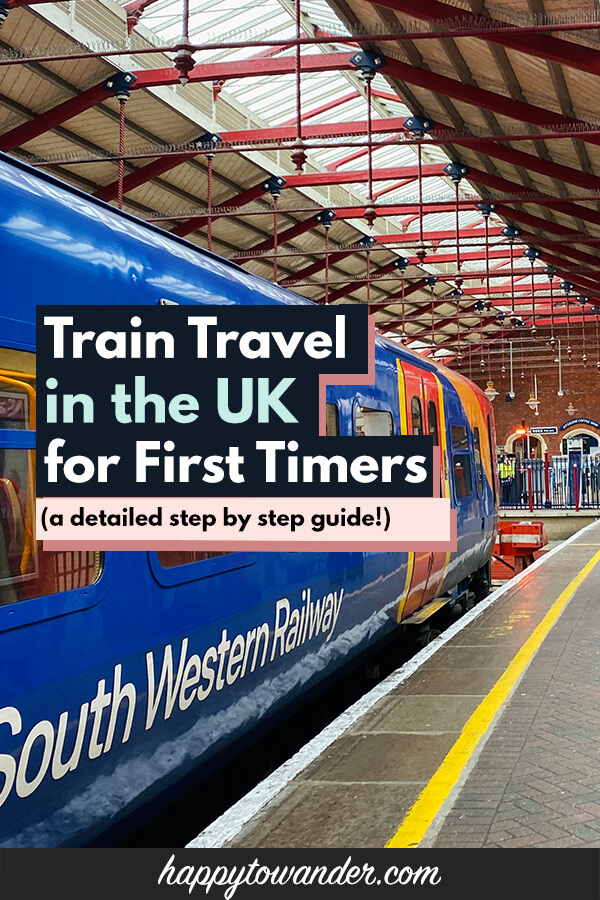
Save this guide on How to Travel the UK by Train for Later!
You’ll be very glad you did.
A Brief Introduction to the UK Rail System
Let’s start with some basics on taking the train in the UK, which involves over 2500 stations and 15,874km of track!
Rail Providers in the UK
When people talk trains in England, Scotland, and Wales, usually you’ll hear the term National Rail, but what’s important to note is that the National Rail is an umbrella term mainly used for branding and consistency, when in reality it encompasses 20+ train companies, including ScotRail and Transport for Wales.
In Northern Ireland, the rail services are run by a separate company known as Translink that is entirely independent from National Rail.
For the purpose of this post, I’ll be focusing on National Rail specifically, as that’s what I have the most experience in, so if you’re looking for Northern Ireland train tips, then I would recommend heading to the official Translink website to learn more.
Within many cities, you’ll also find companies offering Metro and Tram services that are run independently of National Rail, and therefore have their own ticketing system, like the London Tube for instance which is run by Transport for London (TfL). This is why in most cases, you can’t use your train tickets for local travel.
Lastly, there are several privately owned companies that offer heritage & “experience” trains that are NOT part of the National Rail network. These trains are usually more for the purpose of sightseeing or tourism rather than getting from Point A to Point B.
As the tickets and routes for these trains vary from company to company, I won’t be focusing on them today either. The best resource would simply be that specific train company’s official website!
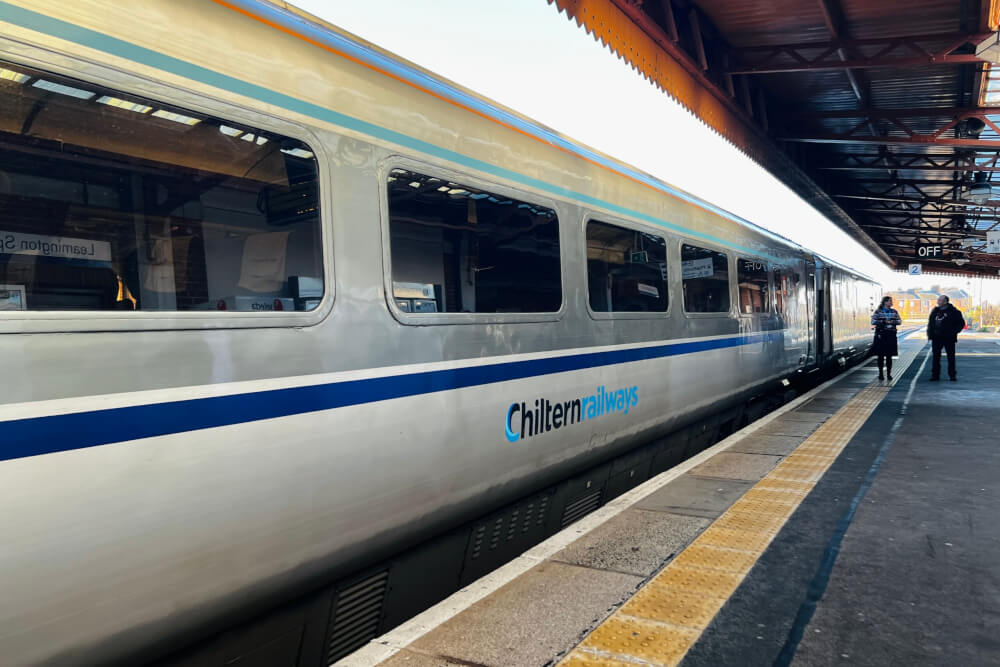
Now, let’s discuss…
Types of Trains in the UK
Generally speaking, we can classify UK trains under a few broad categories.
Firstly, there are Intercity Trains, high-speed, long-distance services that connect major cities and regions in the UK in a comfortable and fast manner. They are operated by companies like Avanti West Coast, LNER, and CrossCountry, and will usually be more expensive as they have more amenities and on-board services.

There are also Regional Trains , slower, shorter-distance services that connect smaller towns and cities within a specific region. Their routes are typically designed to serve local commuters and travelers making shorter journeys, so these will typically have fewer amenities than Intercity trains. Examples of companies offering this service include Northern Rail or South Western Railway trains.
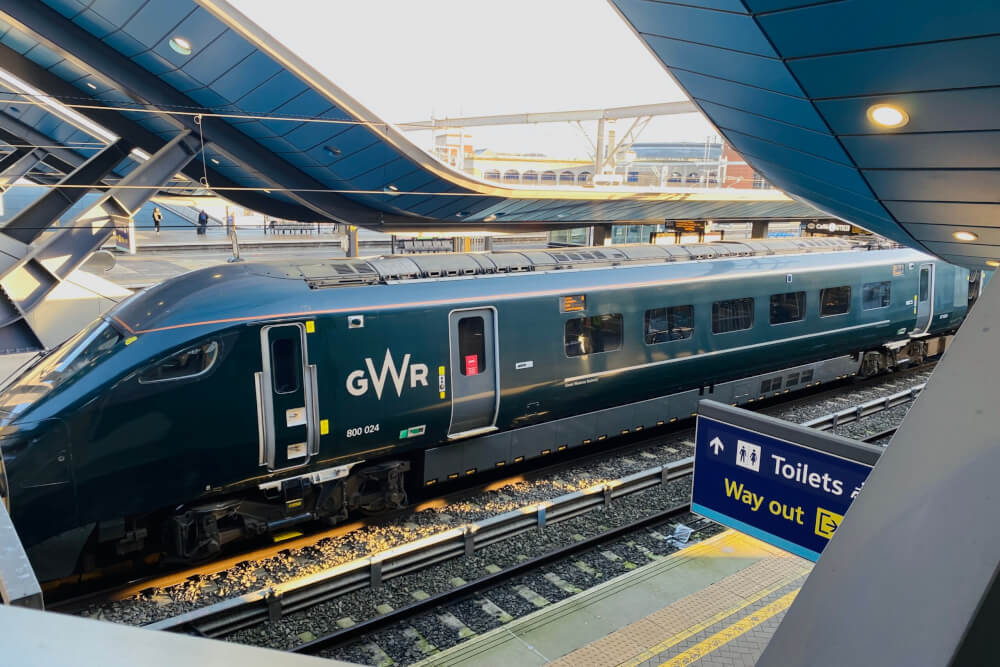
In larger Metropolitan areas, there may be Local Trains as well that service a smaller region, like the London Overground that covers greater London and its suburbs, or Mersey Rail which connects Liverpool to smaller towns close by.
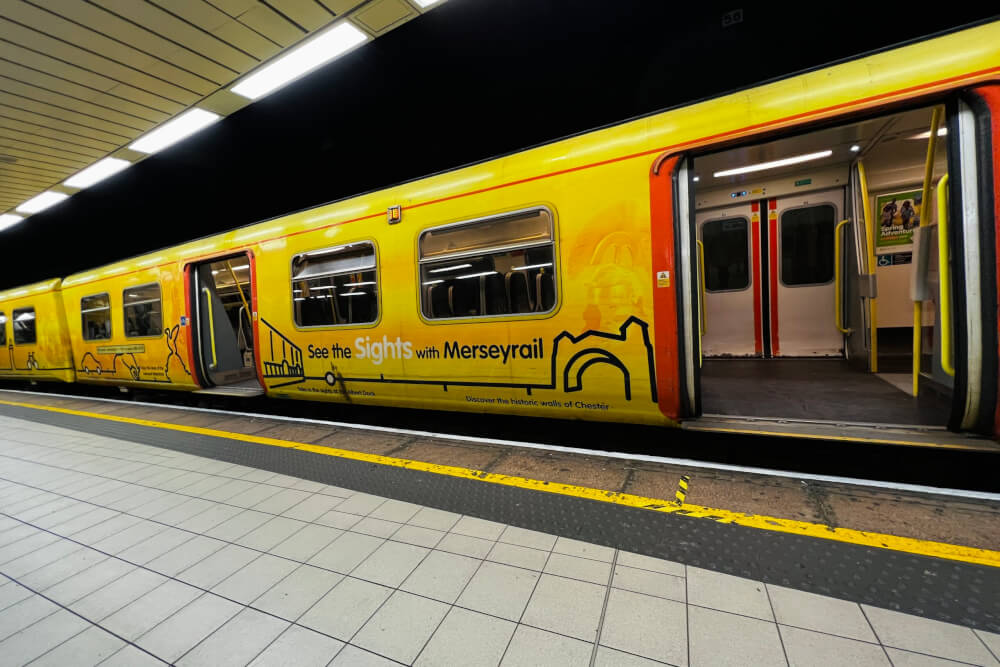
For select routes, there are also Sleeper Trains . These services allow passengers to travel overnight and wake up in a different city or region. For example, the Caledonian Sleeper offers overnight journeys between London and Scotland.

Lastly as I mentioned before, there are the many privately owned heritage & “experience” trains meant for sightseeing and tourism. Some examples include the Jacobite Steam Train in Scotland, AKA the real life Hogwarts Express or the also magical Swanage Railway.

Now, with the basics covered, let’s go through step by step how to plan a train trip in the UK.
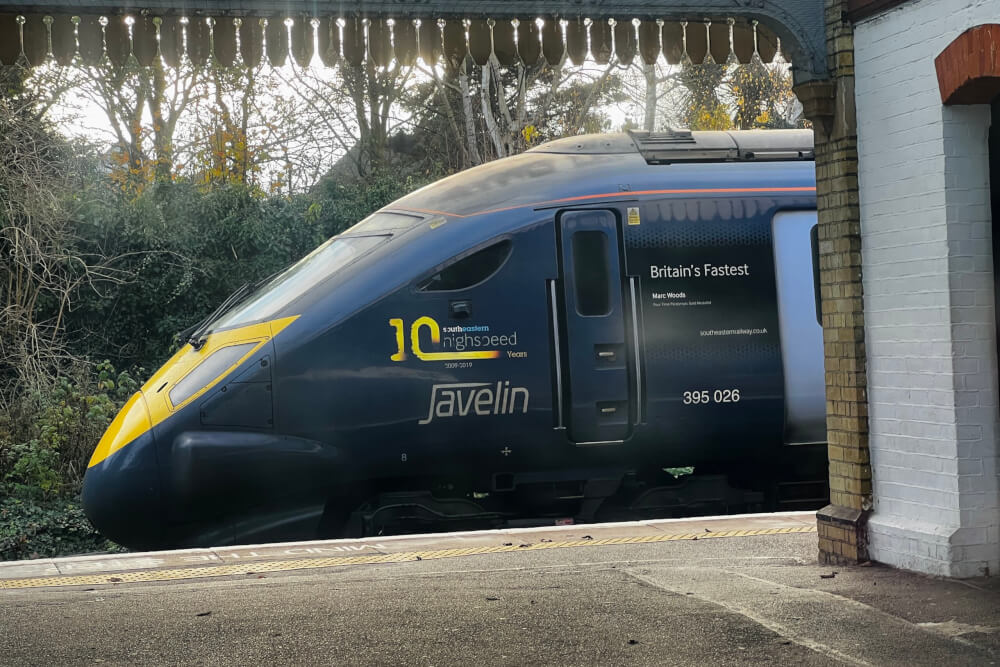
Step One: Decide if Train Travel in the UK is Right for You
First – let’s talk alternatives to train travel in the UK.
I quite enjoy train travel in the UK, but it’s far from flawless, and there are other ways of getting around that may be better suited to your specific trip and priorities.
Overall, I think taking the train in the UK is great if you’re looking for comfort and (depending on the route) scenery.
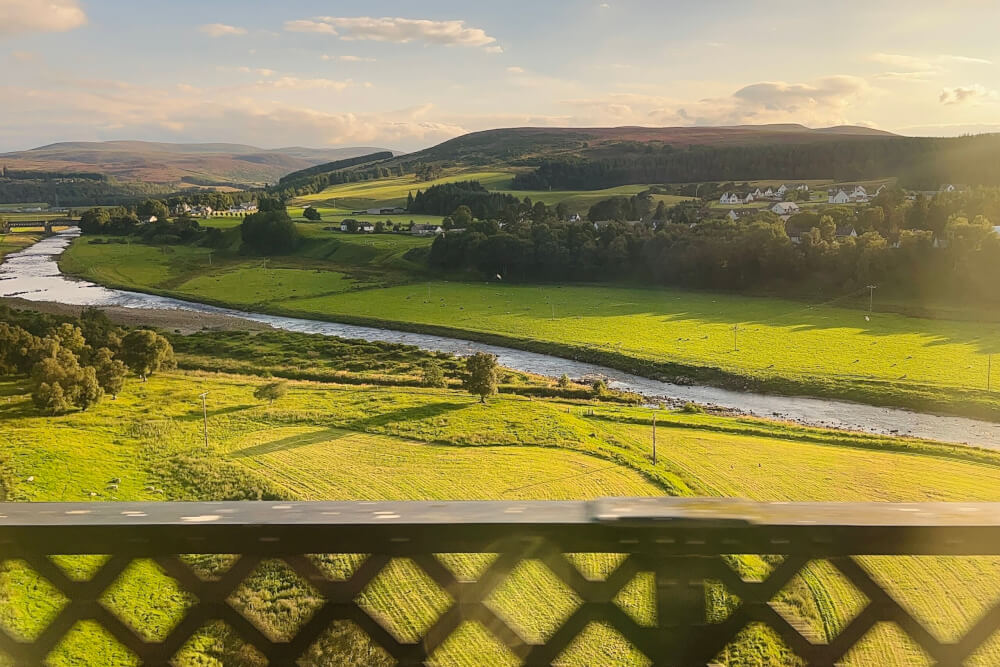
The downside is however it can be really expensive, especially if you don’t book in advance. It’s also not super convenient if you’re travelling with more than one large suitcase per person as hoisting big bags up and around trains isn’t the most fun… and there can often be delays and cancellations.

A more budget-friendly alternative may be taking buses like National Express or Megabus, booking a ride share on services like BlaBlaCar or sometimes even flights if you’re booking with budget airlines like Ryanair , easyJet and Wizz Air .
Or, if your priority is freedom and getting off the beaten path, it may be worthwhile to rent a car. The UK is relatively small and well connected with highways (called motorways here), so driving between cities doesn’t actually take too long, with the journey between London and Manchester only taking about 4 hours for instance.
Overall, if you’re torn and want to compare all your options at a glance, Omio is a great app that shows you planes, trains, and buses from Point A to Point B. From there, you can gauge whether train travel suits your needs.
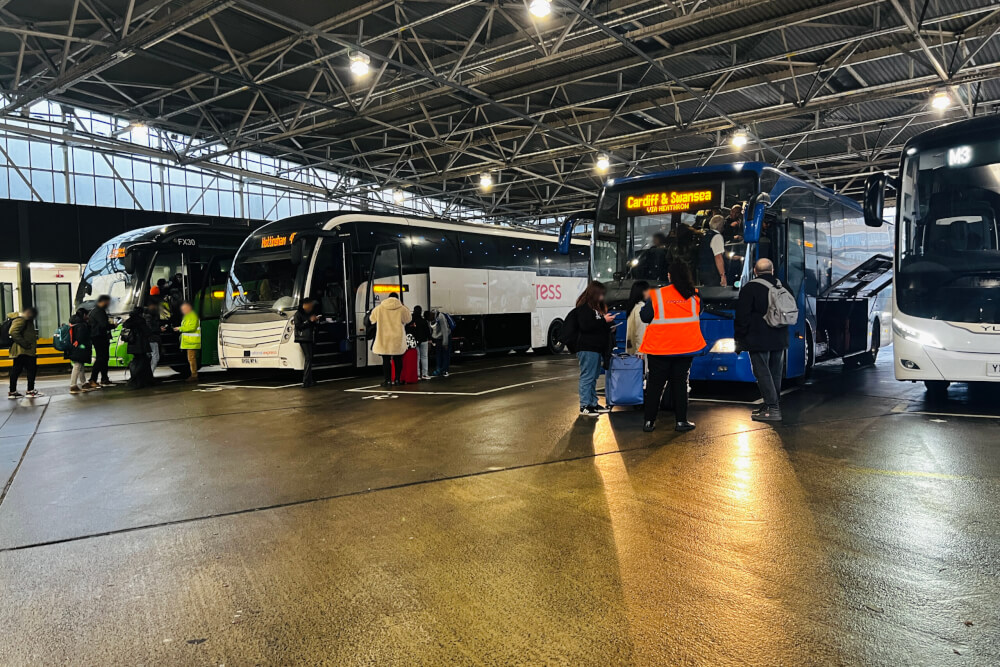
If/when you’ve decided you do indeed want to take the train, then we move onto…
Step Two: Buy Your UK Train Tickets
Train tickets in the UK can be purchased online in advance, or in-person at the station from a machine or sometimes from a ticketing window run by a (gasp) actual human.
It’s important to note however that the UK train system rewards you for booking in advance by making a special category of “Advance Tickets ” MUCH cheaper than booking on the day of.
So in any case, I’d advise booking tickets in advance online to minimize stress and secure the best possible deal, either directly through the National Rail website or through a third party website.
NOTE: Some rail providers do not yet provide mobile tickets, which means that buying in advance requires you getting the ticket printed at the station anyway. In these cases, make sure you allow for extra time so you can do that.
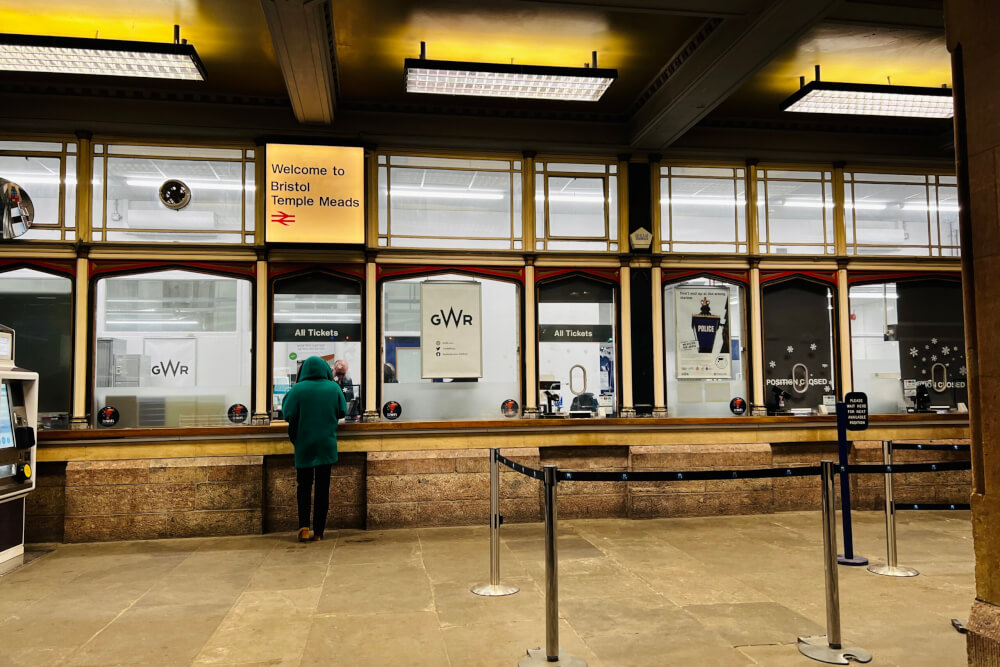
Booking direct with National Rail or your specific train company will pretty much always be the cheapest option as they don’t charge extra booking fees, but if you’re planning a big trip with lots of trains or buses in other countries across multiple companies, then a 3rd party like Omio or Trainline might be worth the small booking fee to keep all your tickets in one place. You can read my comparison of the two in my Omio vs Trainline post.
I’m a huge fan of Trainline in the UK because their interface is super simple and there’s a lot of perks like automatically finding cheap split tickets, easy refund/compensation requests, etc. You can also request a ticket alert to find out when tickets go on sale for your specific journey through Trainline here. Read my full Trainline review for more info.
Another alternative is TrainPal, which can also find split tickets but doesn’t charge a booking fee. They’ve also given me a code to share with you – HAPPYTOWANDER for 33% off Railcards & 5% off for EUR/UK rail tickets for new customers and 2% off for existing customers so in this case it might be cheaper than booking directly.

Now, there are a lot of considerations to be made when you go to buy train tickets in the UK. I’ll outline them all now.
First off…
RailCard vs No RailCard
If you are visiting the UK for a longer time, or perhaps plan to use a LOT of public transport in that time, then consider getting a RailCard.
These passes cost you a fixed amount per year but then give you a 1/3 discount on all future rail travel… including the Tube if you link it with your Oyster Card!
There is almost always some kind of discount code that you’ll find which gives you the rail card for something silly like £20. Depending on how many train journeys you are taking, you could probably make those savings back in just a few trips… if not just one!
At the moment, the options for railcards are…
- 16-25 Railcard : 1/3 discount for those aged 16-25
- 26-30 Railcard : 1/3 discount for those aged 26-30
- Senior Railcard (for ages 60+) : 1/3 discount for those aged 60+
- Two Together Railcard : 1/3 discount when travelling with the same person
- Family & Friends Railcard: 1/3 discount on adult train tickets, 60% off children’s tickets
- Disabled Persons Railcard: 1/3 discount for you and a friend
- Veterans Railcard: 1/3 discount for UK military veterans
- Network Railcard (Southeast Only): 1/3 discount for travel in London and the South-East of England
If you plan to travel by train a lot in the UK, consider buying a RailCard that will save you 1/3 off all fares. This is the ultimate money saving hack if you travel often enough, and it can even be linked to an Oyster Card to be used for London Tube journeys!
Buy through TrainPal and you can use the discount code HAPPYTOWANDER to save 33% off your RailCard!

So let’s move onto our next consideration which is…
Standard Tickets vs. Rail Passes
If you are only booking a few train journeys during your time in the UK, the best option is most likely to just buy tickets for the journeys you’re taking.
Generally, the best way to get a deal is just booking early enough to nab an Advance ticket.
Other potential discounts include…
- Age-based discounts: Kids under 5 ride free for instance, and children from 5-15 get 50% off
- Group discounts: Groups of 3-9 adults can get 1/3 off off-peak fares through Group Save
If you can’t book in advance though, a potential cost saver could be a rail pass of some kind.
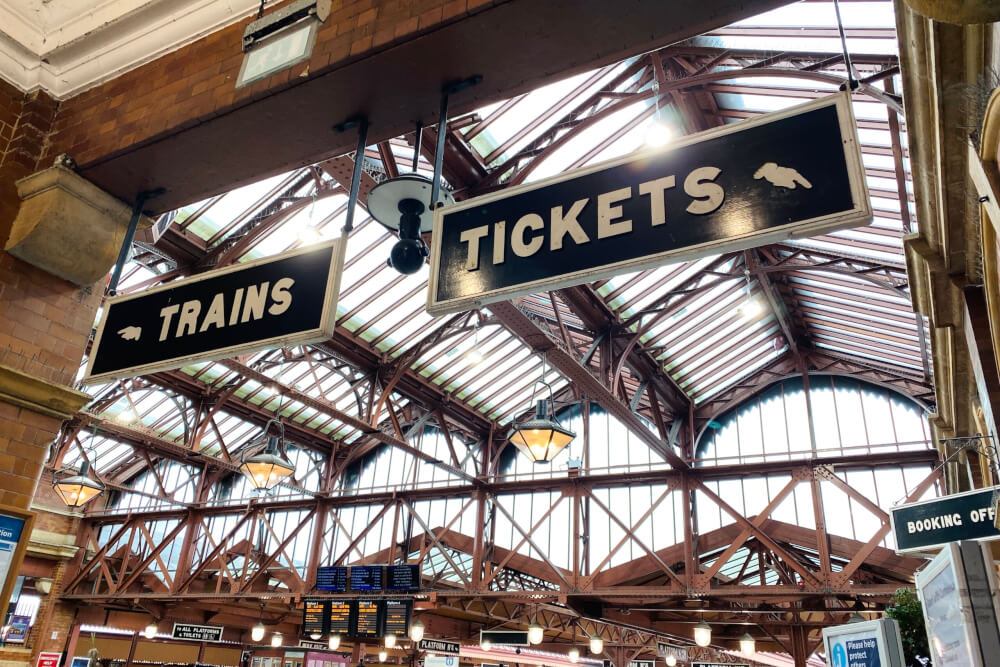
If you are a tourist (i.e. you don’t live in the UK), you plan on doing frequent trips, particularly day trips, and you need some room for spontaneity and prefer to not book everything in advance, then there are two options.
For travel in a smaller area, some regions offer ‘ Ranger and Rover Tickets’ that give you unlimited travel within a set area and time period. You can browse a full list of those here.
As a tourist however (i.e. someone who isn’t a UK resident), you can also buy a BritRail Pass.
These passes allow you to pay a set rate for a number of travel days, on which you can take as many trains as you want. I’ve used these in the past and found them to be amazing value if you need spontaneity.
If you are travelling to other countries in Europe, it may be worth getting a Eurail Pass , also known as an Interrail Pass when you’re a resident of Europe.
Used properly, these passes can save you a lot of money, but only in certain situations so for more information on that, be sure to read my full Eurail review.
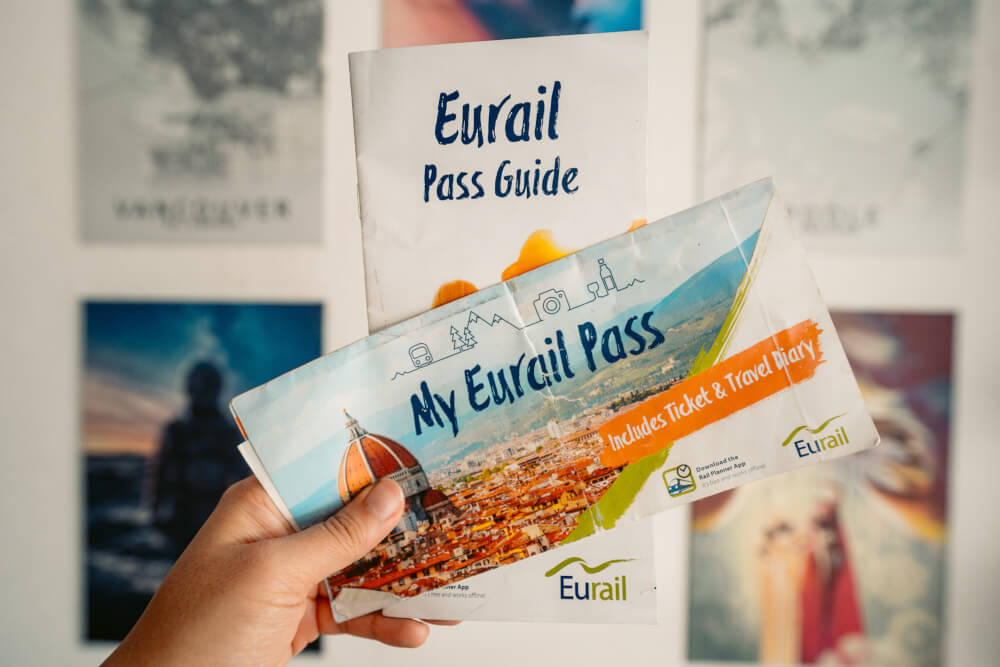
BONUS TIP: If you are travelling between the same destinations frequently, it may be worth looking into a Season Ticket , which gives you unlimited travel between two places.
If you choose to buy just standard tickets and not a rail pass, then another consideration is…
Anytime vs Off-Peak vs Advance
When you go to buy National Rail tickets, there are generally three types of tickets you can buy with differing flexibility (and therefore cost).
Anytime Tickets offer the most flexibility. With them, you can travel on any train, any time, on the chosen route, without restrictions. As such, they are the most expensive, but are ideal for those who need a flexible schedule.
Advance Tickets are often the most budget-friendly option. True to their name, you must book them in advance, especially because there is a limited number of them so booking in advance is essential. With Advance tickets, you are tied a specific train and departure time. NOTE: All Advance tickets are sold as single tickets.
Off-Peak Tickets are slightly more flexible than Advance Tickets and cheaper than Anytime tickets. They restrict you to travel during ‘off-peak’ (i.e. less busy) periods, generally weekends, public holidays, and mid-morning, mid-afternoon and later evening on weekdays. There are sometimes even cheaper Super Off-Peak Tickets for more limited time windows.
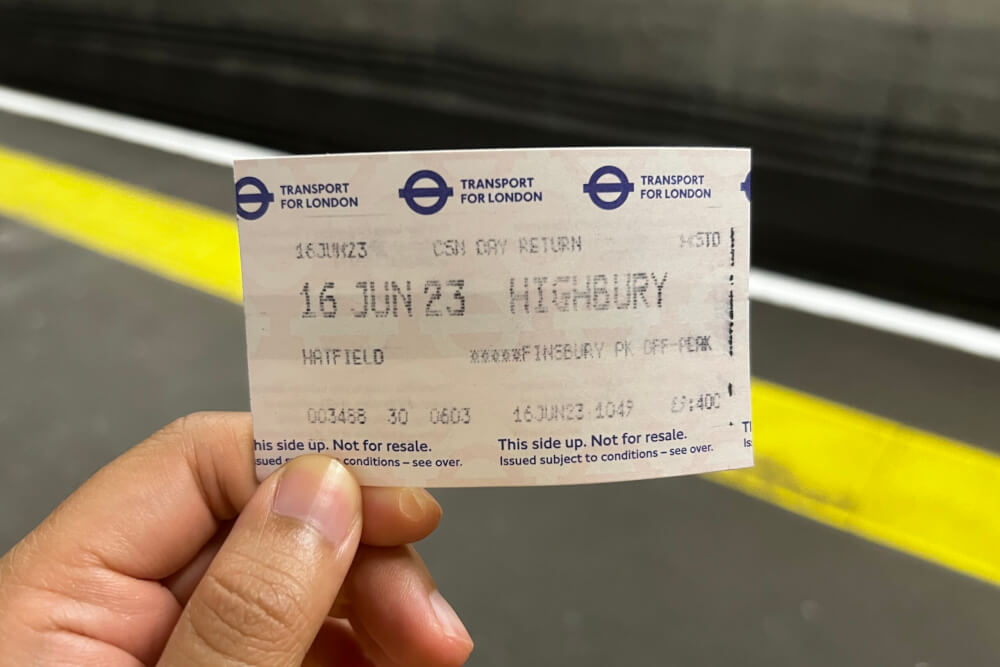
So, which of these ticket types should you go for?
- If you need optimal flexibility and don’t mind paying extra, get an Anytime Ticket
- If you need some flexibility, but can travel in off-peak periods, get an Off-Peak Ticket
- If you want the cheapest possible ticket, can plan well in advance, and don’t mind being restricted to a certain train/time, get an Advance Ticket
As for how to find these different ticket types, by default, both the National Rail website and 3rd parties like Trainline should try to show you the cheapest option first, so if an Advance Ticket is available, that’s the one that they’ll show you.
If you’d prefer the flexibility of an Off-Peak or Anytime Ticket, then you can click “Other Tickets” to show the other options. This is what that looks like on the National Rail website for instance:

And on Trainline, you can click “Compare all available ticket types” at the bottom of your search results to show a very cool table that compares your different options:
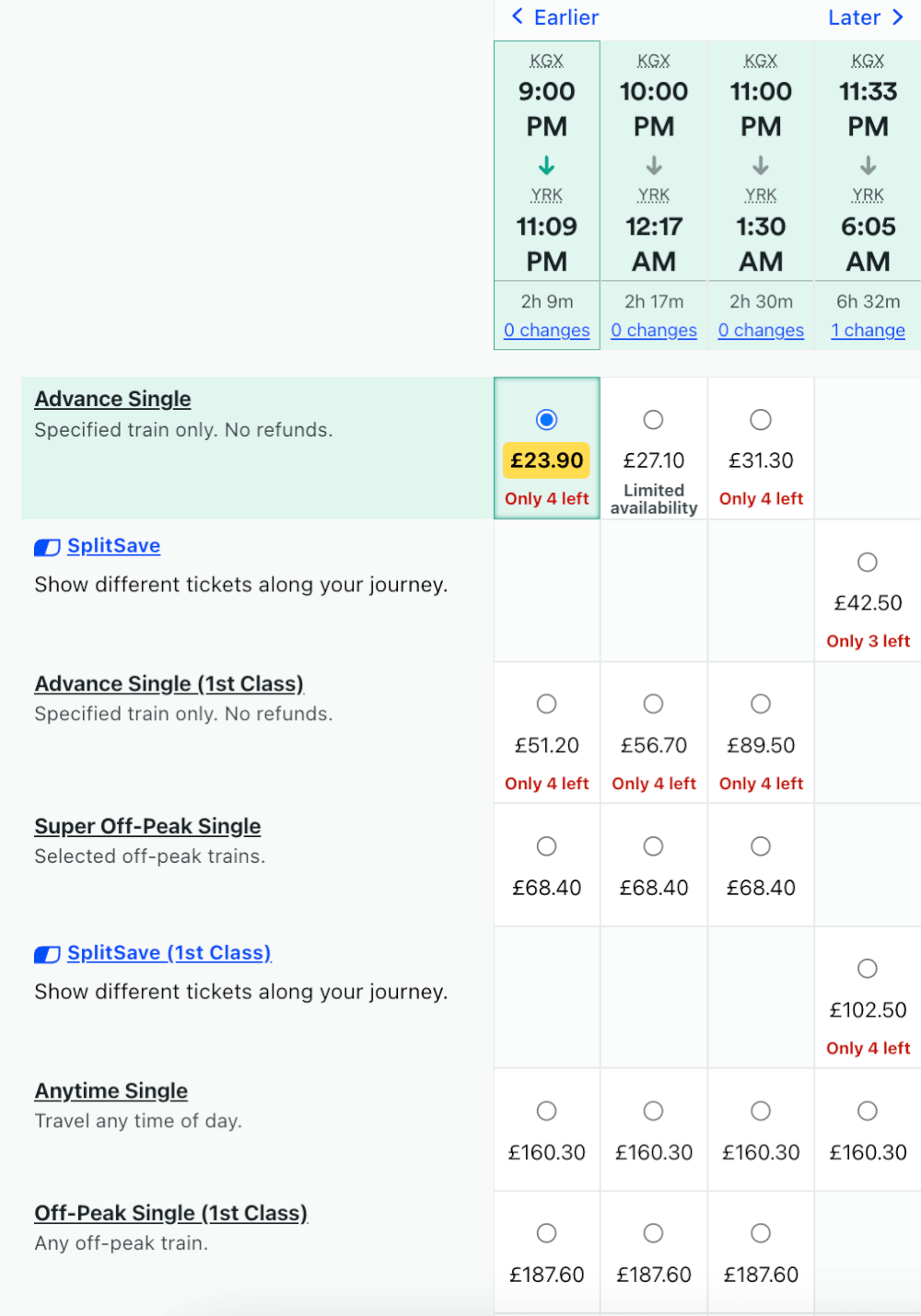
NOTE: Advance tickets generally go on sale 12 weeks before travel, with Anytime & Off-Peak tickets sometimes going on sale a little earlier… SO beware that you’re not trying to plan too far in advance, because then you might only see the pricier anytime & off-peak tickets as the advance tickets are not yet available.
In any case, besides being cheaper, I’m a huge fan of travelling off-peak periods just because the trains are less busy, so you’re more likely to find space to sit/store your bags.
The last thing you want to do is get stuck in a commuter rush, especially if you have the luxury of choice, so travel at off-peak times whenever possible.

Single vs. Return
Alright now the next consideration is whether you’re buying a single or Return.
Advance Tickets are only ever available in Singles.
However, Off-Peak and Anytime Tickets can often be cheaper if you commit to a roundtrip fare. Annoyingly though, this will depend on your exact route/trains, which is why I like using Trainline to compare options.
If cost is a big factor for you, definitely compare different options because sometimes a roundtrip off-peak can work out cheaper than two Advance Singles.
For instance, one time I got confused and bought two singles for my day trip to Stratford Upon Avon and ended up paying 50% more for a ticket that was LESS flexible than the one I got. So much regret!
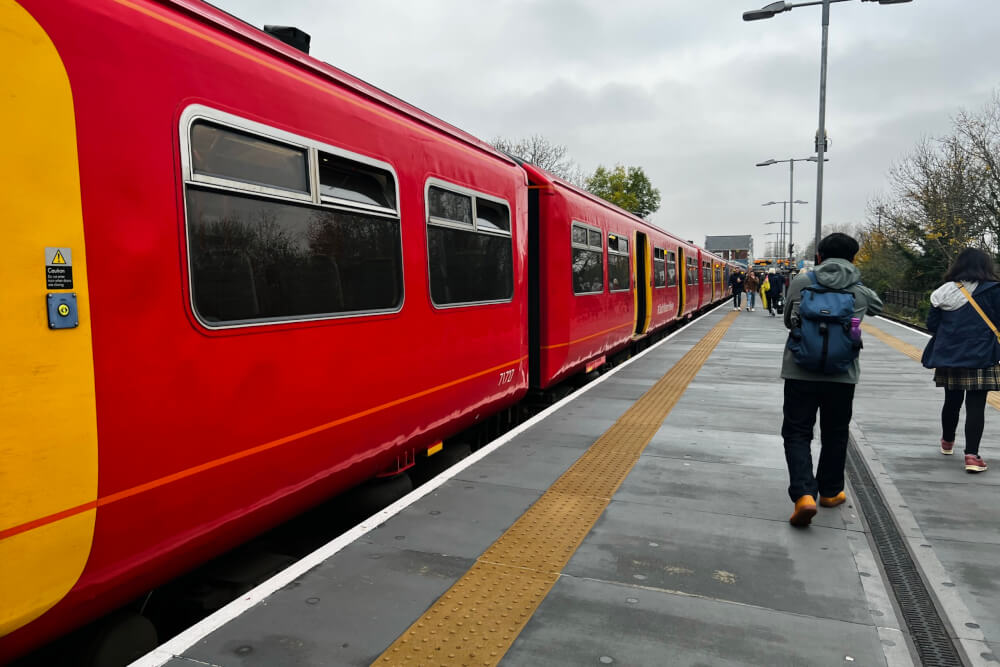
Split Tickets vs Regular Tickets
Further adding to the confusion is the fact that sometimes, it’s cheaper to buy two split tickets for one journey rather than a single one. This doesn’t change your journey at all – you basically just have separate tickets for one ride, so depending on when the inspector comes around, you have to show them a different ticket. This can be an easy way to save a bit of money.
Split tickets are part of the reason why I like using Trainline . They find these split ticket deals for me automatically and I can buy both at once, so it’s no different to buying a normal ticket – just a bit cheaper!
Another alternative for finding split tickets is TrainPal. Their main selling point is they don't charge a booking fee and they also track the carbon emissions from your trip and allow you to participate in tree planting projects within their app.
Use the code HAPPYTOWANDER for 33% off Railcards & 5% off for EUR/UK rail tickets for new customers and 2% off for existing customers.

NOTE: When choosing your journey, always prioritize direct connections or routes that make fewer stops. These will usually cost more, but trust me, it’s worth every penny! Transfers are simple enough when trains run on time, but as soon as you’re hit with a delay, that can disrupt your entire journey and make things 100x more stressful.
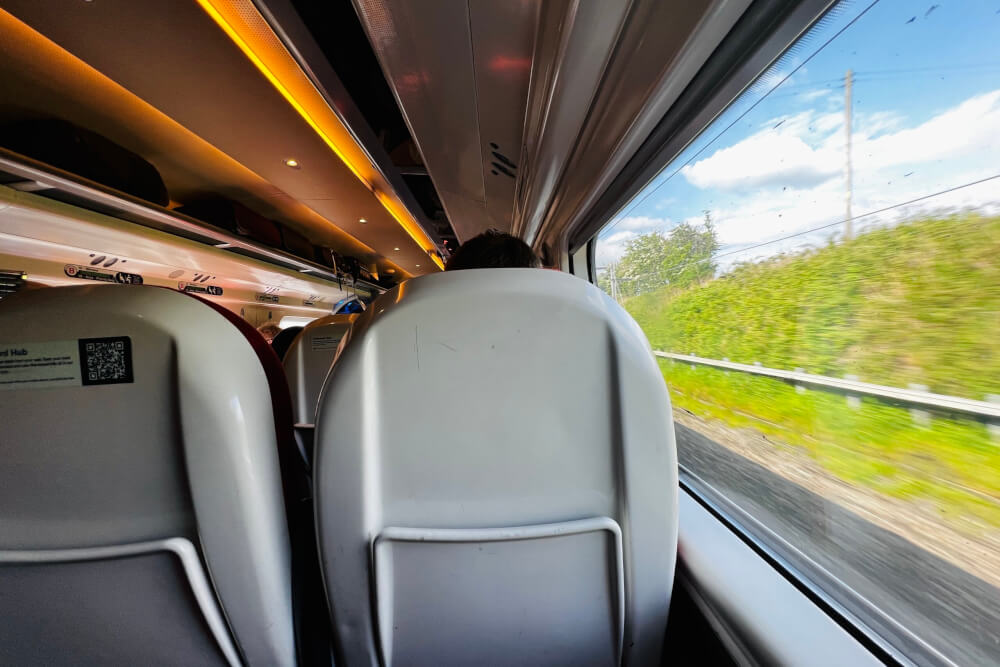
1st vs 2nd class on UK Trains
Is splurging on 1st class worth it on UK trains? Honestly, this depends on your journey length and the type of train you’re hopping on.
With regional and shorter distance trains, the difference between 1st and 2nd class in the UK is fairly minimal, and (in my opinion) not worth the extra cost, unless your company is paying, or you really want to guarantee yourself a seat in a quieter area with a bit more leg room.
With longer distance Intercity trains however, 1st class often comes with additional perks like complimentary food and drink, along with roomier and comfier seats that may be worth it for a long journey.
So, to decide whether or not 1st class is worth it, be sure to research if there are any good 1st class perks on your particular train.

The next consideration is…
Reserved vs. Unreserved seats
In the UK, reserved seats tend to only be mandatory for longer distance journeys. In these cases, the obligation to make a reservation will be clear when you buy your ticket.
If given a choice, some considerations for which reserved seat to book might be…
- Seat position: Window is more ideal for wistfully staring out at the world, aisle gives you a bit more leg room/freedom
- Direction of travel: Some seats may be facing backwards so if that bothers you, plan accordingly. Beware however that sometimes trains reverse directions on a route.
- Quiet zones: These are special carriages where you’re not meant to play music/use your phone at a loud volume or have loud conversations. Perfect if you want some peace for your journey!
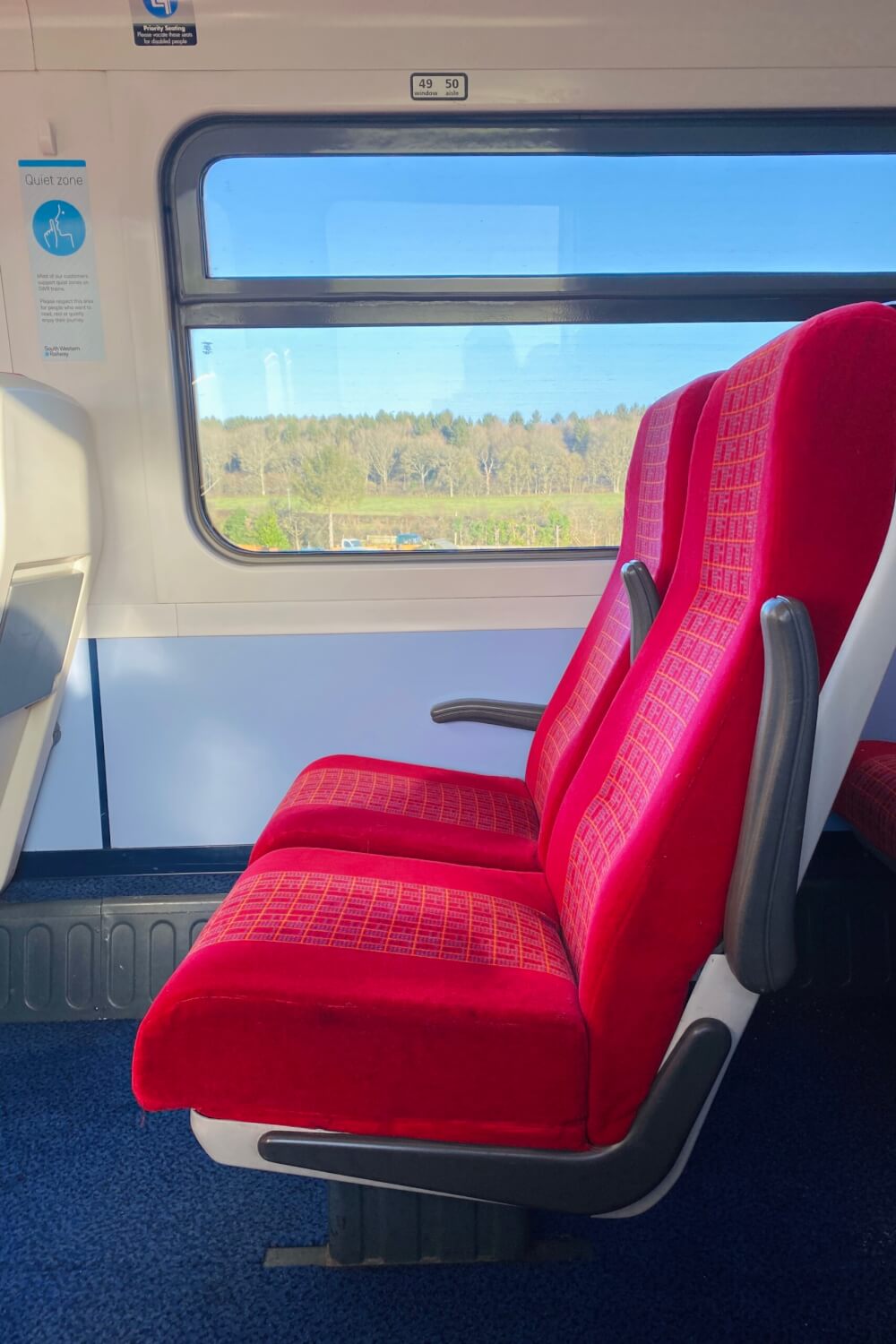
Alright with your tickets booked it’s time to move onto the day of your journey, with…
Step Three: Get Snacks
On the day of your journey, I highly recommend you get some food and drink to bring with you on the train (especially for longer trips). This is completely allowed on UK trains, and you can even BYOB .
While there are some refreshment options on board with long distance trains, they tend to be fairly limited and pricey, so getting your own gives you more control. On most shorter distance trains, there are no options for buying food or drink on board at all.
So, at the very least, I’d get some water or something to drink. There’s often great options even at the train station itself, including many chains that offer the almighty Meal Deal.
As I mention in my England travel tips & Scotland travel tips articles, Meal Deals are a UK staple that consists of getting a main course, snack and drink for less than £5. Great for a budget-friendly to-go meal.

Now let’s move onto…
Step Four: Arrive at the Station
Train stations in England vary a LOT in terms of size and design. You’ll have everything from tiny stops in the countryside with only one platform to massive, grand, stations with champagne bars, shops, and public pianos.
If you’re anxious about the station you’re travelling to/from, there’s a handy tool provided by National Rail that allows you to view station plans and amenities here.
There are some overarching themes and considerations though.
First, when you get to the station’s main concourse, your priority is finding out which platform your train is on. Sometimes, these platforms aren’t announced until the train arrives, which can create a bit of a tense/stressful environment where everyone is just staring up at the board, waiting to see the platform number come up.
NOTE: Sometimes apps like Trainline will tell you before the board even changes, which gives you an extra advantage in the Hunger Games of boarding.
But in any case, if your platform hasn’t been announced yet, the key is to hang tight and be ready when the number does come up.
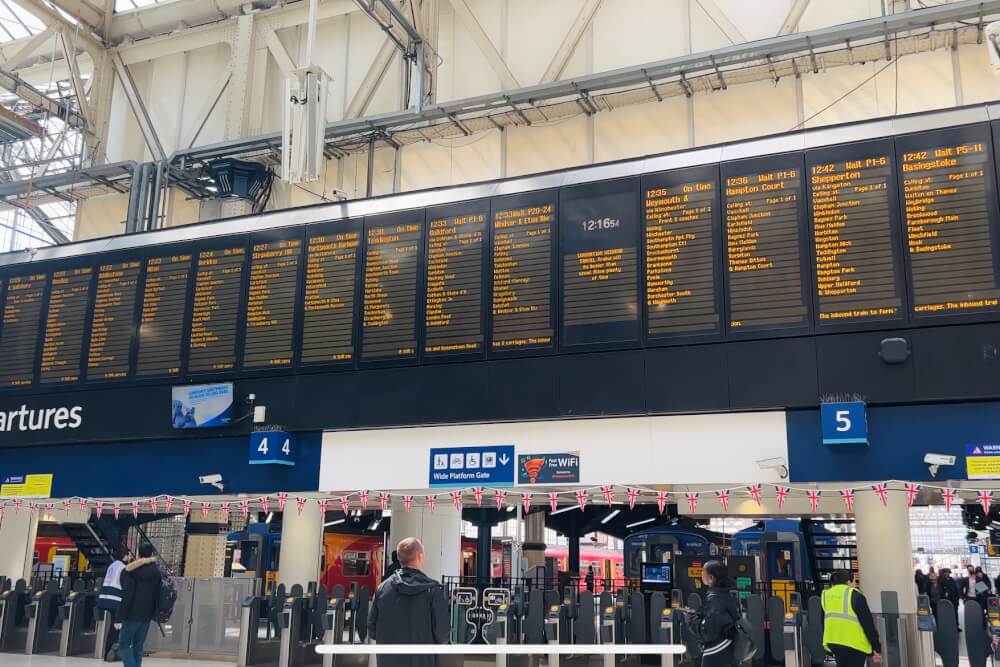
Remember, when looking at the board, trains will not necessarily say your destination, but rather the final destination of the train, so if you don’t see the name of where YOU’RE travelling to, don’t panic.
Look for the time and train number, and (when available) the list of stops to see if your destination is listed, then figure it out from there.
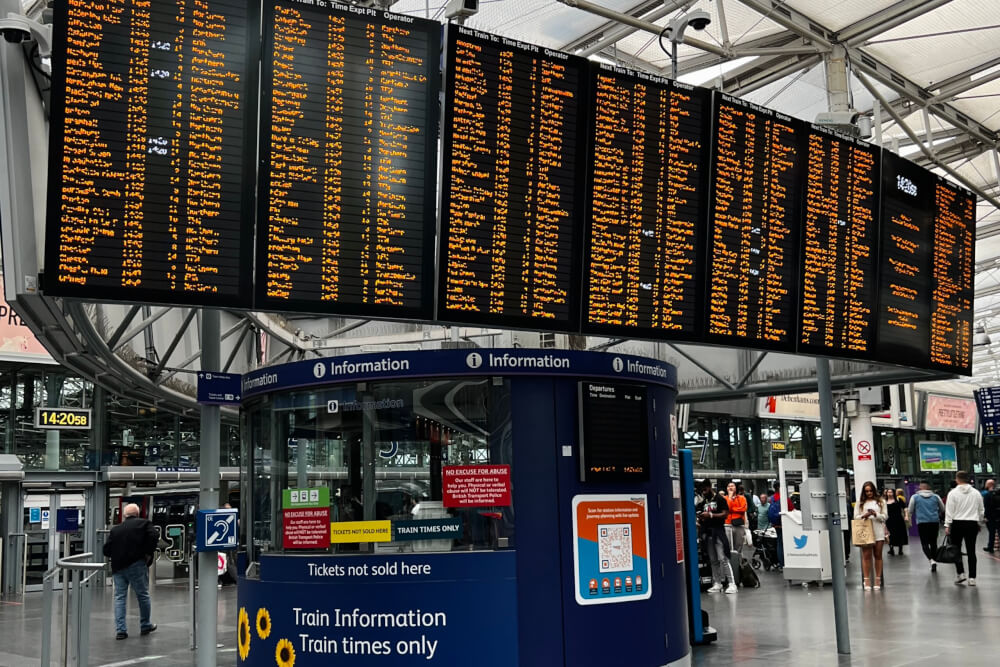
Next, it’s time to…
Step Five: Get to the Platform
Platform numbers will generally be very well marked so just look up for signs before making your way.
Be sure to have your ticket handy, as many stations will have fare gates where you’ll need to scan your ticket to get on the platform (or get a staff member to let you through manually).
Now where do you put/scan your ticket? This can sometimes be unnecessarily confusing, and depends on whether you have a digital or physical ticket.
For physical paper tickets, look for a slot to insert it, like this:

For digital tickets, look for a fare gate that has a special digital scanner for barcodes. Beware that not all fare gates have them, and some might only have a contactless pad for cards or slots for paper tickets.
Here’s a confusing example from London, where there’s three potential places to tap/scan depending on what kind of ticket you have:
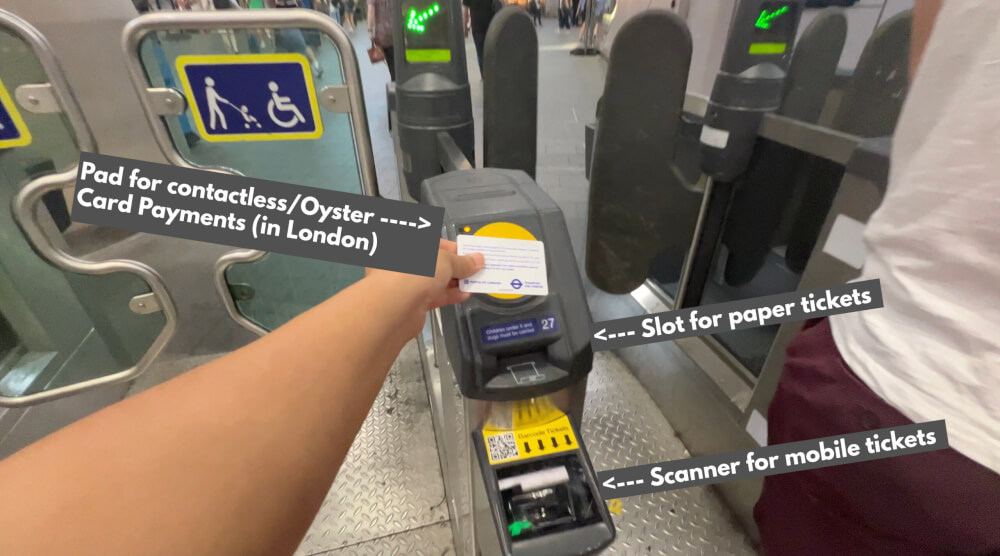
When you get onto your platform, double check it’s correct by confirming either on a platform screen or on the side of the train that you’re in the right place before proceeding to find your carriage.
Be sure to look on the board for any special notes (i.e. you should sit in the first 5 coaches if you are getting off at x stop).
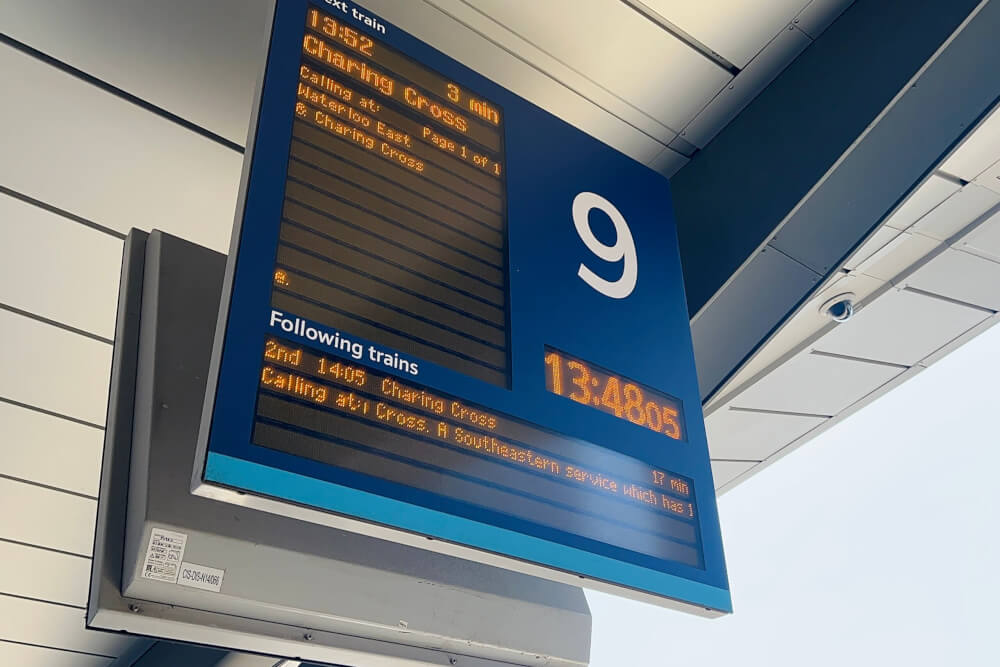
Next up, it’s time to…
Step Six: Find Your Carriage
If you have a reserved seat, then you’ll need to take some extra steps to make sure you get to the correct carriage once the train arrives.
Some UK trains can be very long, so if you have a seat reservation, make sure you’re standing in the right part of the platform to get onto your carriage.
With reserved seats, a handy thing to look out for is some kind of platform/carriage plan that tells you which part of the platform to stand on depending on your carriage number. Some companies like Avanti West Coast even make these plans available online here.
When in doubt though, you can always ask a staff member.
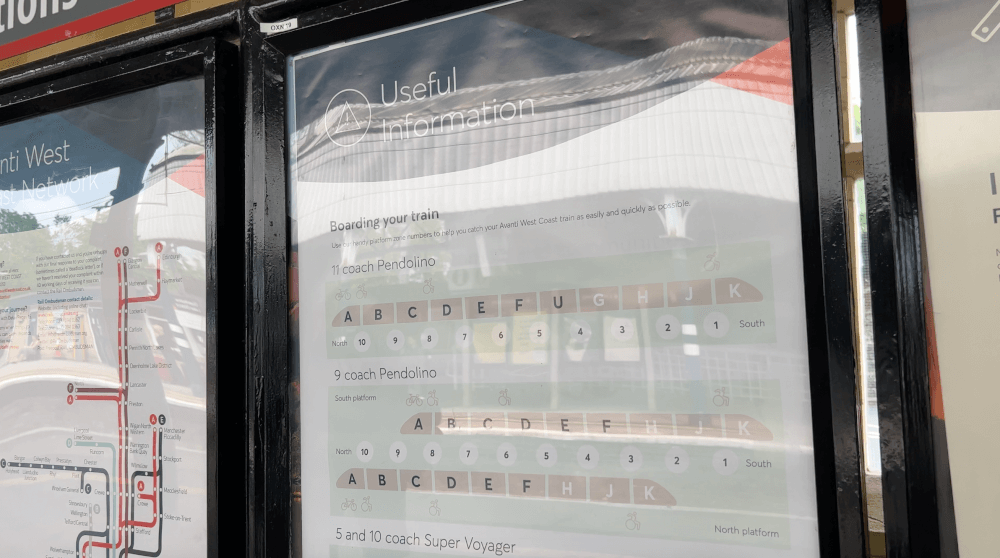
If you do not have an assigned seat, then you simply need to board a carriage in the right class, then pick a free seat.
When picking a carriage to board, pay special attention to…
- The class number of the carriage (you may only board the class you’ve booked for)
- Whether they are special carriages meant for a certain purpose e.g quiet zone
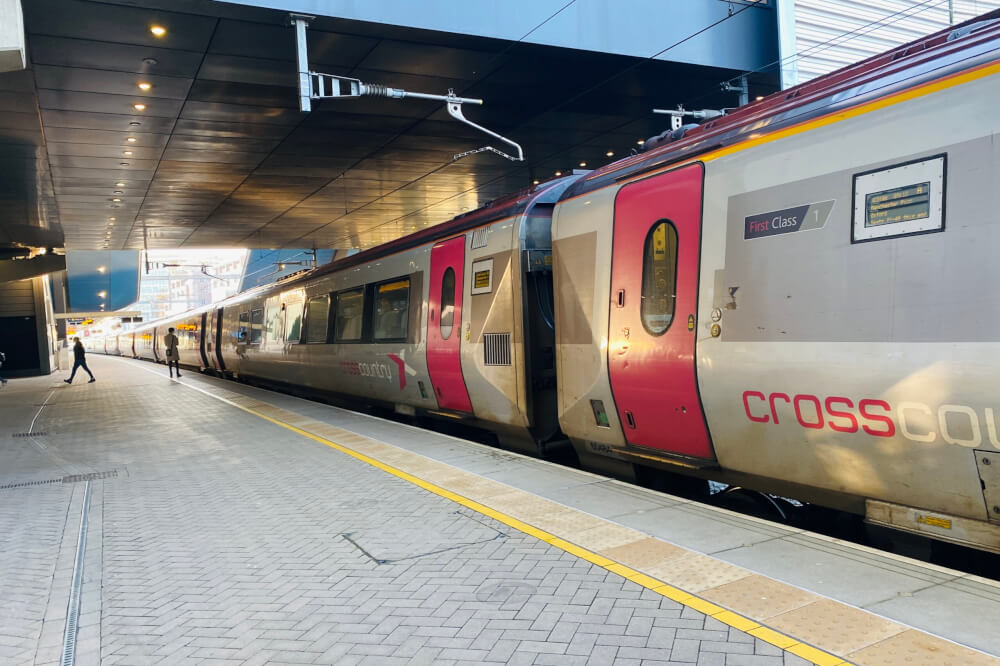
If you don’t have a reserved seat, then usually I find the farther you walk, the emptier the carriages will be.
Once you find or choose your carriage, then it’s time to hop on board.
If the door isn’t opening then look for a button like this <> and press it. This goes for the train doors as well as carriage doors.
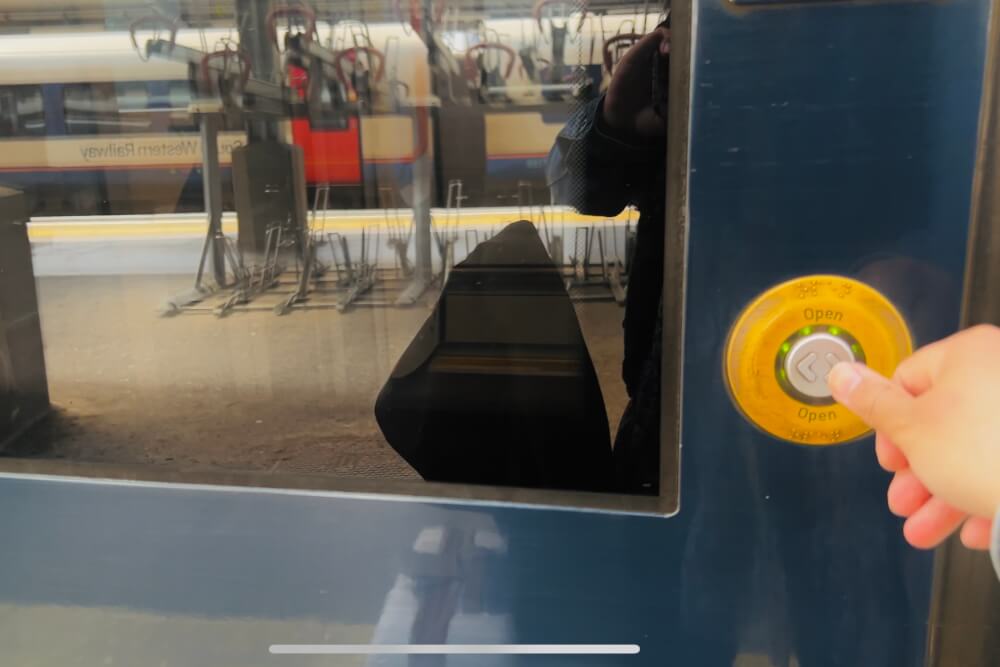
Now it’s time for…
Step Seven: Find Your Seat
First off, if your seat is assigned, try to make sure you go in through the correct door closest to your seat.
Long distance trains will usually write the seat numbers on the corresponding door, like so:

If you have large bags, keep an eye out for large luggage racks when you enter. These will usually be found on the ends of the carriages.

With smaller bags/suitcases, there is usually space above your seat for it, or sometimes under and between seats, as marked.
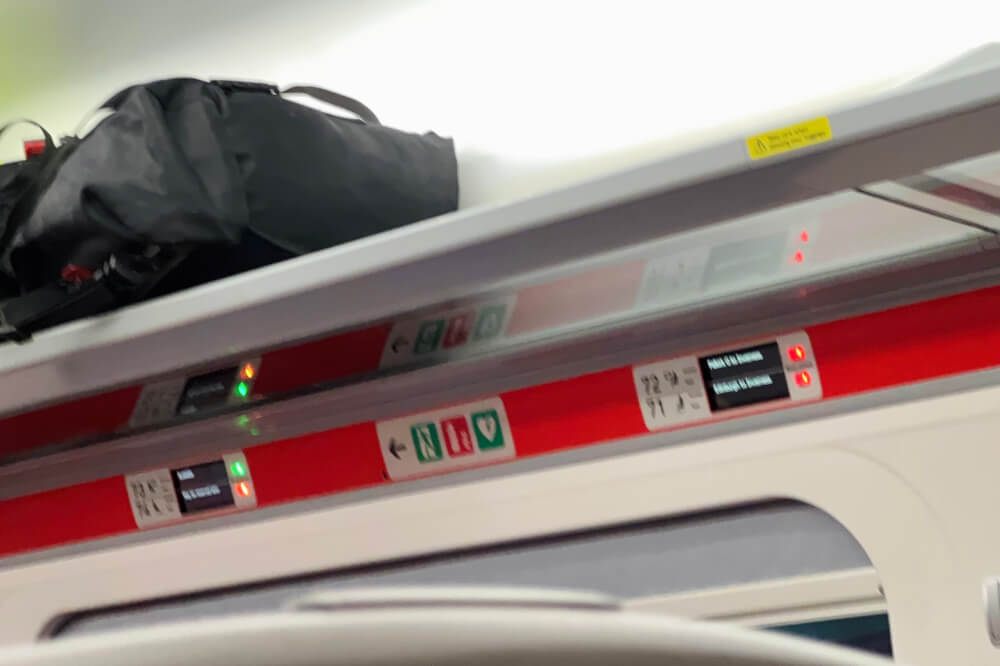
If you don’t have a reservation, before sitting down, make sure your seat isn’t reserved and make sure you’re not taking up a priority space if the train is looking full.
Train reservations in the UK can either be marked on electronic screens or (in more old school cases) paper slips attached to the seat.
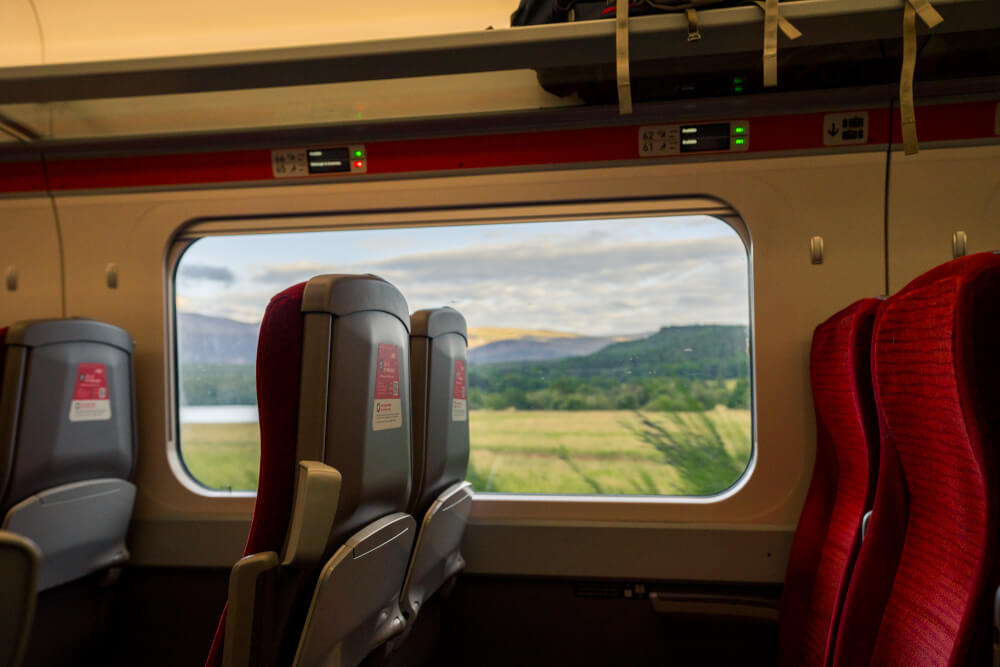
In any case, make sure to read the routes that the seats are reserved for.
The red lights may seem ominous but sometimes the seats are only reserved for a partial journey OR sometimes they are even just leftover reservations from the last journey, and the train just hasn’t changed them over yet.
So, if the stated reservation doesn’t overlap with your journey, it should be fair game!
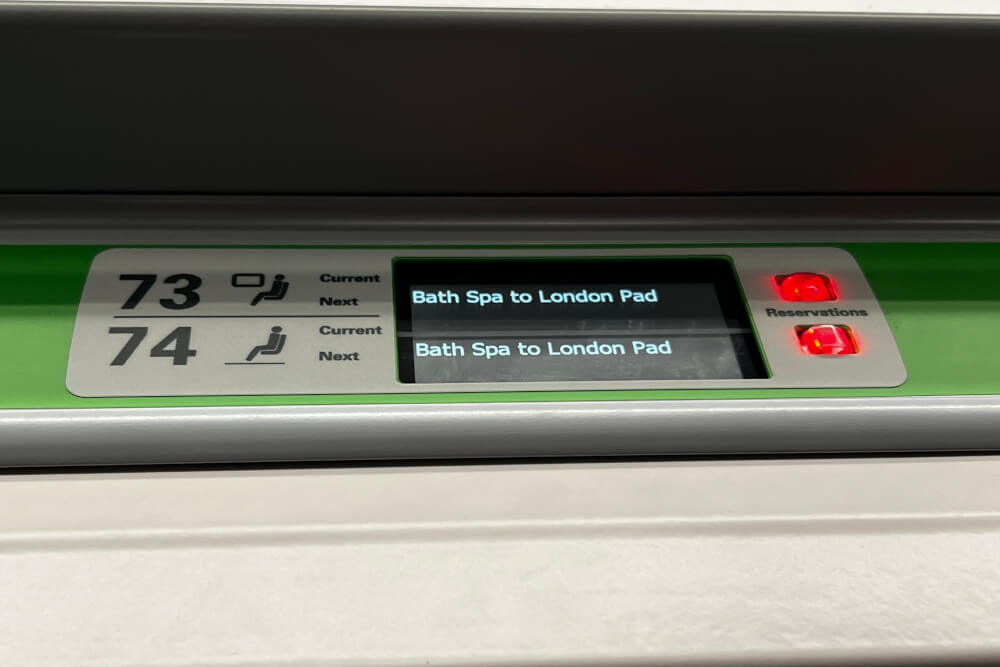
Now finally, onto…
Step Eight: Get Comfortable and Enjoy the Journey!
Once you’re all settled, you’re now in a good place to enjoy some of the hidden features and amenities of your train.
Okay, I say “hidden”, but what I mean is they’re easy to miss, especially if it’s your first time on board a UK train.
So, be on the look out for…
Coat hooks: These can be found on the wall next to your seat – sometimes they may need to be pulled out. You can leave coats, scarves, etc. on those.
Storage space: Usually there is some space above your seat for you to store small bags or coats.
Plugs: Most trains will have an area to charge electronics. Sometimes they are clearly visible on the wall, other times they are hidden between two seats.
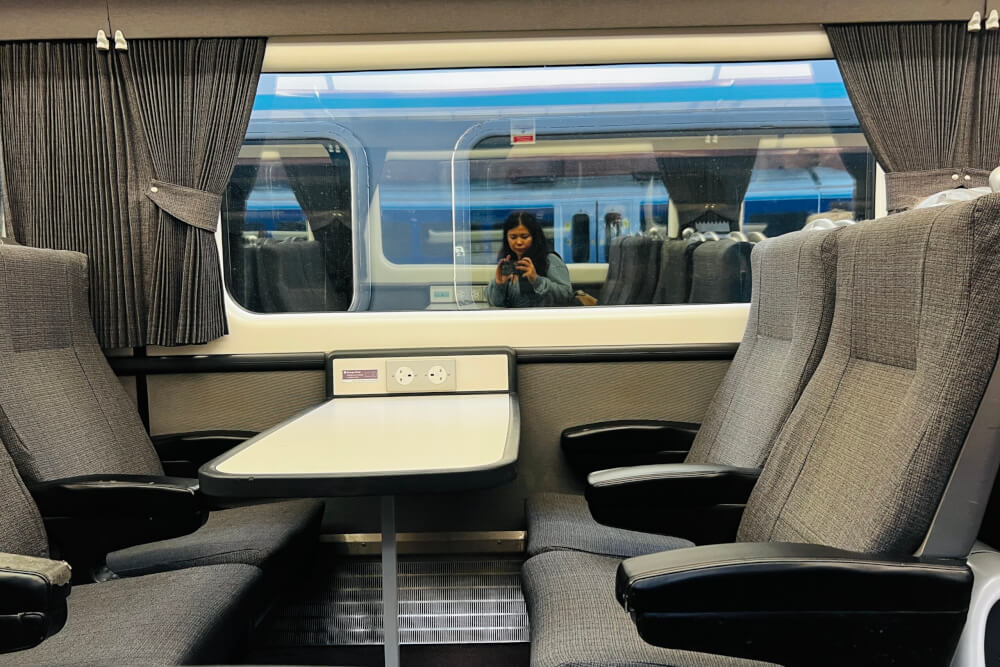
WiFi: Most trains will have WiFi available although quality is questionable depending on where you are.
Bathrooms: And of course, don’t forget to look for the on-board bathrooms (which are free). They’re typically found at the ends of carriages.
Now, as you get comfy, keep your ticket, RailCard, and ID handy in case controllers come on board. Depending on the route, you may not always get checked by a controller, but it’s good to be prepared just in case.
And then, just sit back and enjoy the journey!
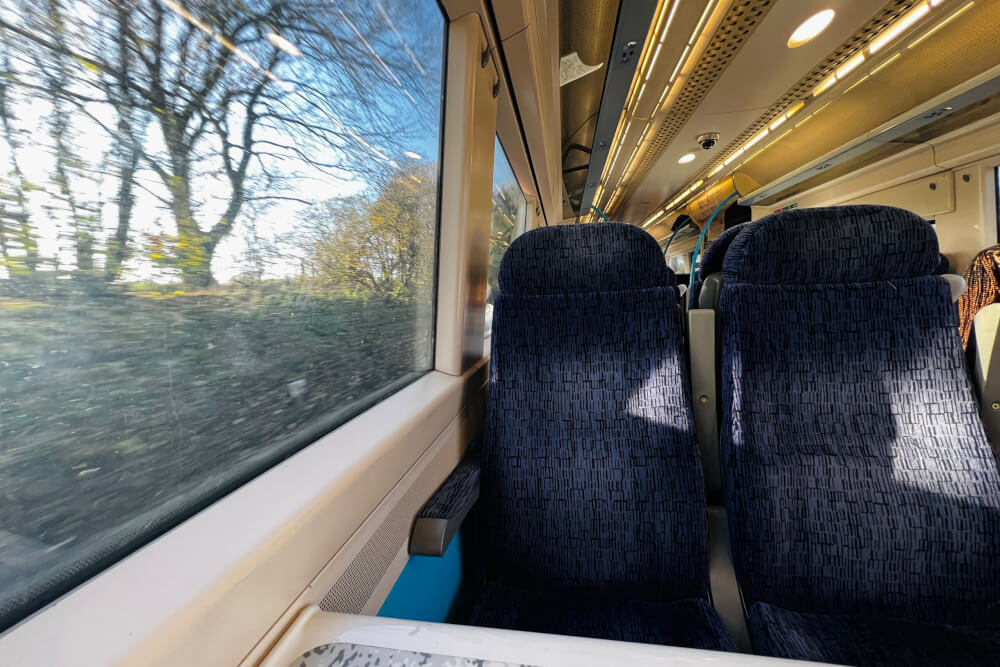
Now after your journey is complete, it’s onto…
Step Nine: Disembark
If you are not getting off at the end destination, then start prepping for disembarkation about 10 min before your arrival time. This gives you plenty of time to gather your belongings and bags in a rational, non-crazed manner.
I like to keep an eye on my location via Google Maps so I have a rough idea of how far I am from my stop.
NOTE: The term “alight here” is often used on UK trains. It basically means, “get off here” and is often used in the context of “alight here for x connection, or x place”.
Make sure you memorize the name of the stop you’re meant to get off at because most major UK cities have multiple train stations and it gets a little confusing once you’re in the city.
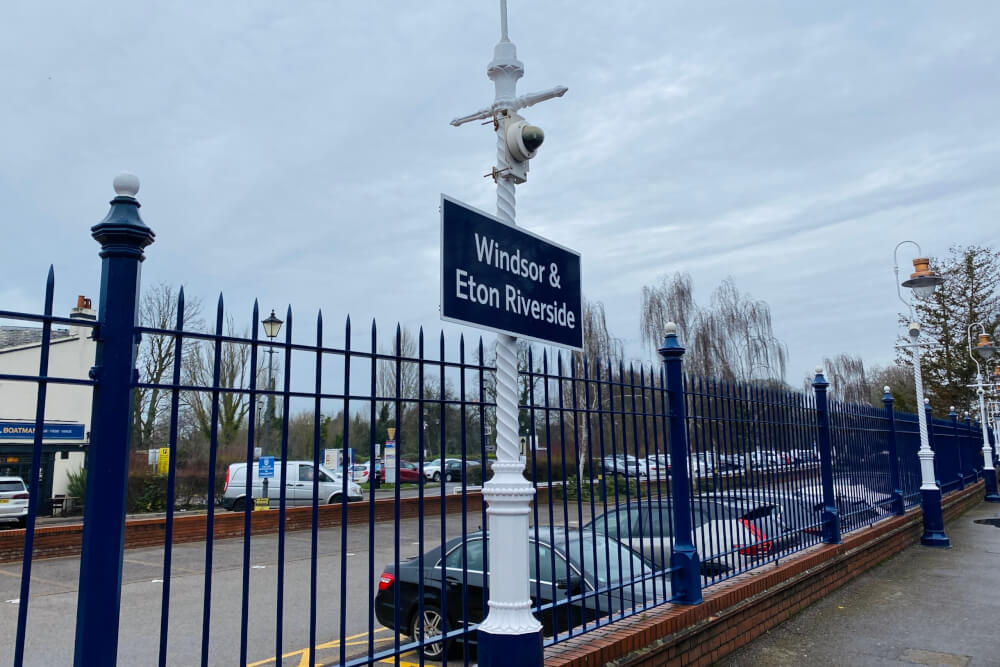
Upon arrival, if the door isn’t opening then again look for a button with the <> open symbol.
Once the doors are open, be careful getting off the train as there’s often a gap/step.
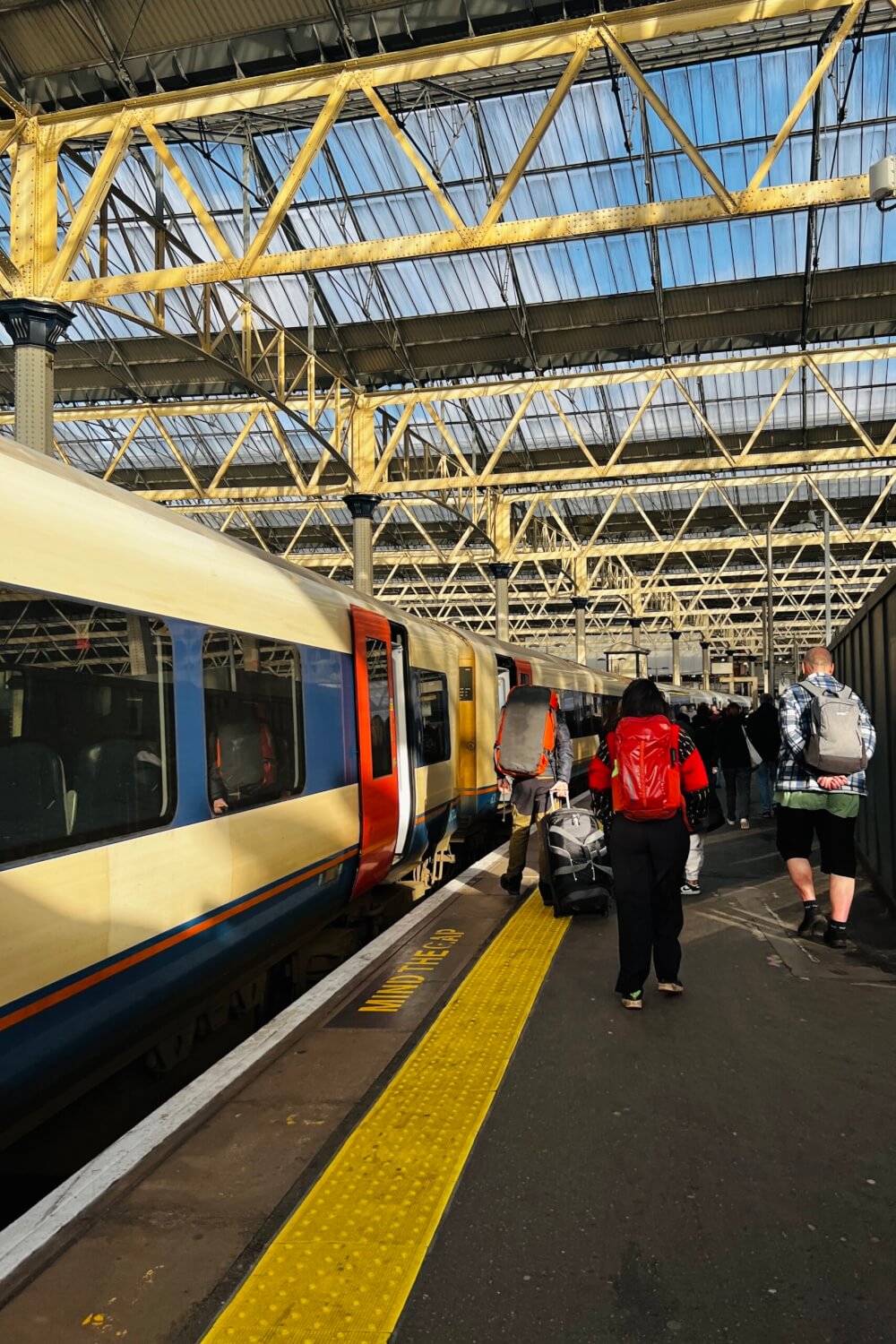
To navigate your way off the platform and onwards to wherever you need to go, keep an eye out for signs that will point you in the right direction.
If you are transferring onto another train, look around for big signs pointing to different platform numbers. If it’s a tight connection (10 min or less) you may want to speed walk or run, depending on how big the station is.
NOTE: Remember, you’re on a train platform, so to reach other platforms you’ll sometimes need to either go via a tunnel underground or a bridge above ground. Keep an eye out for stairs/an elevator so you’re not panicking to find ways to reach your next platform.
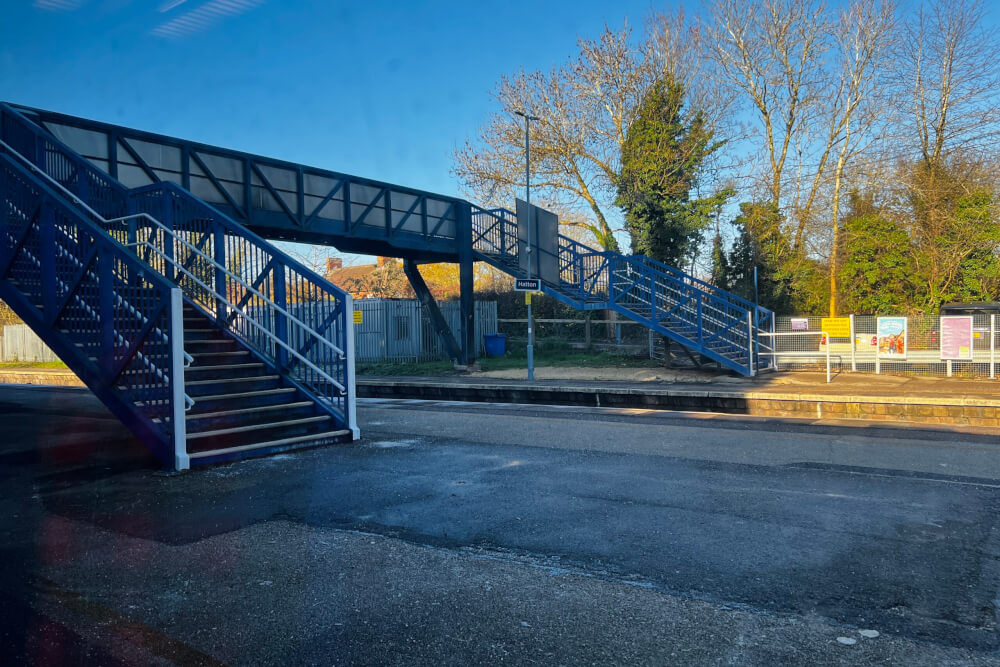
If this is your final destination, then beware that you might need to take your ticket out again for scanning at the fare gates. If you have any trouble, then you can also get a staff member to let you through manually (assuming your ticket is valid, and it’s simply a tech issue rather than an awkward ‘fare evasion’ issue, of course).
As you complete the journey to your final destination, remember that your train ticket is usually only valid for that specific train you boarded, so you won’t be able to use it for onward travel on the local public transport network, so you may need to purchase an additional ticket to get to your hotel.
Lastly, take note that in the UK, with many companies if the train is more than 15 minutes delayed (which they often can be), you are entitled to compensation.
This is through a program called ‘Delay Repay’ that is handled by each individual train company, so Google “your train company + delay compensation” to find the step by step details.
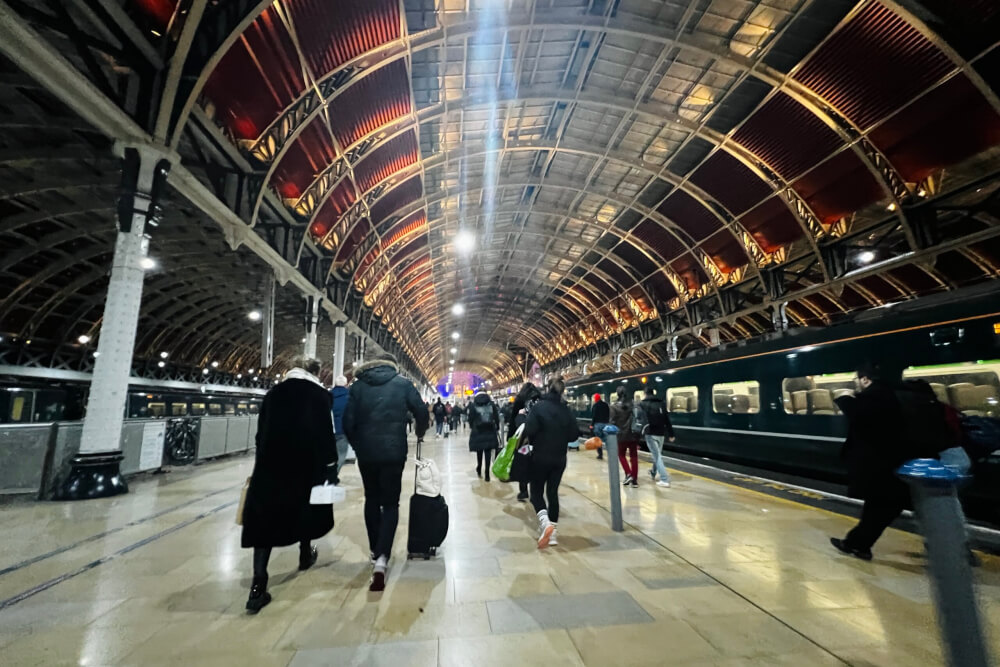
I Hope This Step by Step Guide on Taking Trains in the UK was Helpful!
Let me know in the comments if you have any more questions.
My Go-To Travel Favourites:
🧳 Eagle Creek: My favourite packing cubes
💳 Wise: For FREE travel friendly credit cards
🍯 Airalo: My go-to eSIM
🏨 Booking.com: For searching hotels
📷 Sony A7IV: My (amazing) camera
✈️ Google Flights : For finding flight deals
🌎 WorldNomads: For travel insurance
🎉 GetYourGuide: For booking activities
Leave a Comment Cancel reply
By using this form you agree with the storage and handling of your data by this website. *

Train Travel in the UK: How To Travel Around Britain by Train
Train travel in the UK is one of my favourite ways to get around. With epic views and the convenience of train stations right in the middle of Britain’s major cities, travelling by train can give you extra time for sightseeing, especially if you have a tight schedule.
Britain by train can also be frustrating if you’re not familiar with British trains – especially if you’re a first-time visitor to Britain.
After years of daily train commuting, here are some tricks I learned about travelling by train in the UK. The tips in this guide to train travel in the UK helped me save (lots of) money and made travelling around England much less stressful.

Grey Globetrotters Travel Blog contains affiliate links. As an Amazon Associate, I earn from qualifying purchases. See my disclaimer for more information.
How to Navigate Train Travel in the UK
Working out how to use a train seems simple enough. Buy a ticket, then travel from A to B, but every country’s mass transport system has different features , and British trains are no exception.
As a Brit who lived outside the country for years before moving to London for work, I had to get to grips with the quirks of train travel in the UK, both for work and leisure.
I must tell you that travelling in Britain by train can be uber-frustrating, and I made plenty of mistakes. I also wasted time and spent far more than I needed to, all because I didn’t know a few basic facts about how train travel in the UK works.
But it’s not all doom and gloom, and it’s not true that all British trains are terrible (despite what you may hear).
How Train Travel in the UK Works (Warts and All)
Until 1997, British Rail was a state-owned monopoly, but it was sold off piecemeal and entirely privatised by 1997. Today, Britain has multiple rail operators competing for customers, sometimes on the same routes . And that matters to you as you plan your train travel in the UK.
#1 Planning Your Trip
Buy the right ticket.
Make sure you buy a ticket from the right train operator for your journey ; otherwise, you risk getting stung for a penalty fare on board.
Travelling from London Gatwick airport to central London is the perfect example. Several train operators cover the route; however, only premium-priced Gatwick Express tickets are valid on Gatwick Express trains.
PreBook Your Gatwick Express Tickets Avoid the queue for Gatwick Express tickets (yep – it can be long and slow, especially at peak times during the day and in holiday periods). You can get your Gatwick Express tickets here and waltz straight onto the train – easy-peasy!
Check Your Train’s Departure and Arrival Points
Even in some of the UK’s smaller cities, there are several train stations, sometimes with trains to the same destinations. It’s not just ‘A London thing’, either.

For example, you can get trains to Reading in Berkshire from both London Paddington and London Waterloo stations, and they are miles apart; Manchester has four main railway stations in the city centre (Piccadilly, Victoria, Oxford Road and Deansgate), and you can get trains to Leeds from both Wakefield Westgate and Wakefield Kirkgate stations.
Confused? If in doubt, it’s best to check before you book your train travel in the UK!
If you’re heading to Leeds, you might also like : The Most Instagrammable Places in Leeds
Buy Train Tickets in Advance for the Best Price
When I moved to London, I learned quickly that buying advance tickets is the best way to save money on train travel in the UK. I didn’t have or need a season ticket, but I found out that train fares (like airline fares) tend to get more expensive the closer you get to the departure date (especially for longer intercity journeys).
The best discounts apply when you book months or weeks in advance, but even a few days can make a big difference. Only buy on the day you travel if you absolutely must; if you do, expect to pay a premium for your train tickets UK!
Get a Railcard
Before you buy any tickets, get yourself a railcard: they are a great way to save (a lot of) money on train travel in the UK. You’ll pay for the card, but in my experience, it will pay for itself quickly. Typical savings can be up to one-third off the price of your fare(s).
Find out about the different types of railcards here , including friends and family , senior travel , two-together and group travel .
Find the Deals
Deals and bargains are always available, but finding them can feel like searching for a needle in a haystack. If you’re already in the UK, your local station or travel centre staff can offer sound, impartial advice and find you the best fares .
Start by looking online with National Railways and do your research before you book to travel around Britain by train! Here are a few things to consider:
- Do you want to pay a premium for a fast train, or would you be happy with a slower, cheaper “stopper” service?
- Do you need to travel during the morning peak, when trains will be crowded and more expensive? Could you start your journey after 9.30 am?
- Is it cheaper to buy two single tickets or a return one?
- If you can save money by changing trains several times, would you be happy to do this? Or do you want a direct, point-to-point journey?
Changing trains often means changing platforms and climbing up and down flights of stairs, as not every station has a lift (elevator). Check that you have enough time (and energy) to do this but not so much time that you’re waiting for ages for your connection!
Book The Right Seat
So, you’re ready to buy your ticket and happy with your secured deal. Next, you can choose where you get to sit.
- Are you looking to travel first or second class?
- Do you want to be in a forward or backwards-facing seat?
- Would you prefer to be in a group of four seats around a table or to have an airline-style seat with a small fold-down table?
- Would you like a window seat or one in the aisle?
- Do you need a power socket? (Choose a window seat to bag one of these!)
- Would you prefer the peace of a quiet carriage, where passengers are asked not to use mobile phones?
- Do you want a seat near the luggage racks, to keep an eye on your bags?
Check whether any significant events are happening on the day you want to travel. A big sports event or concert can make for a crowded and rowdy train (especially for big football fixtures). I avoid travelling on these services wherever possible.
Avoid the Last Train (Especially at the Weekend)
Britain has a problem drinking culture. Sad but true. If you don’t mind sharing a train half-filled with sweaty party people and the aroma of late-night takeaways, you might enjoy travelling on the last train at night.
On the other hand, if sharing a train carriage with loud, drunken, belligerent people is not what your dreams are made of, aim for an earlier train – or spring for a first-class ticket!
#2 Before You Travel
Don’t assume you’ll be able to park at the station.
If you’re driving to your departure station, don’t assume you’ll find a parking space, especially at busy commuter stations. Train station parking is often at a premium, and it might be all used up by 8 am . It could also be pretty pricey!
Allow Plenty of Time Time to Get to the Station
I can’t tell you how often I thought I had plenty of time to catch a train; then I sprinted for it at the last minute! Britain’s traffic can scupper the best-laid plans , and so can the frequently delayed public transport. No matter how you plan to get to the station, make sure you have plenty of time to arrive stress-free.

Buy/Collect Your Tickets
Always opt for digital tickets; otherwise, you’ll need to go to a ticket machine, and they are often busy or out of order. It’s no fun being stuck in the queue at a single ticket machine as your train rumbles into the station!
Morning (7 am to 9 am) and evening (4 pm to 7 pm) “rush hours” are the busiest times, but lines can build up at ticket machines at any time .
Travel Light
One of the first things I learned about how to travel by train in the UK was that baggage trolleys are as rare as hen’s teeth at UK train stations. There are rarely any porters, and many stations don’t have elevators . If you’re very lucky, some kind soul might help you heft your bag onto the train but never expect it.
There is a step up from the platform to the train on most trains in the UK, which can be tricky with a large bag! Travelling with more than one large bag is a complete nightmare – my advice is not to do it!

Find the Right Platform and Get on the Right Train
It’s all too easy to get on the wrong train.
I once boarded a train from Birmingham International Station that I thought was going west to Shrewsbury. According to the departures board in the station, I was on the right platform, but I didn’t realise there had been a platform change announcement – I ended up travelling on a non-stopping service south instead to a tiny town in mid-Wales I can’t even pronounce!
My one little mistake added more than 4 hours to my journey 🙁
Check and double-check the departure boards, and don’t be embarrassed to ask the staff for help. At busy stations, where some trains are running late, the train pulling into your platform at your train’s departure time might not be your train! It could be another train that’s also running late.
If in doubt – ask the staff – they are there to help you!
Take Your Own Food and Drinks
British Rail sandwiches used to be a standing joke in this country, but time has moved on, and the food served on trains has improved a little.
Y ou can never guarantee the food trolley service or the buffet car will operate when travelling around Britain by train. Sometimes the train is too busy, or there’s a staff shortage or another problem.
Stock up on the food and drinks you want before you board your train . Train stations in most towns and cities have food outlets, and some have supermarkets too, so it’s usually easy to grab something for your journey.
If you’re lucky, rural stations might have a drinks vending machine, and the selection will be minimal late at night anywhere other than the biggest stations.
Delays and Cancellations Can Blight Your Plans
Unfortunately, train travel in the UK is often delayed or cancelled . It drives commuters and leisure travellers crazy and can take the shine off a trip. Delays have a bigger impact if you’ve got a connection to make, a plane to catch or an event to attend, so check the news and plan well!
I always book the train before the train I need to take!
Rail companies in the UK carry out most of their maintenance works overnight and at weekends to minimise passenger disruption. Or is it to maximise staff overtime pay?
If your line is closed due to maintenance works, you may be offloaded onto the pure hell of a ‘rail replacement bus’ instead – be aware that these connections are much slower than trains!
On a positive note, if your train journey is delayed for more than 30 minutes, you can apply for “delay repay” compensation . Hold onto your ticket if you’re delayed, and check with National Rail to see if you’re entitled to make a claim and how much you can claim (up to 100% of your ticket price).
#3 On The Train
Beware of the train toilets 🧻🚽.
One thing you’ll learn quickly about train travel in the UK is that train loos are grim. Use them if you’re desperate, but they are not great. Some trains (and some stations) don’t have a toilet at all!
Here are a few tips:
- Don’t pick a seat near the bathroom (often a bit whiffy).
- Don’t expect any toilet paper or paper towels left, and soap is a luxury. Carry your own wipes!
- Don’t expect the floor to be anything other than unsanitary – it’s not the staff’s fault, but some passengers behave very badly.
- Don’t expect a bag hook. As the floor will probably be grotty, you may end up holding your bag in your teeth (been there!) to avoid it getting dirty.
Don’t Expect Air Conditioning
In a country where few people have aircon in their homes, it’s perhaps no surprise that many trains don’t have aircon either. You might have to open windows for ventilation.
Train travel in the UK can get uncomfortably hot in the summer, so be prepared by wearing layers and carrying plenty of water . (Don’t expect the train to stock enough water for everyone or even to be able to buy some).
Unreserved Seats
If you buy your tickets on the day of travel, you can’t reserve your seat(s). You also risk not getting a seat, especially during busy commuter travel. If you don’t have a reserved seat, try to be one of the first passengers to board the train and hunt for seats that show as ‘available’.
💡 Pro Tip: If you’re one of the last people to board, and a reserved seat is vacant, it’s worth bagging it, as the passenger may be a ‘no show’. The worst that can happen is they also turn up late and then ask you to move.

Reasons to ditch the car and ‘let the train take the strain’
- A trip up the Northumbrian East Coast mainline from York to Edinburgh is fabulously scenic (pick a forward-facing seat on the right-hand side of the carriage for the best views)
- Routes through the Scottish highlands are out of this world. Crossing the Glenfinnan Viaduct by Jacobite steam train is the ultimate Hogwarts Express experience and probably the most famous of all of the steam train trips in the UK .
- The rail network is peppered with magnificent bridges and viaducts, including the magnificent 17- span Victorian engineering marvel – the Ribblehead Viaduct
- Travelling by train takes you into the heart of Britain’s cities with no worries about where to park
- Whistle past famous landmarks, see ancient castles and breathtaking modern architecture from the comfort of your seat.
- Taking the train is a great sustainable travel option!
Wrap Up – Train Travel in the UK
Despite the idiosyncrasies of British trains, I still get a real thrill from train travel in the UK – especially heritage railways ! Britain’s diverse landscape makes it one of the best places in the world to enjoy journeys by rail.
LOVE IT? PIN TO YOUR UK TRAVEL PINTEREST BOARD FOR INSPIRATION!

Coralie Thornton, the owner and author of Grey Globetrotters, has been a traveller for more than four decades. Her passion for adventure has led her through over 40 countries, seeking cultural experiences, delicious foods, and hidden gems. Today, she helps others experience the UK, Europe, Egypt and China, with meticulously crafted travel itineraries and affordable luxury travel guides.
- Best Time to Visit
- Weather & Climate
- Top Cities to Visit
- Best U.K. Destinations
- Traveling by Train
- Driving in the U.K.
- Power Adapters
- Tipping Etiquette
- Top Things to Do
- Free Things to Do
- Family-Friendly Attractions
- Outdoor Adventure Destinations
- National Parks
- Must-Try Food in the U.K.
- Search Please fill out this field.
- Newsletters
- More to Explore
Getting Around Britain - A Guide to Transportation Options
:max_bytes(150000):strip_icc():format(webp)/FerneArfin-5b6f00c446e0fb0050324e74.jpg)
If you need to get around the United Kingdom without a private car, there are several options to choose from. Will it be trains, buses or long-distance coaches? Time, cost and environmental concerns are all part of the mix. This guide will help you find the travel choices that best fit your plans, time, budget and conscience.
Using British Trains to Get Around
British trains have been around, in one form or another, since the early 1800s. The network is well established and extensive, making train travel the easiest and, usually, the fastest way of getting around England, Scotland and Wales. It is also acknowledged to be the most eco-friendly way to travel in Britain. Most major towns are connected to London and to each other by either direct trains or by links through stations that are regional hubs. Smaller communities may have less frequent service or may require changing trains a few times but chances are there's a train station nearby.
How to Plan a Train Trip
Government-owned Network Rail is responsible for the tracks and the 20 largest train stations, managing timetables and regulating fares. Many different private companies own and operate the trains themselves. Figuring out which train company goes where can seem confusing but it's easier than you think.
The private companies belong to the Rail Delivery Group (RDG ) and one of the great services they provide together is National Rail Enquiries. This is a website and an app that enables you to find trains and fares and directs you, by link, to the train companies to buy tickets. It has tools to find the cheapest fares and service alerts.
The good news is that any UK train company can take your booking and payment for any other train company on the system. The British train fares are nationally regulated so the fare for a given journey will be the same regardless of which train company sells you the ticket or operates the trip.
Find out more about National Rail Enquiries and how to use it.
Types of British Train Tickets
Tickets are 1st or 2nd class or classless. Unless you are taking one of the few overnight train journeys, there is little point in spending extra on first-class service.
Most trains have open seating; once you have a ticket, you can sit wherever you like within the class of service you've bought. An exception is for particularly busy routes when you may have to book a seat along with your travel ticket. Usually this is free or costs a nominal fee.
Do pay attention to the difference between advance fares and anytime fares, single (one-way) or return (round trip) tickets, because the savings can be considerable.
Main Categories of Train Fares and Ticket Prices
What you pay for a British train ticket usually depends on when you buy it and when you plan to travel. Here are the main categories of ticket prices:
- Anytime - The most expensive tickets are "buy anytime-travel anytime". They have no restrictions on the date or time of travel. For some trips, they can cost ten times more than an advance purchase or "off-peak" ticket.
- Off-peak - Buy off-peak tickets at any time but only use them to travel on off-peak services. They are cheaper than Anytime tickets though not the cheapest. One confusing aspect is that "off-peak" time is not standard but varies from one train company to another and from one service to another. Trip planning tools such as National Rail Enquiries can find you the off-peak services for the trip you want to take.
- Advance - Advance fares are the cheapest. They are one-way tickets purchased and booked in advance for specific trains. How far in advance depends on the popularity of the journey. For some trips, you can book the cheapest fare as little as the day before while for others you need to book your train at least 14 days in advance. These tickets commit you to a specific train at a specific time. If you miss that train, there may be another one coming right along but catching it will cost you the full fare for the trip. And the difference can be gobsmackingly huge. For example, in January 2020, a one-way ticket from London to Lincoln at 8 p.m, purchased a week in advance would cost thirty-two pounds and 50pence. Show up at the last minute and the same trip would cost eighty-eight pounds and 50 pence.
Where to Buy Tickets and How to Pay
At the station: Most of the big mainline train stations have ticket offices where agents sell tickets. But, unless you are buying advance tickets, you won't be offered any discounts or savings.
By Phone: The train companies that National Rail Enquiries directs you to usually have phone numbers on their websites but you may be left hanging on for quite a long time.
Online: Choose journey and fare and let the National Rail Enquiry tool guide you to a train company to buy your ticket, using a debit card or (for international customers) a credit card. You'll get an email with a confirmation number. Print and save it. Then get your ticket:
- By mail, if purchased four or five days in advance from a UK address.
- At a fastTicket machine at the station. Bring the credit card you used to pay for the ticket, along with the confirmation number you've printed out. Follow the directions on the machine. Arrive early enough for the queue at the automatic machine. Any fastTicket machine can dispense booked tickets for any departure station as long as you have your booking number and credit card. So as soon as you are at a station, save time and pick up all your tickets at once.
- At a manned ticket booth . Present credit card and confirmation number at a manned ticket window.
- When the station is unmanned Smaller stations may not be manned. If you board at an unmanned station, you can buy a ticket on the train. But make sure the station really is unmanned because if staff is available and you board without a ticket, you may be fined or have to pay the highest available round-trip fare.
Using Rail Passes
BritRail Passes are prepaid tickets valid for unlimited travel during specified periods. They are sold as:
- Consecutive Passes , good for a fixed number of days of unlimited British rail travel.
- Flexipasses , for a specified number of days (4, 8 or 15) - not necessarily consecutive - during a longer period, currently two months.
BritRail passes are available for UK, Scotland-only or England-only travel; and as Senior, Youth, Party or Family passes. They are not sold in the UK and must be purchased online or through a travel agent before you arrive.
Because the tickets are prepaid, most of the time all you have to do is show up on time and hop on the train. If you want to book a seat or sleeper accommodation, you need to do that at a manned railway station. Seats are usually free, as are reclining seats in overnight trains, but there is a charge for sleeper births.
Are they worth it? - So many cheap rail fares are now available when purchased online in advance, you may not save anything by buying a BritRail Pass . It is worth comparing the cost of the pass with the fares listed on National Rail Enquiries before buying one. If, however, you like to travel spontaneously, you probably should buy a pass because last-minute train tickets bought any other way are much more expensive.
Public Transportation in Northern Ireland
Unlike the rest of the United Kingdom, all public transportation in Northern Ireland is operated and coordinated by one umbrella organization, Translink . They provide coach, bus and train services connecting at a province-wide network. That includes urban mass transit in Belfast, airport transfers from Dublin or Belfast airports to Belfast city center and, in partnership with Irish Rail, cross border routes into the Irish Republic. Buy tickets online because they are much cheaper. A mid-day train from Belfast to Dublin (February 2020) cost ten pounds and 99 pence online but 30 pounds for cash at the station.
Use the integrated travel planner on their website. It gives a choice of searching for bus, train or combined services and an easy link with to buy tickets.
Other Ways of Getting Around Britain
Coach Travel- Long-distance buses are known as coaches in the UK. Several intercity bus companies provide some of the cheapest ways to get around. Fares vary with operators, generally ranging from five-pound promotional fares to upwards of 35 pounds for longer trips. Coach tickets are usually offered as one-way or "singles."
These are the main coach operators in the UK:
- National Express- Intercity travel in England and Wales, tickets online or at main coach terminals
- Megabus - A stripped-down service offered to some destinations with tickets only available online
- Scottish Citylink - Intercity services across Scotland
- TrawsCymru - Medium and long-distance express buses in Wales
- Ulsterbus - Part of Northern Ireland's Translink service described above.
Regional Bus Services - Different bus operators run networks of regional buses. Tickets for some of these buses can be purchased online but usually you just buy them on the bus. Finding out fares for these services is pretty hit and miss but you can get a general idea from the operator's website. Some of the main companies for regional buses are:
- The Oxford Tube One of the most popular long-distance bus routes, this is an express service between several stops in Oxford and several stops in London. It runs 24-hours a day, with peak time buses leaving every 12 to 15 minutes. Tickets can be booked online or from the driver using contactless credit or debit cards, or via mobile payment apps. Single adult fare is nine pounds.
- Stagecoach A major operator of regional bus services all over the country. They use a variety of local names but their website has a very good journey planner that integrates all the information with maps, timetables and a ticket-buying widget.
- Arriva - Another major operator of regional bus services in London and the home counties, England's northwest and northeast, and Wales. Their website has maps, journey planners and ticket buying options.
Travel Tips
- Check a map - Sometimes a better (cheaper, more direct, faster) train may be scheduled for a station just a short taxi ride from your chosen destination.
- Compare prices Two singles can be cheaper than return tickets.
- Buy before boarding . You can be fined for boarding without a ticket or be made to pay the highest price for the tickets.
- Keep your train ticket even after it has been checked on board. You may be asked to show your ticket or put it through a machine to leave the platform.
- Use online information sites to plan coordinated journeys using different modes of transportation. The two most useful are:
- Traveline - a partnership of transport companies, local governments and passenger groups. With its journey planner, you can plot door-to-door journeys that include trains, buses, walking and local taxis.
- Trainline - An international organization of 270 train and coach companies across the UK and Europe that helps you combine train and coach travel and book tickets.
Related Articles
More related articles.
Travel Europe on a Budget
The Savvy Backpacker
City Guides .\33 a132798-3f3b-4585-954d-7e70cf863447{fill:#231f20}
England train guide | how to travel england by train.
How to travel England by train and tips for finding the best price on train tickets.
Transportation
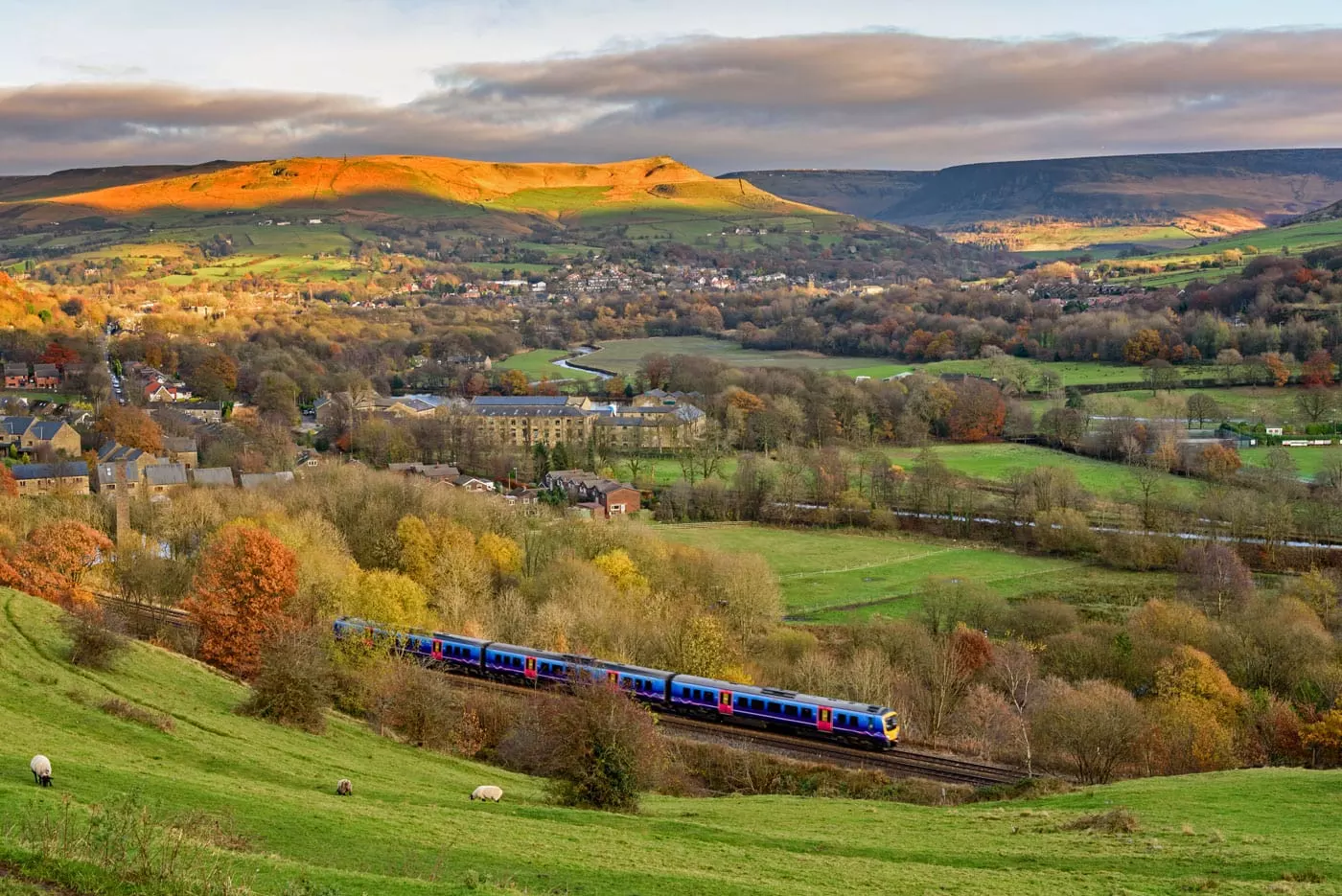
While not as advanced as their mainland European neighbors, England has an extensive rail network that connects all the major cities and most small towns. In this England train guide, I’ll cover everything you need to know about traveling through England by train and tips for booking the cheapest train tickets.
Quick Overview of England’s Rail Network
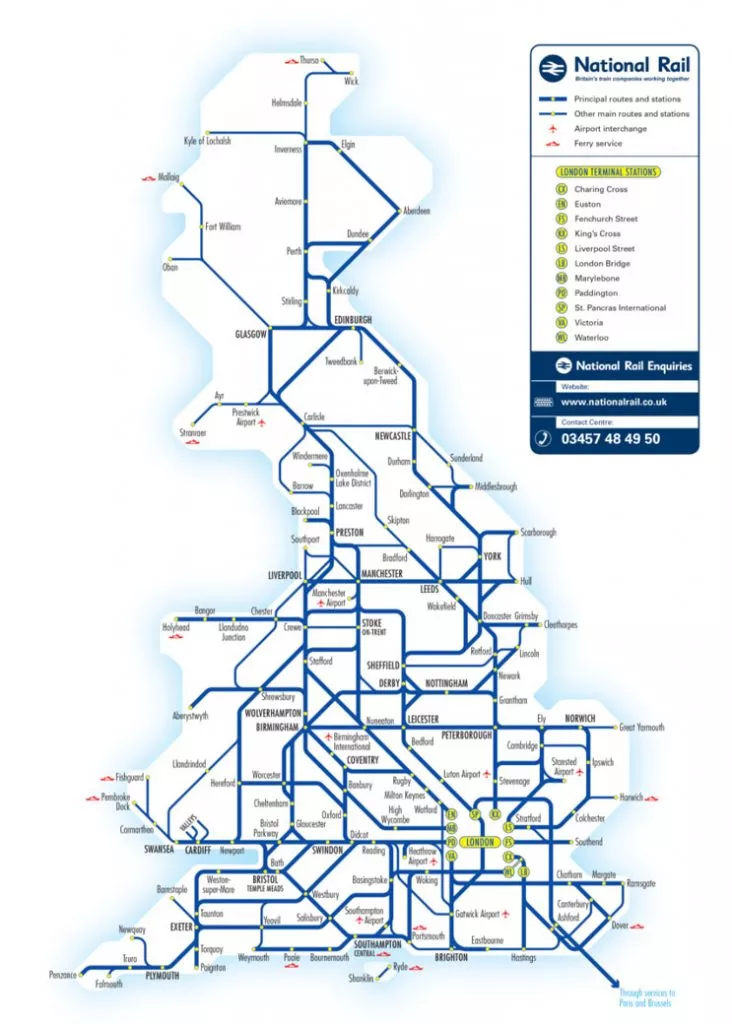
England’s rail network was privatized in the 1990s so there are multiple regional train companies that operate throughout the country. Luckily, all these train companies operate under the umbrella of England’s National Rail service so they essentially operate as a single entity. However, there are a few quirks that I’ll discuss in greater detail throughout this article.
Compared to mainland Europe, England’s trains are slower with the fastest trains only hitting around 125 MPH (compared to some trains that reach around 190 MPH in other European countries). However, England is a fairly small country so most journeys are quick and efficient.
Most large cities in England are directly connected via high-speed routes and smaller cities and towns are connected by slower regional trains. England is also directly connected to France, Belgium, and the Netherlands via the Eurostar high-speed train that runs under the English channel.
How To Book Train Tickets In England
Alight, let’s look at everything you need to know about booking your rail travel in England.
ELECTRONIC TRAIN TICKETS AND HIGH-SPEED DATA IN THE UK
Most train tickets in the UK (and much of Europe) are now electronic so you’ll want reliable high-speed data for your phone—I wouldn’t rely on free wifi or your domestic provider’s international service as it’s often slow/unreliable. Luckily, getting high-speed data in the UK is fairly simple and affordable. Here are a few articles I’ve written to help you get set up:
- Guide To Mobile Data Plans and Smartphone Phones in Europe
- How To Buy A SIM Card and Mobile Data Plans in Europe
How to Find Train Schedules, Routes, and Times
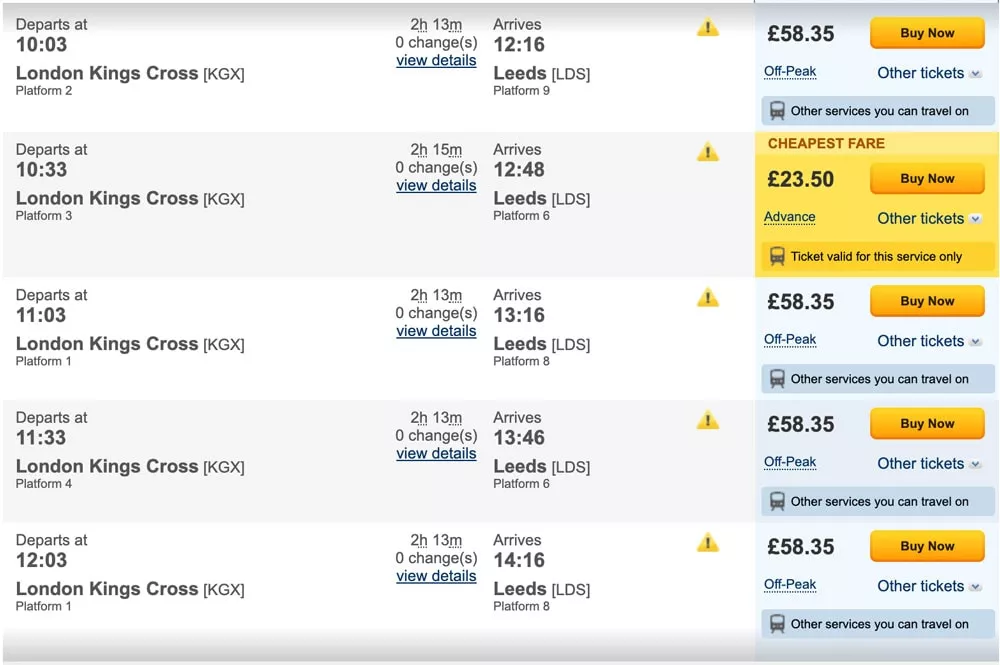
Finding train schedules is easy. You can use the official National Rail website to find the schedule of any train in England. However, you can’t buy tickets directly from this website so it will redirect you to the website of whatever private rail company services your selected route if you want to buy a ticket (it’s a bit of a clunky process).
Alternatively, you can use a third-party booking website like Omio and Trainline to find the exact same trains (including the same train fares) as you’d find on the National Rail website but you won’t have to deal with getting redirected to another website if you want to purchase.
Omio and Trainline both have nice smartphone apps that keep your tickets organized in a single location—which is a nice bonus.
How and Where To Buy Train Tickets
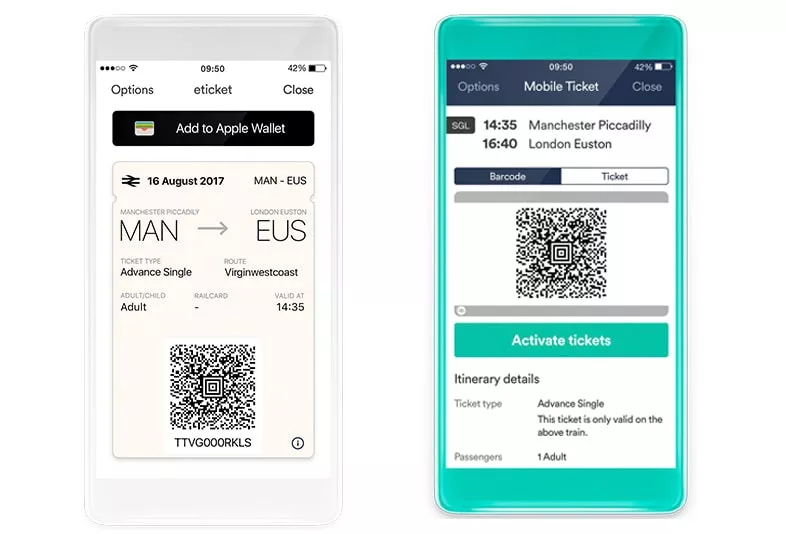
As mentioned before, I prefer to use Omio and Trainline for booking my train tickets since their websites/apps are user-friendly and they both accept international credit cards.
Most train tickets are digital so there is no need to print your tickets (just make sure to save your tickets to your phone/laptop or have a reliable internet connection)—the conductor will simply scan the ticket’s barcode.
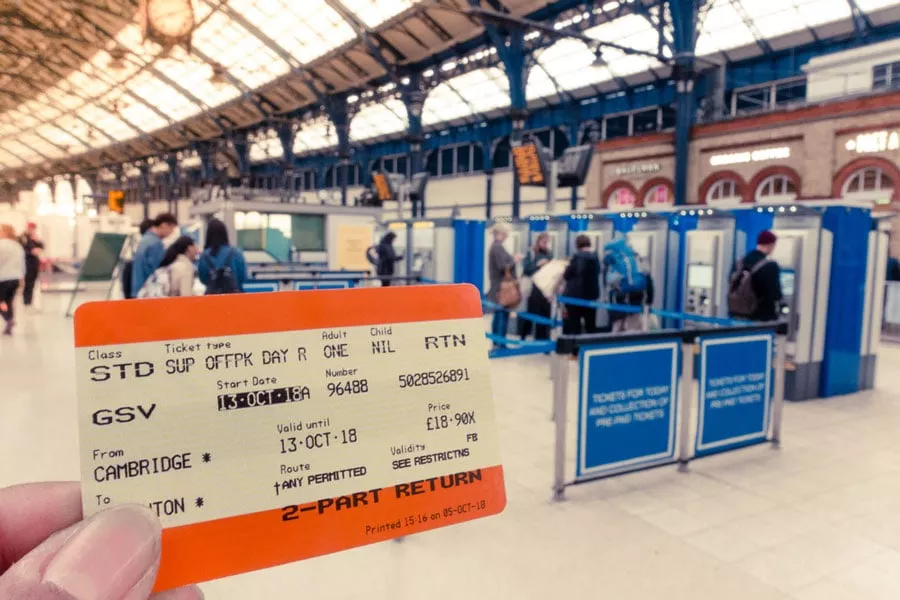
All non-electronic train tickets can be picked up at the train station’s automated ticket machine—simply type in the 8-digit ticket reference number that was emailed to you after booking.
How To Find The Cheapest Price on Train Tickets in England
There are a handful of strategies to help you get the best price on train tickets. Let’s dive in:
Peak and Off-Peak Fares
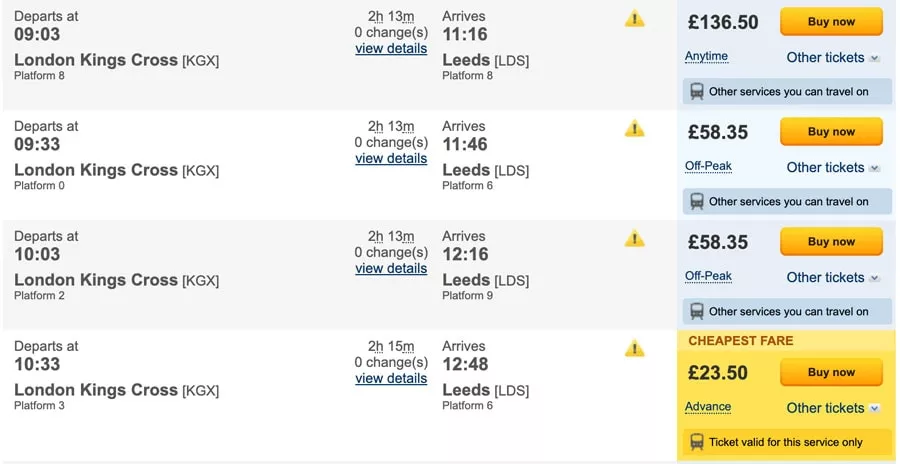
Many train routes are more expensive during peak travel times — which is generally Monday to Friday before 10:30 am and between 3:00 pm-7:00 pm. So it pays to look at tickets that are outside these windows.
Less Flexibility Is Cheaper
There are a few different types of train tickets and the price reflects their flexibility:
- Anytime Fares: Anytime tickets are essentially valid on any train on your selected route. Of course, they’re the most expensive.
- Off-Peak Fares: Off-peak tickets are generally valid for any train outside the peak morning and evening rush hour periods.
- In general, the earlier you book advanced fares the cheaper they are. In addition, less desirable tickets (i.e. mid-week and mid-day) tend to be the cheapest.
Booking Advanced Fares Too Early Can Be More Expensive
In many cases, it pays to book advance fares early but you will often end up paying quite a bit more if you book more than 9-10 weeks in advance.
Therefore, if you’re looking at tickets early and they seem really expensive I recommend waiting a bit and monitoring prices.
Split Ticketing
Split Ticketing is a slightly advanced way to save money on some train journeys throughout England.
Basically, thanks to the whole Anytime and Off-Peak fare pricing schemes, sometimes a long train journey can start during the more expensive Anytime fare time but then the remainder of the route can cross into the cheaper Off-Peak time — but you still have to pay the Anytime fare for the entire journey.
This is where split ticketing comes in. You essentially book two tickets for one journey — one during the expensive Anytime portion and then the second ticket covers the Off-Peak portion.
Again, this is a complicated way to save money but in some cases, you can save a decent amount of money — other times there are no savings (especially on popular routes). Check out trainsplit.com to see if splitting your desired route will save you any cash.
Try Booking Two Single Tickets Instead Of a Roundtrip Ticket
While not always the case, it can sometimes be cheaper to buy two single tickets as opposed to booking a roundtrip ticket.
BritRail Rail Passes
If you’re spending a lot of time exploring England/Scotland/Wales you might want to look into a BritRail pass.
BritRail is a rail pass that’s available to all non-UK residents — you can purchase them at ACP Rail .
The good thing about BritRail is its flexibility — as you can just hop on the train without planning ahead. However, you might save money if you’re able to book normal tickets a couple of weeks in advance but then you lose spontaneity.
The BritRail pass is a little confusing because there are multiple versions of the pass that cover different regions of the UK.
- BritRail Pass
- BritRail England Pass
- BritRail London Plus Pass
- BritRail South West Pass
- BritRail Spirit of Scotland Pass
- BritRail Central Scotland Pass
- BritRail Scottish Highlands Pass
From here, you can choose between 3, 4, 8, 15, 22, or 30-day passes. These come in two versions — Continuous and Flexible:
- Continuous: Unlimited travel for the duration of your pass.
- Flexible: A flexible pass gives you a certain number of travel days that can be used during the duration of your ticket. For example, five days within one month.
Passes start around $120 but can go up to $600+ for longer passes.
It’s best to poke around ACP Rail . to see which pass works best for your trip.
NOTE: BritRail is not valid on special heritage railway lines, London’s Underground/Overground services, or the Eurostar.
Taking The Eurostar To & From London
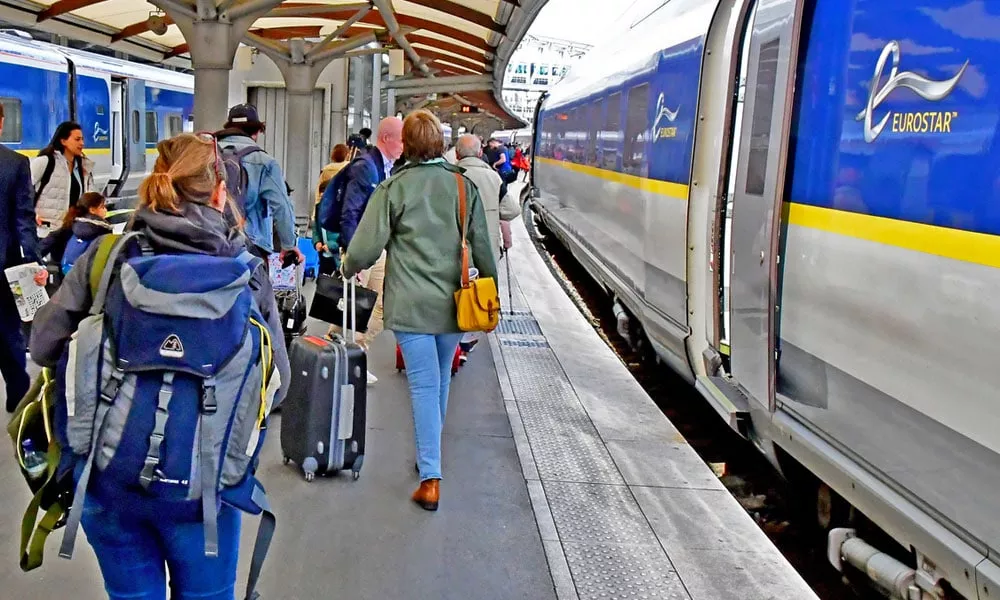
The Eurostar is an amazing way to travel between London and Paris in about 2.5 hours — it also connects to Amsterdam, Avignon, Brussels, Bourg-Saint-Maurice, Disneyland Paris, Lille, Fréthun, Lyon, Marseille, and Rotterdam.
Eurostar also operates much differently than the rest of England’s train network so I wanted to give it its own section.
First, Eurostar can be very expensive if you book last minute so try booking as early as possible — tickets are generally available for purchase 180 days before departure. For example, Eurostar starts around $45 but can be $180+ for a last-minute ticket.
Second, Eurostar has airport-style security so you’ll need to arrive a little early so you don’t miss your train.
Practical Advice About Traveling England By Train
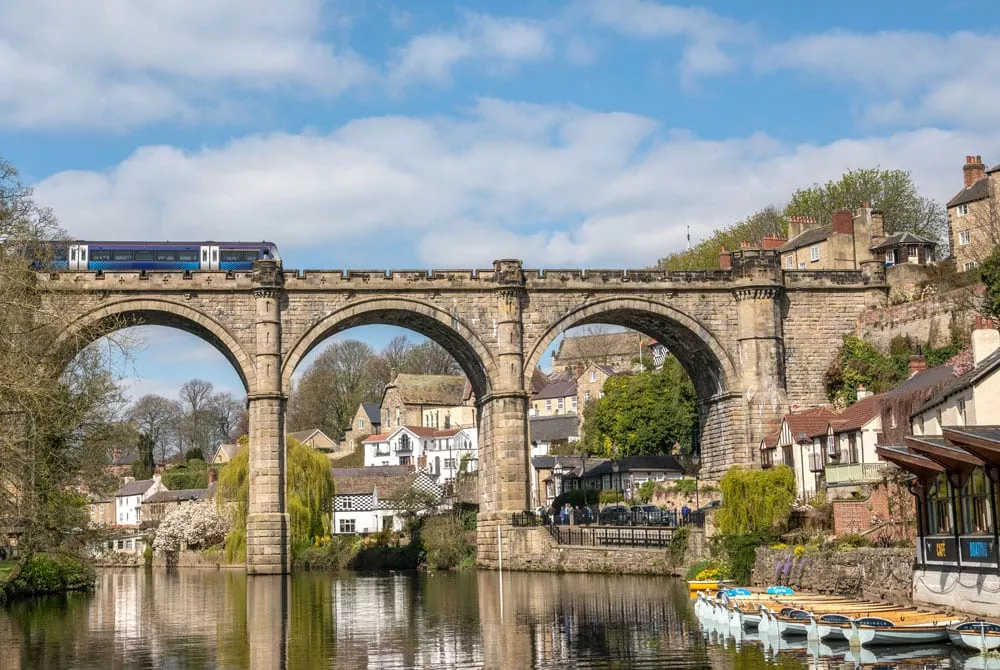
Now that you have your train tickets, let’s look at a few more practical tips about train travel in England.
Train Journey Times From London
Most people visiting England spend most of their time in London so I wanted to give you an idea of how long it will take you to get from London to some of the most popular cities:
London to X:
- Cambridge (1hr 10mins)
- Oxford (1hr 10mins)
- Birmingham (1hr 20mins
- Bath (1hr 25mins)
- Bristol (1hr 40mins)
- York (1hr 50mins)
- Stratford-Upon-Avon (2hrs)
- Manchester (2hrs 5mins)
- Liverpool (2hrs 15mins)
- Newcastle (2hrs 50mins)
- Edinburgh, Scotland (4hrs 20mins)
The Difference Between First Class and Standard Class
English trains have two classes — first and standard. First-class tickets cost between 50%-100% more than standard-class tickets.
At a minimum, first-class trains have bigger seats, more legroom, and fewer seats per car. Most routes offer a free drink and a newspaper but a few routes come with a meal (but it’s fairly rare these days).
Standard class is still plenty comfortable. Personally, I don’t see any reason to sit in first class unless you want to splash out a bit.
Note: Sometimes the price difference between first and standard class isn’t much so it doesn’t hurt to look at both options.
Check The Departure Station
Most large cities (and even some smaller cities) have multiple train stations so double-check the station before arriving — I’ve made this mistake more than once.
Arrive Early If You’re Collecting Physical Tickets
There will often be a long line of people waiting to use the automated ticket machines so give yourself a little extra time because you don’t want to miss your train.
Pay Attention to Platform Changes
The train platform can often change at the last minute so pay attention to station announcements.
Pack a Lunch and Booze it Up
Yes, you can drink on the train. Don’t expect many options when it comes to food on most trains so it doesn’t hurt to pack something to eat.
More Budget Travel Tips

The Savvy Backpacker is dedicated to helping you travel Europe on a budget. Here is my complete guide to backpacking Europe and below are a few of my most popular articles:
- London Travel Guide : Tips for visiting London on a budget
- Best Hostels in London Guide : Where to stay in London on a budget
- Backpacking Europe Packing List : What to pack when backpacking Europe
- Best Travel Backpacks : My favorite travel backpacks.
- Best Travel Shoes : Keep your feet happy with comfortable shoes
- Recent Posts
- How To Buy Train Tickets in France | Guide To Buying French Train Tickets - July 26, 2024
- France Train Guide — How To Travel France By Train - July 25, 2024
- Best Prepaid USA eSIM Data Plans For Travelers | eSIM Buyer’s Guide - July 3, 2024

No Funny Business
The Savvy Backpacker is reader-supported. That means when you buy products/services through links on the site, I may earn an affiliate commission—it doesn’t cost you anything extra and it helps support the site.
Thanks For Reading! — James
Questions? Learn more about our Strict Advertising Policy and How To Support Us .
Related Reads
How to buy train tickets in france | guide to buying french train tickets.
What you need to know about booking train tickets in France and tips for getting the cheapest prices.
France Train Guide — How To Travel France By Train
How to travel France by train—tips for buying French train tickets and advice for navigating France by rail.

How To Purchase Train Tickets for Europe | Strategies For Buying European Train Tickets
Tips on the easiest and cheapest ways to buy train tickets in Europe.
Complete Guide To Train Travel In Europe | How To Travel Europe By Train
Our step-by-step guide to traveling Europe by train.
City Guides
Choosing travel insurance, travel packing lists, budget travel newsletter.
The best budget travel tips sent straight to your inbox.
Join My Journey
Europe travel tips, advertising & privacy policies.
TheSavvyBackpacker.com is a participant in the Amazon Services LLC Associates Program, an affiliate advertising program designed to provide a means for sites to earn advertising fees by advertising and linking to amazon.com.
© 2010 - 2024 The Savvy Backpacker
Website Design by FHOKE

How to Travel by Train in the UK (15 Tips by a Local)
UK train travel can be confusing especially when visiting from another country and learning how it all works. I’ll break down the different types of tickets, the best time to buy train tickets, websites to use and much more.
When I first arrived in the UK, I tried to use the railway system. Honestly, I was super frustrated and confused by it all. I would buy the wrong ticket, not really understand how to save money.
Since living here for a few years, I’ve learned tips and tricks to really get the best out of your tickets and railway experience.
Disclaimer: Hi! this post may contain affiliate links which will take you to online retailers that sell products and services. If you click on one and buy something, I may earn a commission, see my Affiliate Disclosure for more details.
Things to Look Out for Before Booking
Pick the right station.
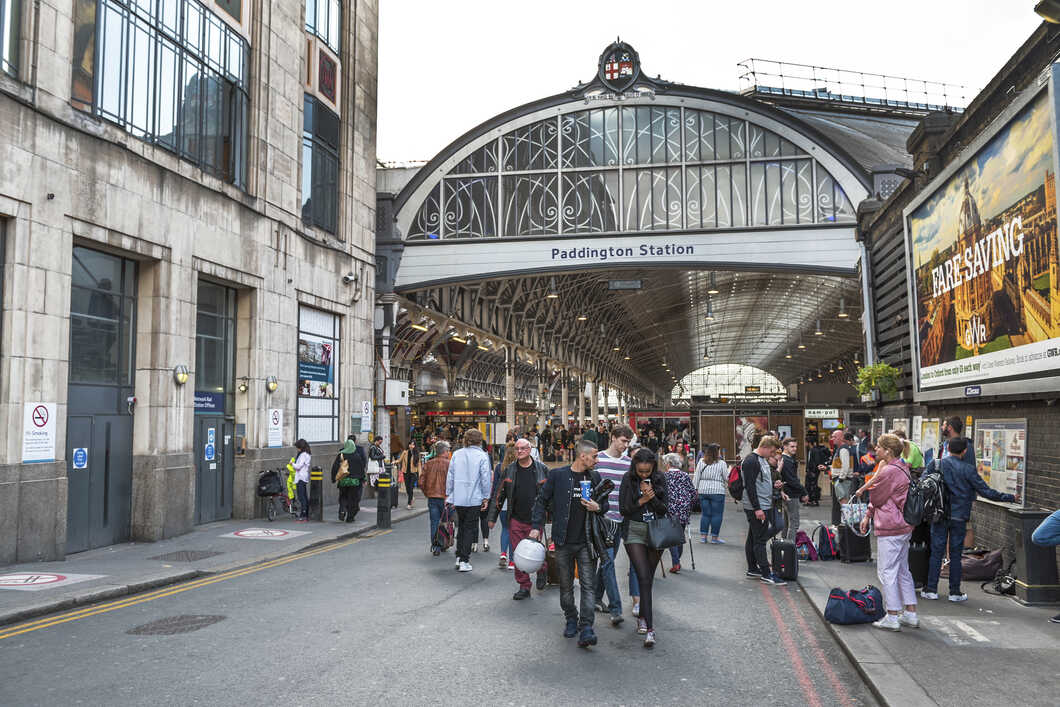
Some destinations will have more than one major station and depending on the station it could be walking distance or miles out of the city centre.
For example:
- Kings Cross Station and St Pancras Station are a 5-minute walk from each other and connect by underground tunnels.
- Bristol Temple Meads and Parkway, Temple Meads is within the city centre of Bristol, whereas Parkway is a residential suburb several miles away.
Nothing worse than ending up miles away from where you needed to be. Double-check maps or stations before booking to ensure you have the right place.
Allow Times for Connections
Trying to dash across the station with crowds, bridges, stairways and whatever else is through at you can cause you to miss your connection. Allow enough time for you to be able to reach the platform for your connections.
Any connections you miss on advance tickets means you won’t be able to use it or are eligible for a refund. To legally travel you would have to buy a new ticket.
Book in Advance (No more than 12 Weeks Ahead)
Advanced tickets will be released 8 to 10 weeks before your departure date and these are the cheapest tickets you can buy. It does vary so keep your eye out or sign up for price alerts.
Anytime before this, you will find anytime and off-peak tickets being sold or tickets aren’t available to purchase. There is no need to rush and buy anytime and off-peak as these don’t sell out.
If you find yourself faced with £100 train ticket then wait between 4 to 8 weeks before your departure date to snag the cheaper fares.
Ticket Type s
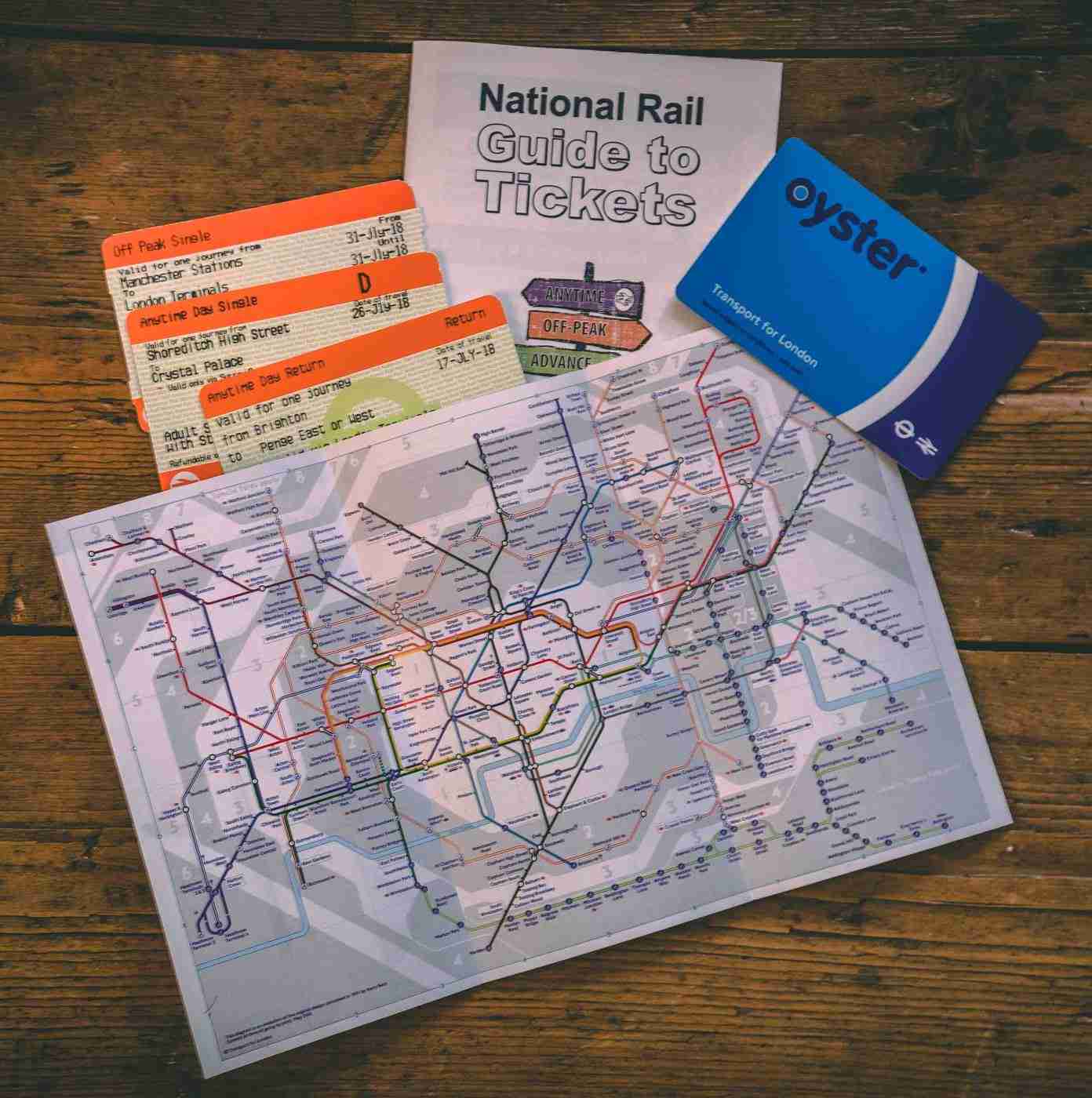
There are three generic ticket types you can buy. However, depending on different factors like having a Railcard or travelling first or standard will affect the price of the tickets. These factors add another set of price ranges making the product list extensive.
1. Anytime – Fully-flexible. Any train, any time.
- Anytime fares are a fully flexible ticket valid any time, any train, any operator and any permitted route. Some train companies are now able to sell these tickets up to 6 months in advance.
- Although, you are unable to reserve a seat booking more than 12 weeks in advance. I basically use the fare for business travel as it’s pretty pricey.
- It offers everything from travelling anytime, to breaking your route (i.e. you can get off at a station before your destination and then get back on the train) and allowing you to travel on any operator.
- These tickets never sell out, even when a train is standing room only!
- It is possible to reserve a seat as an optional choice.
- There are two choices of validity of an anytime ticket. One the day validity and return any time within 1 month.
- The ticket is refundable minus the admin fee.
- If you see tickets available before the 12-week reservation window they will be anytime tickets without seat reservations. The seat reservation system cannot issue seats before 12 weeks and it’s what links the advance fares to the fares base.
2. Off-Peak – Semi-flexible, any train with time restrictions.
- Off-Peak fares are valid on any train, any time except in the Monday-Friday business peaks.
- No advance booking is necessary, Off-Peak fares also never sell out and can be bought at the station on the day at the same price you see online.
- The more affordable flexi ticket. As long as you don’t want to travel in the peak times you can save some significant ££.
- One thing to be careful about with this ticket is different stations have different peak times.
- You can take any train operator’s train, and travel via any permitted route unless a specific operator or route is shown on the ticket.
- Refundable less an admin fee.
3. Advance – Cheap, inflexible, specific train only.
- Advance fares are only valid on the specific train, no refunds, limited or no change of travel plans allowed.
- These fares are only sold up to 8 to 10 weeks in advance.
- Advance tickets are the cheapest option.
- Advance tickets must be booked before the day of departure, timings of when these tickets stop being sold is up to the train company.
- Advance tickets come with a seat reservation (if seat reservations are running on that service) automatically included, you can only travel on that specific train which has been reserved for you.
- No break of journey is allowed, so you cannot join the train at a station en route, or get off at a station before the one you’re booked to.
Seat Reservations
I always think it’s a good idea to reserve a seat on anytime and off-peak tickets. They are free of charge and on busy trains they save you standing the long journey. I aim to book for times I think I will get the train and if you don’t take the train then no stress, just sit in a non-reserved seat.
Where to Buy Train Tickets

Currently, there are 28 train companies in operation throughout the UK and they run in different geographic locations. This can make it super confusing where you should buy your ticket.
Personally, I tend to use National Rail Enquiries or Trainline to purchase my tickets.
National Rail Enquiries is like a sky scanner. It aggregates all of the train tickets and then it will hand you off to a train company to complete your purchase.
If you’re purchasing through Trainline , then it’s all through their app or their website and it will just come with a booking fee to complete your purchases.
Other ways you can use the other train company’s website, so you can just pick one and book all your tickets through them as they will sell tickets for the various routes throughout the UK.
If you are purchasing from overseas make sure you select the option for mobile ticketing or collect tickets at the self-service ticket machines to avoid the £7.50 postage fee. Remember that you need the credit card you purchase with and the booking number to collect your tickets.
How to Save on Tickets
Save up to 1/3 off with a railcard.
Railcards are a great way to save . They have a variety of products to offer and this can give you a third off railway fares. The money spent on the railcard can easily be made back if you do more than two long-distance journeys.
There is a great range of Railcards that are available:
- 16-25 Railcard,
- 26-30 Railcard,
- Senior Railcard,
- Family & Friends Railcard,
- Disabled person’s railcard,
- Two Together Railcard
- and Network Railcard.
Check out the Railcard website for more information . It’s so easy to get, all you need to do is download the apps and you will have a digital railcard on your phone.
Even if you don’t live in the UK you can get a railcard which is the perfect way to save money while travelling around.
If you’ve watched my how to travel like a local in London , then you know you can add this to your Oyster card and save fairs throughout the underground.
Split Ticketing
Split ticketing is a method of buying a ticket where you split the journey into sections. You will buy a separate one for each leg of the journey instead of one for the full journey.
You need to make sure your train (even if you don’t get off) calls at each station or have a connection at a station, so the split ticket is valid.
I went from Penge West to Brighton the other day, it was cheaper for me to get a ticket from Penge West to East Croydon and East Croydon and then a full ticket from Penge West to Brighton. As the journey goes through all the stations this made split ticketing an option.
Trying to figure out these tickets can be a little difficult, Trainline is making it super easy and they just tell you when you’re searching for the ticket on their app.
GroupSave Tickets (3 – 9 People)
Travelling with a group of between 3 to 9 people can get you the GroupSave tickets . I find that these generally give you a third off rail fares.
The best way to buy these tickets are either online or when you get to the station, go to the ticket counter as the ticket machines don’t normally have these available. Not all train operating companies have these, but a number of them do.
When Travelling On Trains
Download the apps.
National Rail Enquiries or Trainline both have apps that are great to have on your phone. You will be able to check the online timetables, train information, ticket prices and buy tickets.
Trainline also has the ability to buy Railcard and store it on the app and easy access to your mobile tickets/purchases.
Train Delays and Compensation
Train delays happen but did you know that you can claim compensation for these delays and cancellations ? Train companies are getting better at advertising this today and most train companies now offer ‘Delay Repay’ where daily ticket holders, as well as weekly, monthly and longer Season Tickets, can claim for delayed journeys as and when they occur.
Each train company will have different agreements for compensation so you will need to check their terms and conditions. A rule of thumb is it is 30 minutes or more to claim.
There are two sets of compensation payments, either half of your ticket or a full refund. This is based on the time you were delayed.
For example, if I am travelling to Edinburgh from London and I am 30 minutes delayed I will get half of the price based on the fare I bought. If I was delayed more than 60 minutes then I would receive a full refund on the fare I bought.
Make sure you retain your train ticket and make a note of your journey as both will be required to support any claim for compensation. To make a claim you obtain a form from the station office or look for an application online.
Bring Your Own Food and Drinks
I love having a good train picnic! At major stations, there will be small supermarkets where you can buy food and drinks before your journey. You can also bring on your own alcohol, which you will see a few people having holiday beers on longer distance journies.
Depending on the route you are taking there might be a trolley that comes around the train or a food section. I always find it’s best to come prepared.
Avoid Sitting in Reserved Seats
Being kicked out of a seat isn’t fun! Check if the seat has a reservation or head to the seat you have reserved. If you have passed the station that the reservation is for then all bets are off and you can sit in those seats.
Commuter style trains don’t have seat reservations so you will be fine on these.
Wifi and Charging Points
It’s common to find onboard wifi and charging points – be prepared that these don’t always work well.
Days Out Guide

Days Out Guide operates in various cities across the UK and provides discounts on sightseeing activities. All you need is two of you to be travelling by rail ticket and get a voucher.
I’ve saved 50% on my tickets to visit the Tower of London, Hampton Court Palace and Kew Gardens by using the Days Out Guide.
The vouchers can easily be obtained on the website (make sure you print them) or at a National Rail Station. It’s a great incentive to go explore what the regions have to offer.
The UK is full of breathtaking mountain ranges, historic cities and crisp oceanic views. To really take it all in you should travel by train! These DIY train journies I’ve put together will give you a range of places to explore in the UK.

Kat Hi, I'm Kat, an Australian that moved to London in 2013 to start a new adventure. What a roller-coaster that was! I love helping others move to the UK and people explore the world ! I’d be honoured if you’d say, “Thanks!” with a £3 coffee on Ko-fi.

This site uses Akismet to reduce spam. Learn how your comment data is processed .

Britain by train: Five great one-week UK rail trip routes
Posted on Last updated: June 5, 2024
Explore Britain by train with five of the best British rail trip itinerary ideas you can do in just one week, covering historic England, scenic Scotland, the Cornish coast, UK cities, and Wales and the Borders.
* This site contains affiliate links , where I get a small commission from purchases at no extra cost to you.

I love a good rail trip and have travelled by train across Europe and beyond. But there are plenty of fantastic rail adventures close to home in the UK too – from Cornish coastal trains to the journeys across the wild Scottish highlands. And the country’s relatively small size means you can pack a lot into a short time, with rail passes available to keep costs down.
Whether you’re looking for history and culture, coast and countryside scenery or the UK’s coolest cities, there’s the perfect British rail trip for you. So here are five great itineraries for exploring Britain by train. It’s possible to do each of the routes in a week, but if you’ve got more time you can take it slower and spend more time in each place.
And if you’re ready to go, check out my detailed one-week itinerary posts – linked to after each route description below – for full details of which trains to take, how much they cost, how to book tickets, what to see and where to stay along the way.
Don’t want to organise it yourself? You can also book a custom rail trip based on any of our Britain by train itineraries through our partners Byway ,* the flight-free holiday platform. And you can save £100 off your first booking using the code LUCE100 if you book before the end of June 2024.
5 itineraries for exploring Britain by train
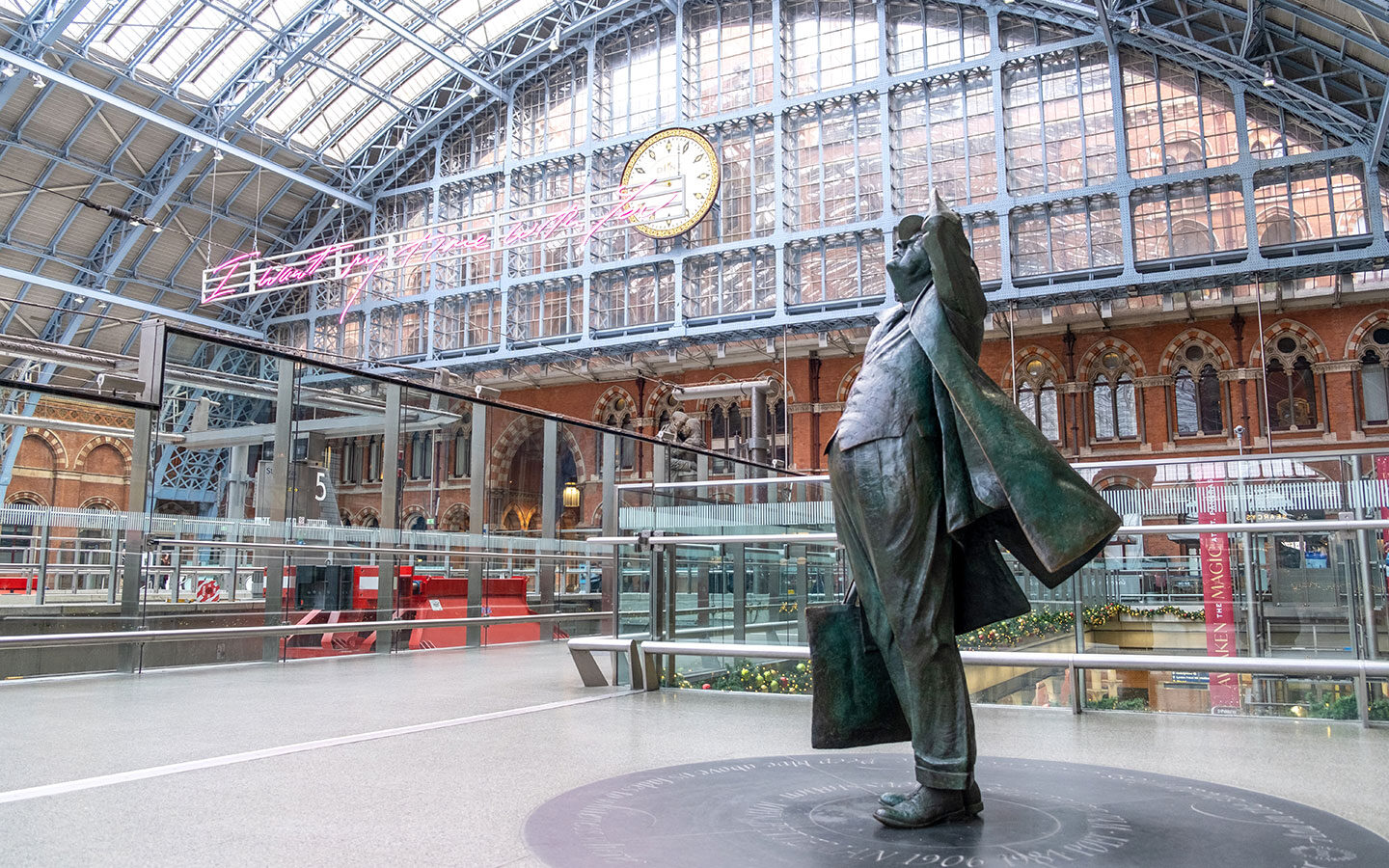
Historic England
London > Salisbury > Bath Spa > Oxford > Stratford-upon-Avon > York
This rail trip takes you across England and back through time, featuring some of the country’s most impressive castles, cathedrals and colleges. Start with a full day in London , choosing from its selection of historic buildings, museums and monuments, including the Tower of London, Westminster Abbey, British Museum and Shakespeare’s Globe.
Then catch a morning train to Salisbury (1.5 hours). This riverside city is known for its 13th-century cathedral, where you can see one of the surviving copies of the Magna Carta and take a tour of the tower. Or travel back 2000 years to Roman times at Old Sarum.

Next travel to Bath Spa (1 hour). Bath is known for its Roman history, so don’t miss the Roman Baths – and you can soak yourself in the modern version at the Thermae Spa with its rooftop pool. There’s also the beautiful Georgian architecture of the Royal Crescent and Circle, and whole festival dedicated to Jane Austen who lived in the city in the 1800s.
Then take the train to Oxford (1 hour 10 mins), one of the UK’s most famous university cities. Take a tour of the college quads – Harry Potter filming location Christ Church is the star, but Magdalen, New College, Trinity and All Souls are also well worth visiting.

Call in to the quirky Pitt Rivers Museum to see its anthropology exhibits or explore art and antiquities at the Ashmolean Museum. Then catch a morning train to Stratford-upon-Avon (1.5 hours). Spent the afternoon in Shakespeare’s home town – you can visit his birthplace, school and houses his wife and mother lived in, and see his plays at the RSC theatre.
Then finish your trip by travelling north to York (4 hours), where you’ll have the afternoon and the next morning to walk the Roman city walls, visit the Minster, explore the cobbled lanes and half-timbered buildings of the Shambles and have afternoon tea at Betty’s.
Read the full Historic England by train itinerary
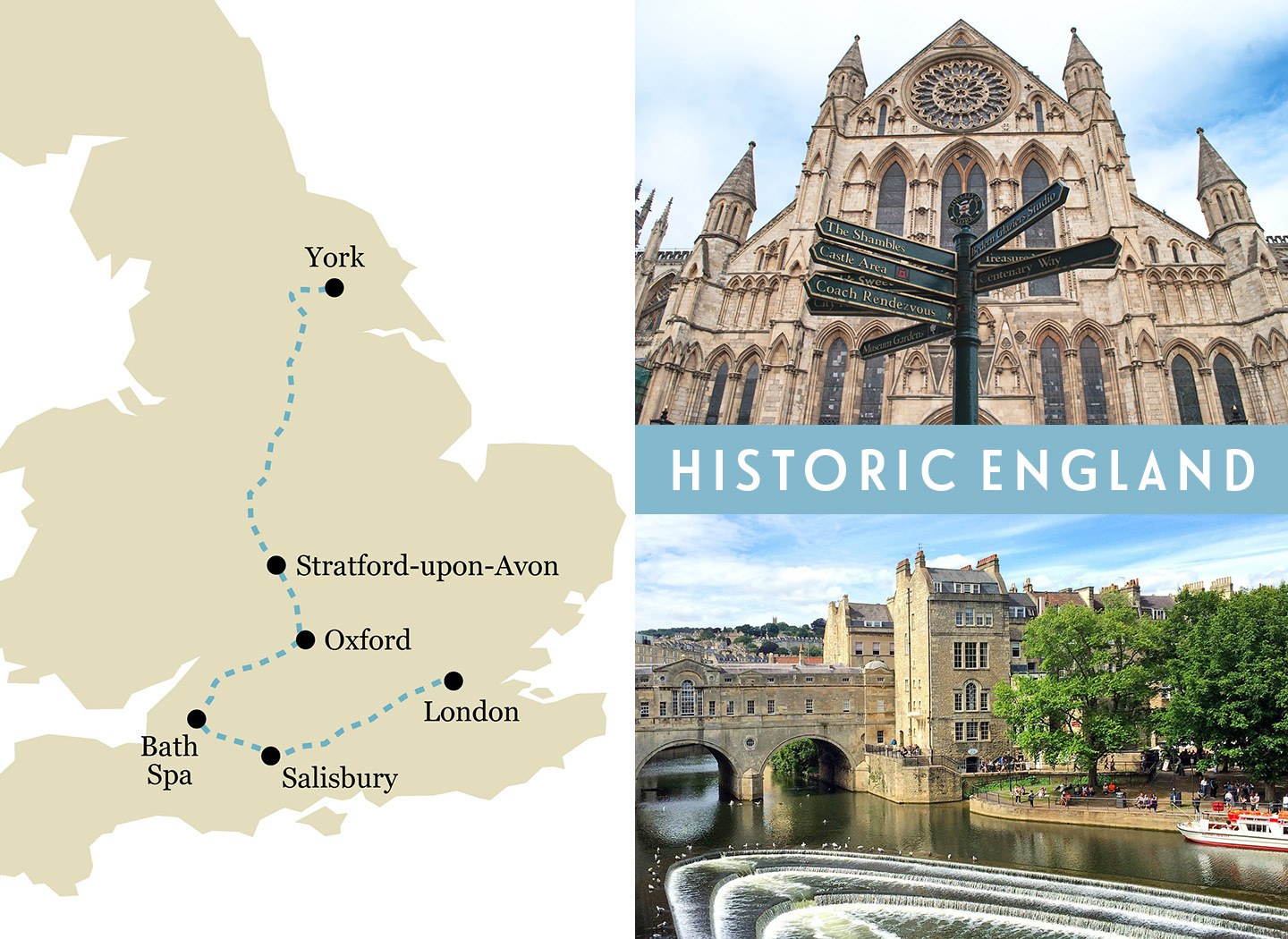
Scenic Scotland
Edinburgh > Glasgow > Fort William > Mallaig > Isle of Skye > Inverness
This Scottish rail itinerary takes you from the lowlands to the highlands via rugged coastlines, lakes, moors and castles. Start in Edinburgh and spend the day discovering the city’s highlights, from Edinburgh Castle and the Royal Mile to the Palace of Holyroodhouse and views from Calton Hill. Or discover hidden gems like underground Mary King’s Close .
Then catch the train on to Glasgow (1 hour), where the focus is on art, design and culture – from street art trails and the eye-catching modern Riverside transport museum along the redeveloped waterside to the Art Nouveau buildings of Charles Rennie Mackintosh.

Next head north to Fort William (3 hours 45 mins), a lochside town that’s a hub for adventure sports in the nearby Nevis Range. The journey takes you into the Scottish Highlands along the West Highland Line, rated as one of the most scenic rail trips in the world. Go hiking or biking, or taste whisky with a view at the Ben Nevis Distillery.
Rejoin the West Highland Line to travel across the Glenfinnan Viaduct to Mallaig (1.5 hours) – or from April to October you could upgrade to a ride on the Jacobite steam train , also known as the Hogwarts Express from the Harry Potter films. Then leave the train behind and cross over to the Isle of Skye on the ferry from Mallaig to Armadale.

Spend a day exploring the Isle of Skye by bus or tour, with the pretty harbour town of Portree, the waterfalls of the Fairy Pools and the dramatic rock formations of the Quiraing. Then the following morning, cross the bridge to Kyle of Lochalsh by bus (1 hour) where you can catch the train to Inverness (2 hours 40 mins), capital of the highlands.
The Kyle Line is another of the UK’s top scenic train routes, passing lochs, mountains and herds of deer. Spend the evening and next morning in Inverness. Explore the castle and riverside, take a monster-spotting trip on Loch Ness or visit historic Culloden battlefield.
Read the full Scenic Scotland by train itinerary
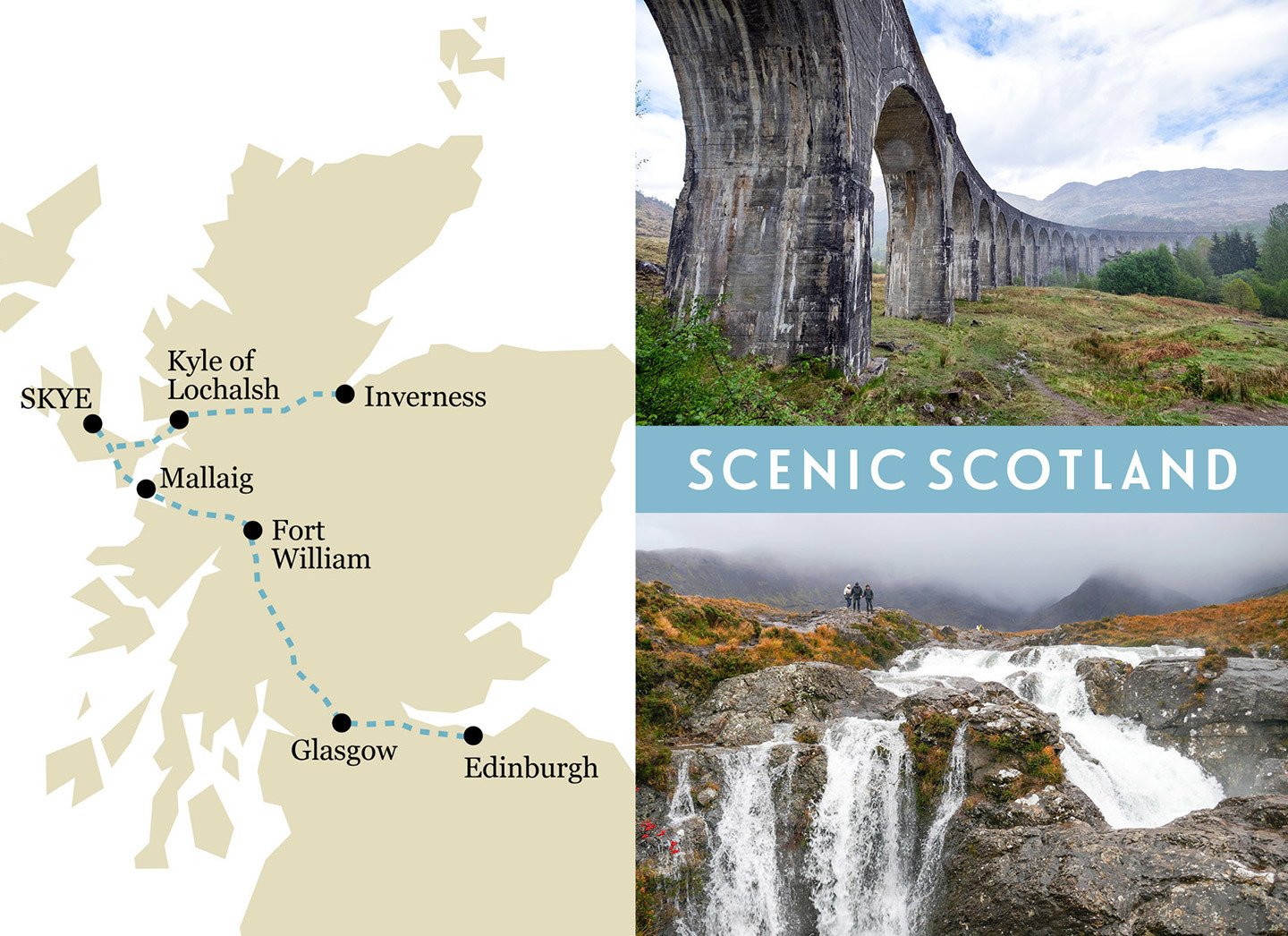
The Cornish coast
St Ives > Falmouth > St Austell > Newquay > Looe > Plymouth
This UK train trip takes you to the far south-west of England, along some of Cornwall’s most beautiful coastal and countryside railways. Start off in the arty seaside town of St Ives , home to the Tate and Barbara Hepworth galleries along with beaches and coast walks.
If you’re travelling from London you can get reach St Ives on the Night Riviera overnight sleeper train (8 hours), changing at St Erth onto the St Ives Bay Line which runs past the golden sands of Carbis Bay. Then travel east to Falmouth (1.5 hours), changing in Truro onto the Maritime Line which runs through unspoilt countryside to the coast.

Visit Falmouth’s castle and maritime museum, or take a boat ride along the Fal River or across to neighbouring St St Mawes and the Roseland Peninsula. Then take a morning train to St Austell (1.5 hour) where you change onto a bus to reach the Eden Project, whose two giant biomes bring the rainforest and the Mediterranean to Cornwall.
Head back to St Austell to catch the train along the Atlantic Coast Line to Newquay (1 hour 20 mins). Check out some of Newquay’s 11 beaches and watch the surfers in action on Fistral Beach – or give it a try yourself. Grad a traditional Cornish pasty and watch the fishing boats come into Newquay harbour, or head underwater at Blue Reef Aquarium.

Then travel on to the pretty fishing village of Looe (3 hours). The Looe Valley scenic train line connects Liskeard and Looe, running along an estuary full of birdlife. Walk a stretch of the South West Coast Path to Polperro or visit the marine nature reserve of Looe Island, and make sure to try some local seafood and wine from Looe Valley Vineyard.
Finally travel on to your final stop in Plymouth (1 hour). Take a walk along the city’s waterfront, climb to the top of Smeaton’s Tower lighthouse and follow the journey of the Pilgrims at the Mayflower Museum before heading home – or exploring more of Devon.
Read the full Coastal Cornwall by train itinerary
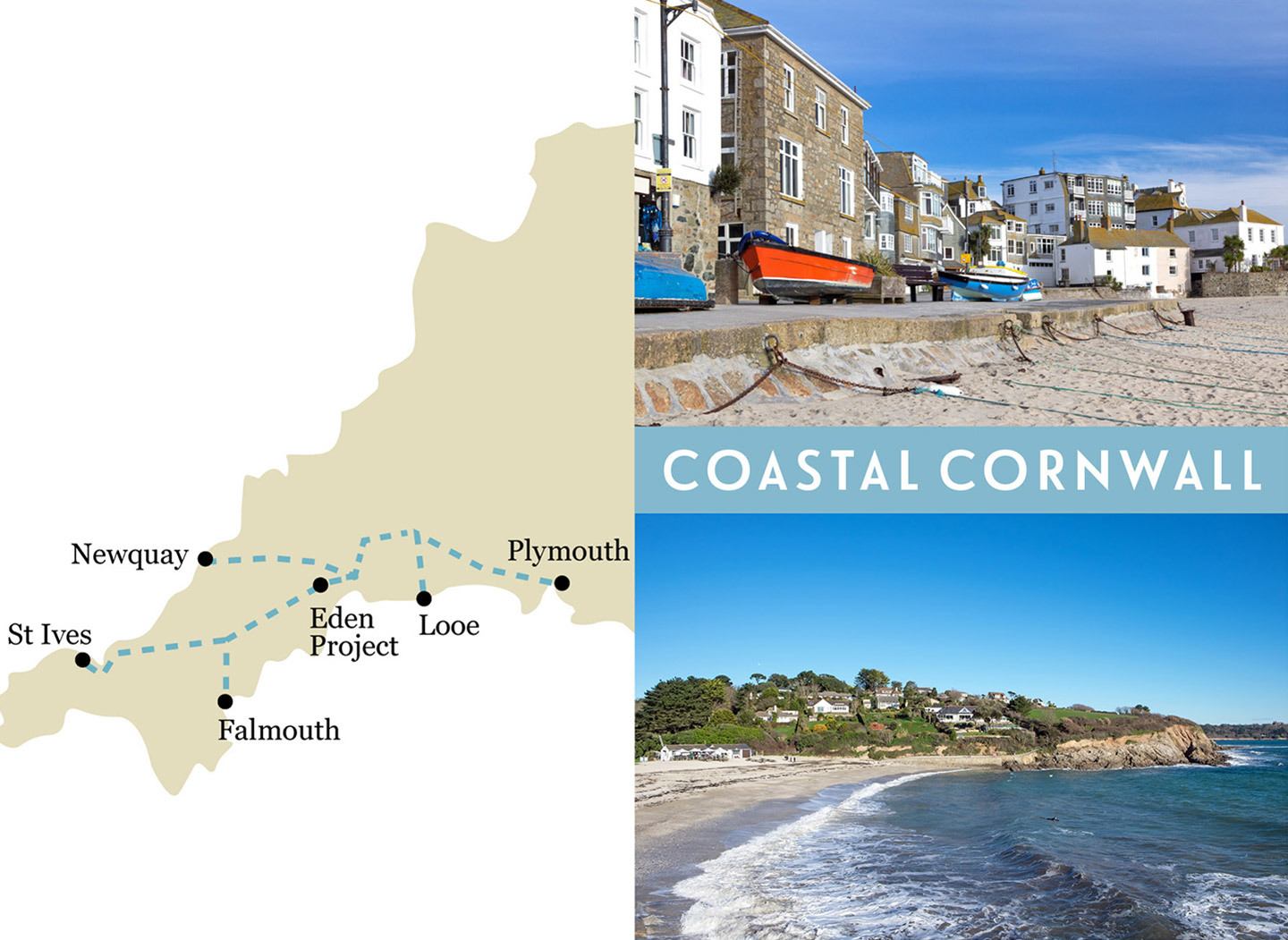
London > Brighton > Bristol > Manchester > Liverpool > Leeds
This city-centric train route takes you to some of the UK’s coolest cities, with coffee shops, vintage shops, street art and quirky bars along the way. Start off in London and the East End’s most hipster neighbourhood – Shoreditch. Visit Brick Lane market, take a graffiti tour and try food from around the world at the Box Park shipping container pop-up market.
Then catch the train south of London to Brighton (1 hour 15 mins) for a day at the seaside. Visit the Brighton Pavilion, browse the indie shops in the narrow streets of the Lanes and play the slot machines on the pier before tucking into fish and chips on the beach.

The next day travel west to Bristol (1.5 hours). This harbourside city is a centre for independent food, art and craft businesses. Try tasty street food at St Nicholas Market or at Cargo in Wapping Wharf, and go Banksy spotting in Stokes Croft. Visit Brunel’s historic steamship the SS Great Britain or walk over Clifton Suspension Bridge at sunset.
Catch the train north to Manchester (3 hours). This north-west city famous for its football and music is a great place to catch a gig or shop for vinyl and vintage fashion before a night in the Northern Quarter’s bars. Or visit the museums and media hubs of Salford Quays.

Then from Manchester, it’s only around an hour by train to local rivals Liverpool. Check out the exhibits at the Tate Liverpool and Merseyside Maritime Museum in the Albert Dock, or take a Beatles themed walking tour and catch the ferry across the Mersey.
Then finally travel north-east to the West Yorkshire city of Leeds (1.5 hours). Discover local artworks on the Leeds Welcome Art Trail, visit the Corn Exchange for boutique shops in a stunning setting, sunbathe in Roundhay Park or take a tour of Leeds’ craft breweries.
Read the full UK cities by train itinerary
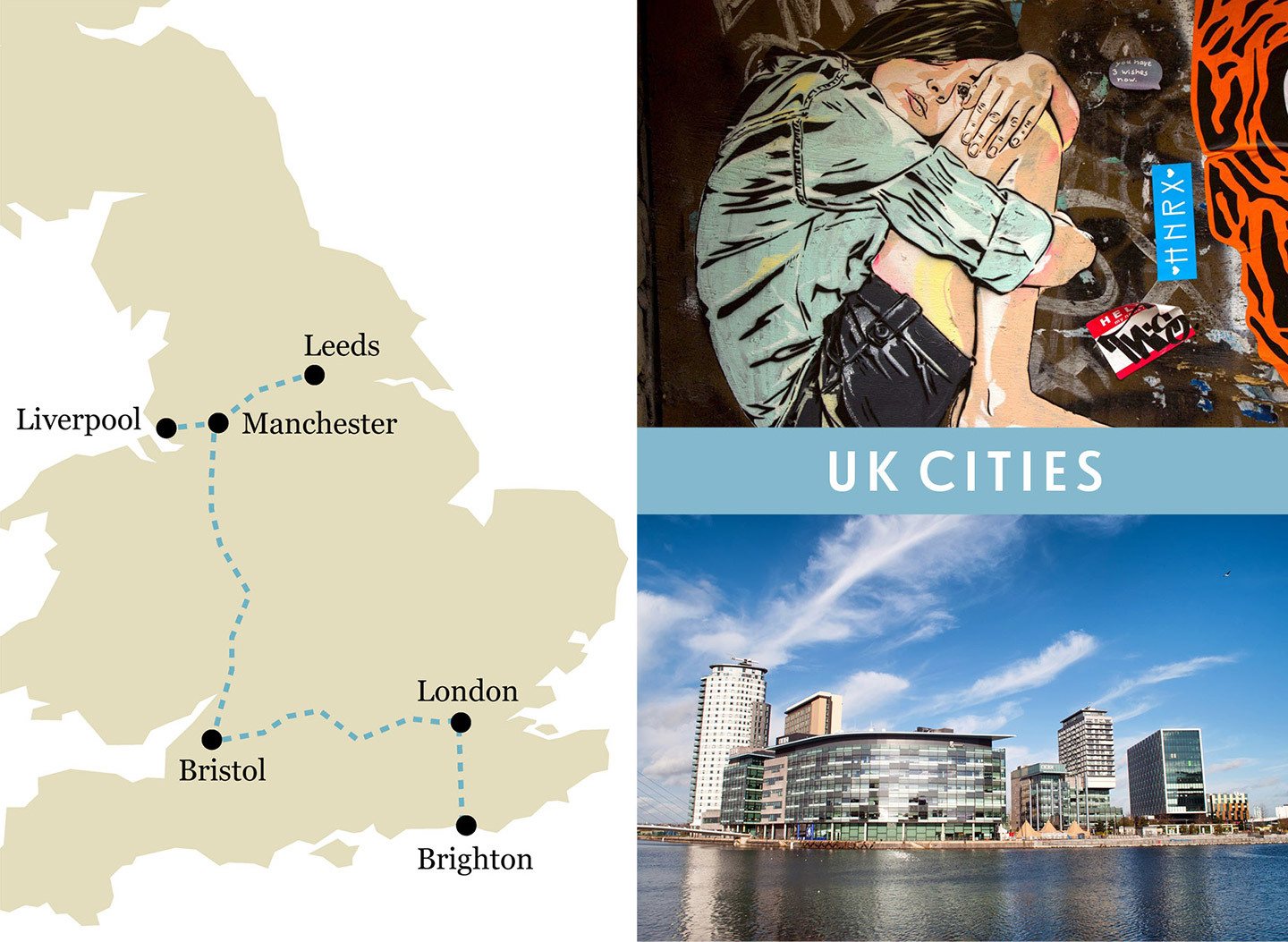
Wales and the Borders
Cardiff > Shrewsbury > Aberystwyth > Harlech > Llandudno > Chester > Cardiff
Our final Britain by train itinerary takes you across Wales, travelling from the capital through the unspoilt Welsh Marches to the spectacular coastline and mountains of North Wales. Start in Cardiff and spend the day exploring its historic side at the castle and its modern side among the contemporary buildings of redeveloped Cardiff Bay.
Then catch the train north to Shrewsbury (2 hours), a traditional market town across the border which was home to Charles Darwin. Visit its castle and take a boat trip on the River Severn. Then head back into Wales and the coastal town of Aberystwyth (2 hours) – a seaside holiday favourite with its sandy beach, Victorian promenade and Wales’ oldest pier.
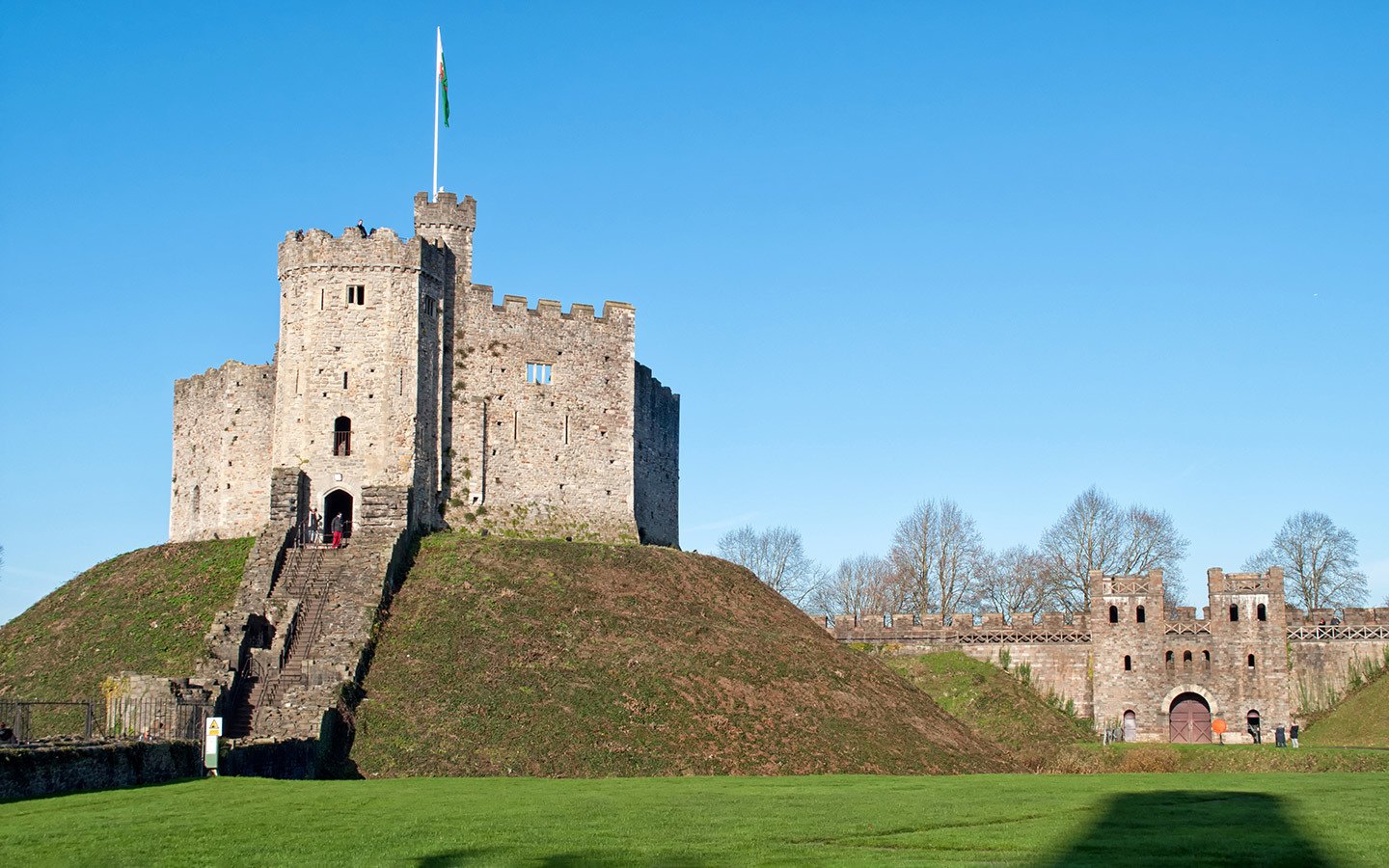
Next catch the Cambrian Coast Line north through Snowdonia (Eryri) National Park to Harlech (3 hours), with scenic views along the way as you cross the estuary at Barmouth. Then explore Harlech’s hilltop castle or take an afternoon trip to the nearby quirky, Italian-style village of Portmeirion (the closest station is at Minffordd, 15 mins from Harlech).
Next head to Porthmadog (25 mins) and change onto the Ffestiniog Railway’s historic steam trains to travel to Blaenau Ffestionig in style (1 hour 20 mins). (Note the Ffestiniog Railway only runs from March–October, so outside of that you’ll need to take a bus.)

Then head back into the 21st century as you travel on to Llandudno (1 hour 15 mins). Another of Wales’ Victorian seaside resorts, Llandudno has panoramic views from Great Orme, which you can reach on foot or via the vintage tram or Llandudno Cable Car.
Finally travel across the border to Chester (1 hour 20 mins). Explore the city’s Roman ruins, walk around its city walls, admire the Eastgate Clock and shop the medieval black and white Rows. Then finish off your trip by travelling south back to Cardiff, passing the impressive Pontcysyllte Aqueduct, Herefordshire countryside and Shropshire Hills.
Read the full Borders and Wales by train itinerary
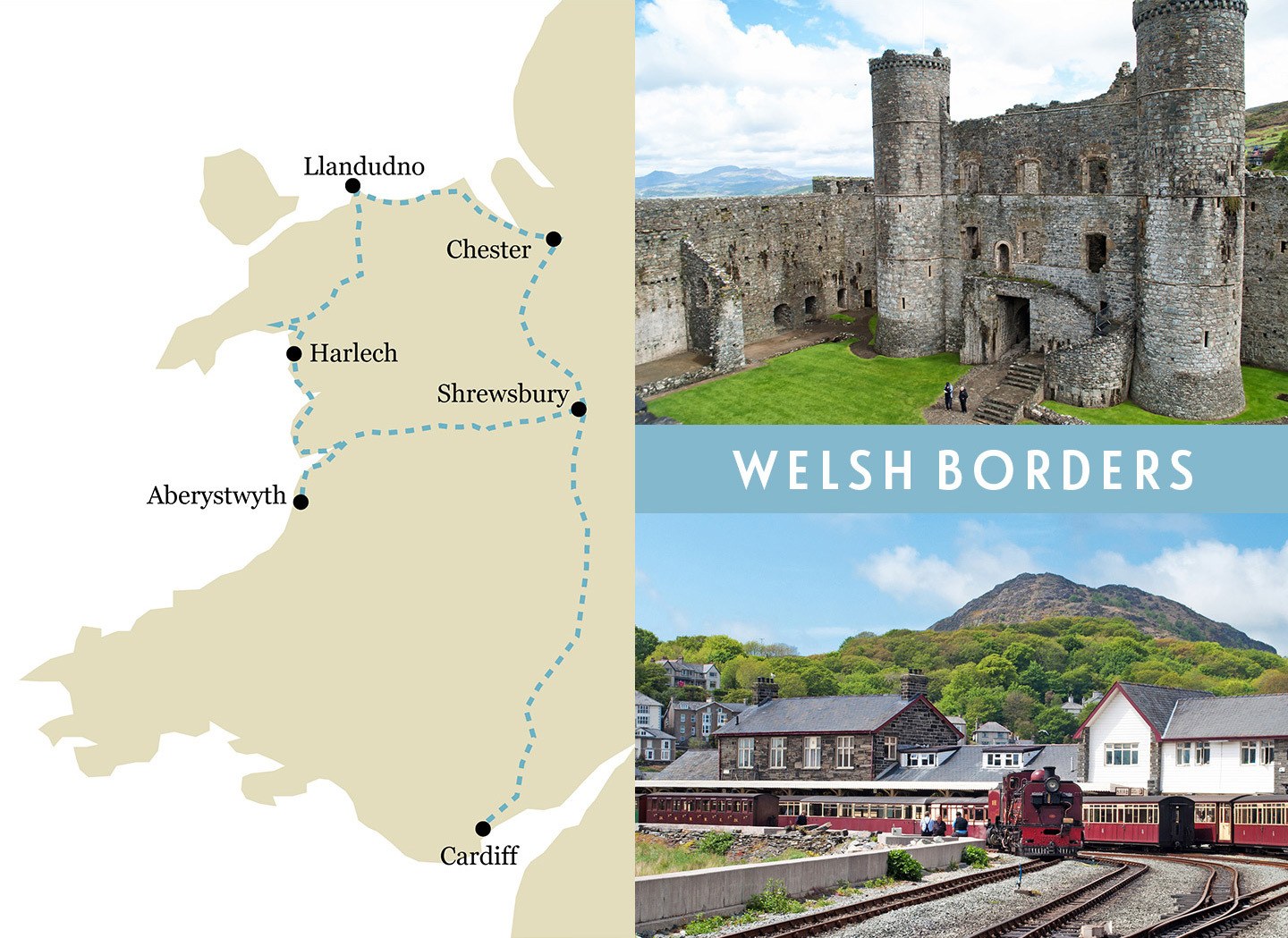
Save for later

You might also like
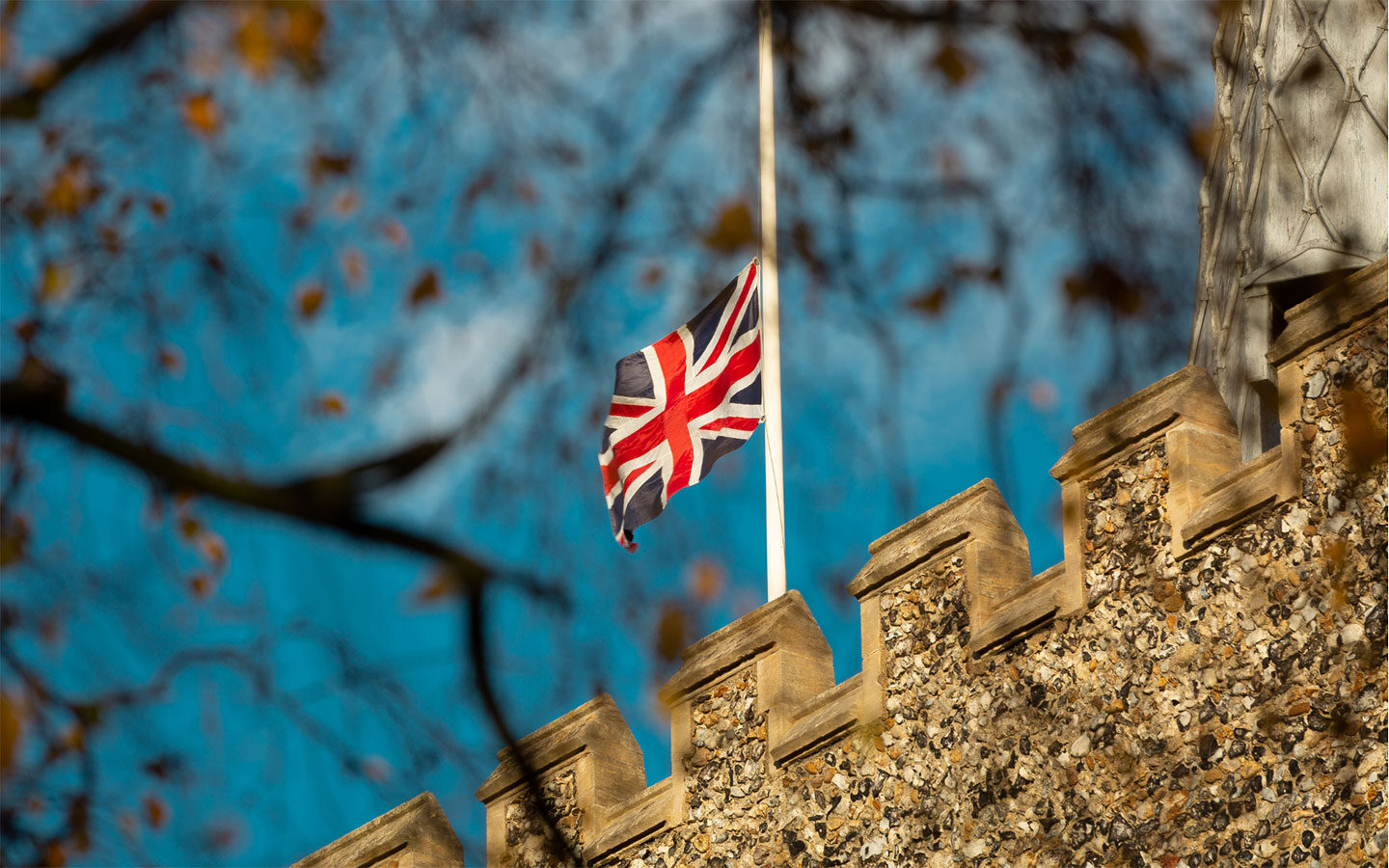
10 great UK weekend break ideas
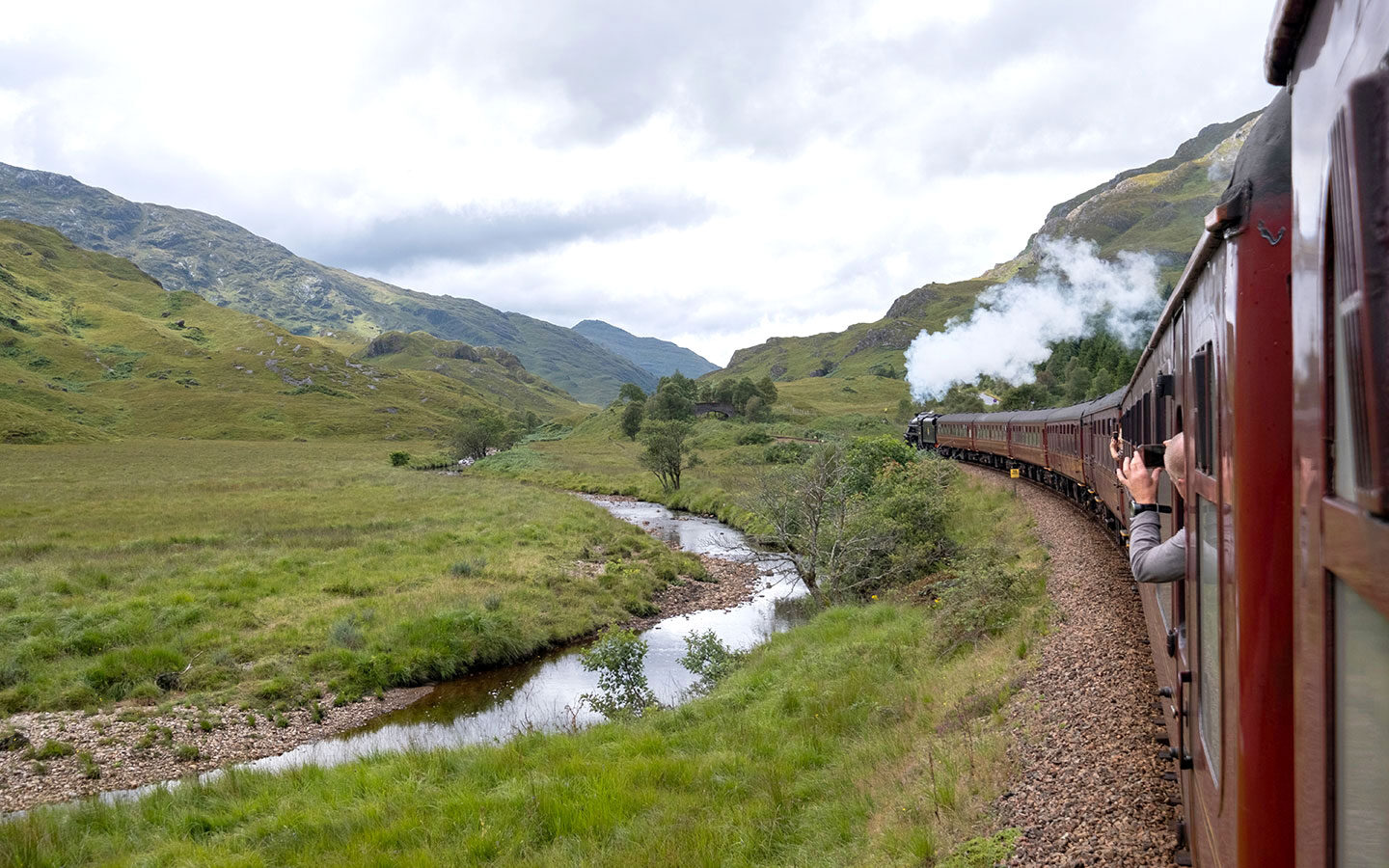
A guide to Scotland’s Jacobite steam train: The real Hogwarts Express
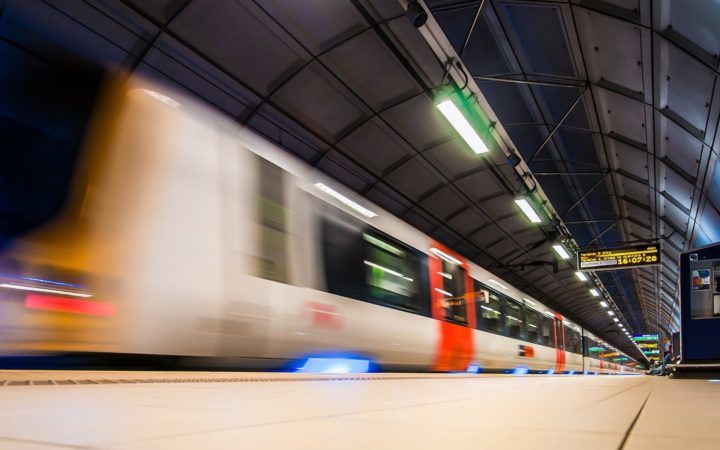
How to save money on train travel in the UK
Gregory Bass
Monday 15th of January 2024
Hey Lucy I enjoy reading about all your travels and Itineraries but feel that it would somewhat overwhelming for me to plan. It has been a dream of mine to travel the UK by car or train. Twenty years ago I traveled Spain and Portugal by train but there was no planning involved. I was younger and just took a train to a city or town and if I liked it I stayed and if I didn't I moved on. I have also planned a year of traveling the west coast of the US for work when I was younger and that was before GPS. I just don't feel I know where to start. We definitely will want London as the starting point and Harry Potter is a must have since my husband is crazy about the series. We plan on spending anywhere from 10 to 15 days and that will all depend on what we try to squeeze into our trip. I was wondering if you had any ideas on how to start and what to do and see that are must dos. I would want to depart from London as well so whatever we do will have to include returning to London. We like nice accommodations but don't want to break the bank. Our travel schedule would be sometime between May thru August of 2025. I do have friends that live there so some downtime to allow visits with them would be needed as well. Any suggestions you can give would be greatly appreciated.
Lucy Dodsworth
Monday 22nd of January 2024
Hi Gregory, if you want to book through a company I would recommend Byway who can organise custom train itineraries and book all the train travel and hotels for you. With 10–15 days you could cover a lot of the UK depending on what your interests are, or add on a trip on the Eurostar to Paris or Amsterdam.
Wednesday 31st of May 2023
Hi Lucy This site is great! My husband and I will be arriving at Southampton after a transatlantic cruise on Sat April 20, 2024. We don't have our return flight plans yet as we are hoping to stay in England for at least a week. In 2012 we spent a month (Sept) traveling and sightseeing the UK by rail and had a great time - carrying only backpacks. We had time to visit the popular spots: London, Bath, York, Chester, Edinburgh, Loch Ness, Penzance, Bournemouth, Aberystwyth and much of Wales. This time (we are older!) and we will have luggage (ugh). We are thinking about exploring some less touristy places and poking around smaller villages, etc. Maybe staying at a B&B or somewhere that is centrally located and near a well connected train station where we can take day trips or short rail excursions in and out. Is that possible or even a good idea? Where would you suggest? Do we need a travel agent? I expect we will depart from Heathrow. Any advice will be appreciated!!
Sunday 25th of June 2023
Hi Martha, one area I'd definitely recommend is the Cotswolds. You can stay in Moreton-in-Marsh which is on a mainline train route from London and get from there via train to Oxford and Stratford-on-Avon, and there is a good Cotswold tour from Moreton as well as buses to places like Broadway, Chipping Campden and Stow-on-the-Wold. I have a whole website about the Cotswolds with lots of info (https://explorethecotswolds.com) and it's easy to explore without needing a travel agent.
Tuesday 23rd of May 2023
Hi Lucy, We are going to be in UK for 14 total days (not including travel to and from the US). We want to do two of these (exactly what I was thinking and perfectly laid out, thank you!). Wondering if you can help me understand the best way to buy the train tickets. We are family of 4 with an 18 yr old and 16 yr old. Starting and ending in London - want to do this: London > Salisbury > Bath Spa > Oxford > Stratford-upon-Avon > York - then from York do this: Glasgow > Fort William > Mallaig > Isle of Skye > Edinburgh to catch the Tattoo then back down to London. Maybe I need a travel agent to help :-)
Friday 26th of May 2023
You can buy tickets for specific trains in advance from the rail companies but it might be worth looking at getting a railpass – either an InterRail One Country Pass for the UK or a Britrail pass – as that means you can be more flexible. You can buy these in advance online and there are good discounts for under 25s.
Thursday 27th of February 2020
This info is amazing, thank you for posting Lucy! I am researching/looking into traveling to the UK (specifically Scotland) for the first time (coming from Toronto, Canada) this year and wasn't really sure where to start in terms of transportation once I arrived. I have bookmarked your page just for future reference. These routes and links will be so helpful, especially for a newbie to the area.
Also, love your blog & will definitely check out more of your recommendations .
Monday 9th of March 2020
Thanks Amy, great to hear it was useful! And have a wonderful trip.
Ellen D Leeper
Wednesday 25th of September 2019
Hi Lucy, What a comprehensive and great resource! I heard dogs are allowed on trains in the UK? Any feedback on that? I have a small guy but we are doing a couple months in the UK and Scotland so thinking trains vs. driving are the way to go. Thanks for such a great website! I'll watch this one!
Thursday 26th of September 2019
Hi, yes you can take dogs on trains in the UK so you should be fine with that!
Related Content
How to travel by train in great britain:, helpful links:, why the train operators matter:, the 19 things most worth knowing..., information on board:, first class travel:, assisted travel:, recent improvements:, works on the line:, bicycles on trains:, 12 things worth knowing:, when there is a choice of companies:, the availability of split ticketing, how seat reservations are managed:, train ticket guides:, detailed train guides, from and to london by train, journeys from edinburgh, glasgow and manchester, finding your train, detailed station guides, 10 most scenic journeys, two for one visitor attractions when using rail tickets:, explore stunning scotland by train, explore beautiful wales by train, exploring britain with bookmundi, holidays by train:, going continental by rail:, visiting britain and exploring by train, related resources.
- Cities & Stations

- Great Britain by train
Welcome to our guide to traveling in Great Britain by train; it should save you time money and confusion!
There are many unique aspects to travelling by train in Great Britain, but more often than not, what are now typical aspects of taking a European train journey apply. If you want to save money on a one-way, long distance journey on a direct train, then the start-to-finish steps of looking up a journey and booking it online aren't particularly unusual. So if you book ahead you can often obtain a cheaper price, but then have to stick by the terms of the type of ticket you have chosen.
What can make planning train journeys in England, Scotland and Wales a tad bewildering are the multiple methods of saving money, which you may, or may not come across; particularly when making a return journey. You may be offered a choice of different ticket types, prices or train services, depending on the journey you will be taking.
Something exceptional that does need explaining is the use of Great Britain as the country name in place of United Kingdom, as well as the references to British trains and tickets across SMTJ. It's because train services in Northern Ireland are both managed separately and linked to the rail network of The Republic of Ireland, so they will be included when we add The Republic Of Ireland to ShowMeTheJourney.
Every European country takes a unique approach to how it operates its train services, but the core difference with Great Britain’s (England, Scotland and Wales) rail network is the lack of a dominant national rail operator.
Instead a multitude of private operators provide the train services, with each separate Train Operating Company (TOC) being responsible for its own network. And two or more companies can provide the train service between cities and this can impact on how tickets can be used on such routes.
Which company (TOC) is providing the train service on a route impacts on both the ticketing and the on-board experience. That's because each specific TOC manages how its tickets will be sold, such as the types of ticket which will be available to purchase on each specific departure. They also have the freedom to set the service levels provided to passengers on the trains , including which catering facilities will and won't be available and how the Wi-fi access will be managed.

These are the 19 things that are particularly useful to know about rail travel in Great Britain: 1. The contracts which are awarded to the companies, which operate the trains have a regional element, so typically only one company provides all of the trains over large comparatively areas. Therefore all many travellers will need need to aware of is how that one company manages its trains - This is the case when exploring the likes of Cornwall or Kent , or Scotland , or Wales . 2. Despite the multiple companies which operate the trains many aspects of UK rail travel are universal, because the network is managed by National Rail - so it's a good source of info such as schedule adjustments due to construction works and looking up station facilities , journey planning and regional rail passes . 3. Also many aspects of rail travel in Britain apply, regardless of which company is operating the trains on each route - these include:
- tickets / charges not being required when taking bicycles - though some companies have a bike space reservation policy;
- tickets not being required for dogs; though there is always a maximum limit of two dogs per adult ticket holder;
- when they are available on a route, seat reservations are optional - though they will be automatically included when booking online;
- no charges for opting to add a reservation;
- children aged 4 and under travel for free and those aged 5 to 15 travel at a discounted rate of at least 50%;
- the acceptance of rail passes and railcards .
4. Aspects of travelling by train, on which the companies set out their own policies include:
- whether seat reservations will be available at all;
- if First Class will be available;
- ticket promotions, particularly around child tickets and making a return day trip - when available, Off Peak Day Return tickets, typically cost less than £2 more than a one-way ticket;
- the types of ticket offers which will or won't be available - which can matter to the prices that will be charged when multiple companies provide trains between two locations.
5. Though travellers can choose between companies on comparatively few routes . 6. Most of the companies also make a distinction between Peak travel times and Off-Peak travel times, with Peak times being applied on Mondays to Fridays before and after business hours - So making journeys at the Off-Peak times is cheaper, hence the availability of Off-Peak tickets. 7. The tickets which can be used at Peak times are the Anytime tickets, but for long-distance journeys they can be exceptionally expensive. 8. Most companies also offer limited numbers of discounted Advance tickets on longer-distance routes, regardless of the time of travel - which can be less than 25% of the cost of Anytime tickets. 9. Some of the train operating companies offer Advance tickets when booking tickets on the travel date, they can be taken off sale only 5-60 minutes prior to departure - Avoiding the Anytime tickets when booking tickets shortly before departure can save more than £100! 10 The idea is that Advance tickets can only be used on the the specific departure selected when booking, so if a seat reservation is available on the train, it is automatically included when booking this type of ticket. 11. When having booked Anytime and Off-Peak tickets for a long-distance journey, the idea is that you can choose between departures on a travel date - though those with Off Peak tickets can't travel at Peak times. Seat reservations are included when booking ahead, but they can be transferred to alternative departures - note that on services on which they are typically available, seat reservations won't be included when booking last-minute Anytime and Off-Peak tickets at a station. 12. Off-Peak and Anytime aren't discounted, but despite this National Rail stipulates that they are placed on sale 12 weeks ahead, but the operator's decide when to make the cheaper Advance tickets available - it can be before or after the Anytime and Off-Peak tickets have been released for sale. 13. Advance tickets aren't typically made available when construction works are being carried out on a route , because they are not valid on replacement bus services. 14. Tickets are also not typically available at the lower Advance rate for end-to-end journeys which involve connections between trains, but booking and using 'Split Tickets' can be a money saver - see the info in the 'Notes on the Ticketing' below. 15. These ticketing inconsistencies have encouraged a swathe of third party online services to sell rail tickets in Britain, hence the multiple 'National' companies on the ticket guide , but National Rail also sells tickets for any rail journey in Britain - plus each of the operating companies have booking services which also sell all or most national rail journeys. 16. An atypically large number of railcards are available , which typically provide a discount of one third off the price - and most of these, including Family and Two-Together Railcards, can be used when visiting Britain. 17. If you have a seat reservation you can occupy other seats instead - Most long-distance trains now have a system of Green light = seat available for the entire journey; Orange light = seat available for part of the journey; Red light = seat not available, so you can see whether you want to move to a seat by a window, at a table, or in a less busy part of the train. 18. Long-distance trains are comparatively frequent, when travelling between London and other English cities, and between London and Edinburgh, a minimum of two x trains per hour are typically provided. 19. When travelling First Class with most of the companies which operate the longer routes from and to London - Avanti West Coast, GWR and LNER, a complimentary hot meal service will be offered.
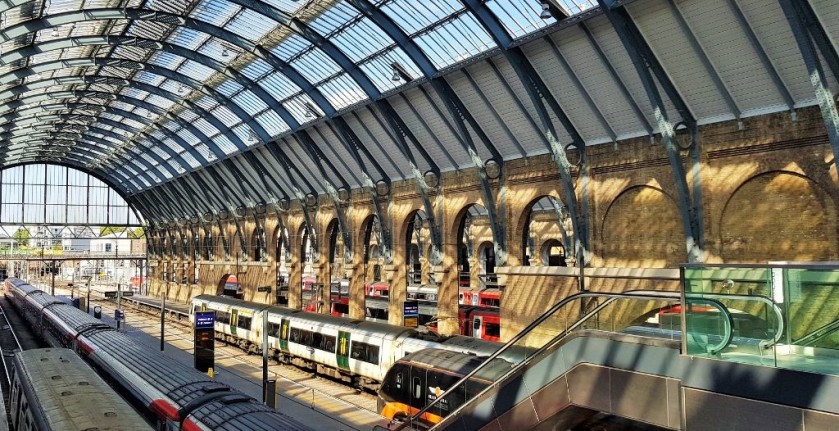
When travelling by train:
The rail network is centrally managed by National Rail and its website is a great resource for planning journeys, looking up general ticket and national rail pass info and checking whether maintenance works will be impacting on the route you will be travelling by. It also has the up to date info regarding the impact on rail services of the rail strikes . It’s also a central resource for information and booking of mobility services for those that require additional assistance.
In the coaches of most trains used in Britain there will be electronic information showing the calling points of the train. It is worth checking to see if the station you're heading to is the next calling point; as the automated announcements which will say "this train is now arriving at..." usually occur only around a minute before the train will get to a station.
This destination info is usually all that's available on the info screens on British trains, info such as details of onward connections, the location and the speed of the train, isn't typically shown. So if you will be making an onward connection it can be worth asking the conductor, for the time and platform number of any subsequent train you will be taking.
The seat reservation info
Because seat reservations are optional on British trains, systems have to be used to inform passengers without reservations which seats are available. Therefore information for reservations is assigned to each specific seat. On newer trains this is shown electronically, with the info being above the train windows, green lights can indicate available seats, but on older trains paper cards are inserted into the back of the seats
So if you have a reservation, the usual procedure is: 1: find your seat number(s), which will be on your reservation or ticket - or if you have booked a mobile ticket, you may need to check your booking confirmation email. 2. find the matching seat number within the coach. The info in the train will usually confirm that this is the seat you have been assigned, but some operators including South Western Railway, don't display any info re: seat availability.
If you don't have a reservation then blank electronic displays, or green lights, or no cards on the seat backs, are indicators of available seats. However, on busy trains it's worth checking the info displayed for each seat, because the stations between which the seat has been reserved for, will be shown, so the seat may actually be available for your journey. For example, you may be travelling from London to York and the reservation info for a specific seat may show that it has been reserved for travel between York and Edinburgh, but as you will only be travelling as far as York, you can occupy this seat.
Many train operating companies offer First Class long distance ticket holders complimentary food/drink ranging from snacks to a particularly generous full meal service; particularly when travelling on Monday – Friday.
Avanti West Coast and GWR and LNER offer particularly good First Class benefits.
First Class ticket holders can also access the First Class lounges provided at stations by the train operating company that they will be travelling by.
However, First Class is not available on some fairly lengthy regional express services, including those operated by, Northern , Transport For Wales and ScotRail .
Each Train Operating Company offers a specific MOBILITY ASSISTANCE services and details of how to book Assisted Travel can be found on these links below:
Avanti West Coast l Chiltern Railways l Cross Country l EMR l Grand Central l Great Northern l Great Western Railway l Greater Anglia l Heathrow Express l London North Western Railway l LNER l Northern l Scotrail l Southern l Southeastern l South Western Railway l TFW l Thameslink l Trans Pennine Express l
One of the most unusual aspects of travelling by train in Britain is the breadth of the different types of train used to provide the services across the country.
Each TOC is responsible for its own fleet and buys trains to meet its needs, so more than 35 different types of train are used nationally.
Though normally only one, or occasionally two, types of train are used on each specific route; though that is changing temporarily because new trains are gradually being introduced on many routes. That's because long-distance train travel in Britain has recently been transformed, because brand new trains have recently entered service across the country (Greater Anglia, TPE, Northern, TFW, Southeastern, Scotrail, Southern, South Western) - or will soon be introduced on a swathe of routes across the country.
Shorter distance train travel has also been transformed for the better, particularly across northern England , because the notorious 'Pacer' trains, which were in effect buses on rails, have now been replaced.
In general long distance train services are more frequent in Great Britain than any other country in Europe.
Many long distance routes between London and other major cities have 2 x trains per hour throughout the day, some have three! When travelling between cities other than London, a minimum of an hourly service of express trains is the norm, some shorter distances routes such as Leeds <> Manchester have 4 x trains per hour!
Though on some routes fewer trains operate at weekends; particularly on Sundays, and journey times can be longer at weekends too. Many routes and stations outside the major cities have a particularly limited service on Sunday mornings.
Works on the railway lines tend to be carried out at weekends and when they are occurring, buses are often used as substitutes for the train services: You can check which works are being carried out on all railway lines here .
When looking up tickets/journeys on the TOC's websites, it may not be particularly clear that works are being carried out on your travel dates.
Although if you’re only offered journeys with more changes than our journey summaries suggest, or the journeys are much longer, or Advance tickets aren't being made available on specific dates; it usually indicates that works are being carried out.
No charges apply when taking a standard non-folding bicycle on any British train - bike tickets aren't required.
However, each train operating company (TOC) has its own bicycle policy – only folding bikes may be allowed on some services/departures.
Certain Train Operating Companies including...
Avanti West Coast l Cross Country l EMR l Great Western Railway l Greater Anglia l LNER l Scotrail l South Western Railway l TFW l Trans Pennine Express
....request or insist that spaces for NON-FOLDING bikes are reserved before boarding on some or all departures; but there is rarely a charge for arranging this. (Those links above go direct to the bike reservation/info pages for each company).

Notes on the ticketing:
One of the not particularly unusual aspects of booking train tickets for British train journeys is that there are actually general nationwide terms for how tickets are sold; at most stations you can pick up a National Rail ticketing guide, which explains what they are.
For example, the names of the three main types of tickets sold are Advance, Off-Peak and Anytime, regardless of which website is selling the ticket, or which company is operating the train you will be travelling by.
However, the TOCs (Train Operating Companies) have the freedom to market tickets for the services they manage and the routes they operate. So for example, they may not offer Advance tickets on all or any of their routes, or can offer cheaper Super Off-Peak tickets at particularly quiet travel times.
Therefore the information below is very much a general guide and refers to the most typical scenarios, travellers will encounter when booking and using tickets on British train journeys.
(1) 'Advance' tickets live up to their name, because you'll need to book this type of ticket ahead of your travel date or time, but you will save money, as this type of ticket is discounted.
Avanti West Coast , CrossCountry , EMR , Great Western , LNER , and TransPennine Express are among the Train Operating Companies which offer particularly large discounts on Advance tickets.
In contrast the two other key types of British train ticket - 'Off-Peak' and 'Anytime' aren't typically discounted if you book ahead.
More info is available on our in-depth guide to British train tickets .
(2) A fairly recent change to how British train tickets are sold is that if you will be travelling long-distance by Avanti West Coast , CrossCountry , Grand Central , Greater Anglia , LNER , Northern and TransPennine Express , you can now also obtain discounted Advance tickets online on the day of travel. They'll be more expensive than booking Advance tickets ahead, but will be cheaper than buying last minute tickets at the station.
So if you’re travelling long-distance try to avoid buying walk-up tickets at a station ticket desk just prior to boarding, as only the more expensive Off-Peak or Anytime tickets may be available. During peak business hours when Mondays - Fridays are working days, Anytime tickets can be more than 5 x more expensive than the most heavily discounted price of the Advance tickets.
(3) Because peak business hours have such a significant impact on prices when Mondays to Fridays are working days, if you travel at weekends or on national holidays, on most routes there will be a much wider choice of departures with tickets at cheaper prices.
(4) The further ahead you book, the bigger the savings, because the most heavily discounted Advance tickets inevitably sell out faster. Though there isn't a uniform time period as to when Advance tickets will be placed on sale, hence the launch of a useful new service by National Rail, which enable the dates ahead of travel that each operator is offering Advance tickets, to be looked up .
(5) There can be big price differences between each specific departure on a travel date, because the cheapest Advance tickets sell out fastest on the most popular trains.
(6) However, if your journey involves changing trains AND using more than one Train Operating Company, then it can be cheaper to book separate tickets for each part of the journey operated by each company - in the UK this is known as 'Split Ticketing', see the notes below.
(7) There are four different types of online services which sell tickets for British train journeys:
- The TOCs will sell tickets on their respective websites, most of them sell tickets for nationwide journeys, regardless of whether they operate the trains on those routes.
- National Rail is the organisation which manages the railway network and its ticketing service will connect you with the website of the TOC providing the train service on the route you will be taking.
- Independent ticket agents, which sell tickets for nationwide journeys, regardless of which TOCs will be operating the trains.
- Other independent ticket agents, which specialise in split-ticketing.
(8) What can be particularly bewildering are the multiple options, which can be available for booking return (two-way) journeys . The means of saving money can vary between travelling each way with Advance tickets, booking 'Open Return' or 'Day Return' tickets, or booking a different type of ticket for each direction of travel.
(9) Something that's different from the norm on mainland Europe, is that when taking shorter-distance journeys from cities other than London - the routes which are too short for Advance tickets to be available, you can board any train including the premium express services. As a result the Standard Class coaches on trains heading to London can be become particularly crowded between the big city location and a first station call, which isn't great when boarding at the starting point without reservations for a longer-distance journey. Examples of such routes include: Birmingham > Coventry Bristol > Bath Edinburgh > Dunbar Leeds > Wakefield Manchester > Stockport
(10) Children aged 5 – 15 travel at a discount of at least 50% on any UK train; some companies offer cheaper terms for children, particularly when travelling at weekends. Those aged 4 and under can travel for free when accompanied by an adult ticket holder. Though the terms for those 4 and under can vary between the Train Operating Companies re: how many infants can travel with an adult and whether those 4 and under have to travel in your lap.
(11) Up to two dogs per passenger can travel for free too.
(12) For those aged 60 and over, discounts are available when using a special railcard that both UK and visiting seniors can purchase (UK residents can buy this online or at station, but visitors need to purchase the card at a station).
When travelling between some towns and cities multiple Train Operating Companies (TOCs) can provide the train service.
These TOCs can share a route, or take different routes between stations.
This can impact on tickets on how tickets can be purchased and used, depending on;
- whether the trains will be taking the same or different routes,
- whether you book ahead online,
- if you'll be booking last minute at the station,
- how far you will be travelling.
Find out more
Split-Tickets can save money on:
- journeys which require connections,
- when travelling on routes shared by multiple operators.
- long-distance journeys
Journeys with connections
When looking up an end-to-end journey involving connections between trains operated by more than company, the prices can be comparatively expensive, on the booking services provided by the train operating companies.
Because the discounted Advance tickets are reliant on travelling on specific trains, usually the best case scenario is that the cheaper 'Advance' rate will only be factored into the total ticket price, for travel on the first train in a chain of connections.
However, that cheaper Advance rate may be available on all, or some, of the subsequent trains in a chain of connections - So some companies including Trainline will bundle these Advance rates together, enabling a cheaper total price to be offered for the end-to-end journey. The customer is therefore saved the bother of having to split the booking into a ticket per train.
Another anomaly, which can be less than obvious when looking up a journey, is that the Advance tickets won't typically be made available when having to make connections on a route which is managed by one company. This scenario can be common when travelling to and from the larger cities including London. It can be cheaper to book Advance tickets between the city centre station and a final destination - and then buy last minute tickets at the station for travel to and from the city centre.
Journeys along routes with multiple operators
Because each company can set its own prices it wants to charge for a travelling on a route, it can be possible to save by booking end-to-end journeys which involve making connections between trains provided by different operators. This particularly applies when travelling to destinations on the East Coast route between York and Edinburgh and on the West Coast route between Preston and Glasgow. Making connections between trains at locations such as York or Preston can be cheaper than travelling direct. You don't need to have an in-depth knowledge of this, but it's worth looking out for, as on some journeys you can save more than 50% by choosing journey options with these unnecessary connections.
On long-distance journeys
Because travelling by trains in Britain is typically more expensive at peak business hours, if you will be travelling on train which begins or ends its journey at those times, or passes through a city when the peak rate applies, this will push up the price of a conventional ticket. But those more expensive rates won't apply when booking tickets from stations further along the route. So some ticket booking services, including Trainline , will automatically look for those cheaper prices and then bundle them together into a cheaper total price. But as you will in effect be booking multiple Advance tickets for different sections of the journey, each ticket will have different assigned seat reservations.
Seat reservations are another aspect of British train travel, which is managed differently, compared to what's typical in Europe. What's particularly worth knowing is:
(1) Avanti West Coast, CrossCountry, EMR, Great Western, Hull Trains, LNER, ScotRail, TFW and TransPennine Express are the TOCs Train Operating Companies which make seat reservations available for long-distance journeys. Greater Anglia also offers seat reservations on its London ↔ Norwich route.
(2) Seats are always assigned when purchasing Advance tickets online or at stations for journeys on trains operated by these companies. Because Advance tickets are only valid for travel on a specific departure, the seat reservation, which will be issued separately, is in effect an extension of the ticket. You will need to board with the ticket and the seat reservation for the ticket to be valid - the train conductor will need the seat reservation details as proof that you booked tickets, for the specific departure that you have boarded.
(3) If you opt to use e-tickets which can be stored in mobile phones, the details of the seat reservation = the coach + seat number(s) may not be shown on your ticket. Instead they may only be included on the booking confirmation email.
(4) Seats are also assigned when booking Advance tickets for the longer-distance routes operated by London North Western Railway, Southern and South Western Railway, though when travelling with these operators, the reservations won't be marked on the trains.
(5) However, the time limit for booking reservations at stations ahead of travel depends on the TOC providing the train service you will be travelling by; it can vary from a couple of hours to just 10 minutes So if you will be departing the following morning, SMTJ's advice is to book reservations by the end of the previous day.
(6) Keep this is mind if you will be using a rail pass , such as a Britrail Pass or an InterRail or Eurail pass, because it typically won't be possible to book reservations at a station, just prior to boarding. Though when using rail passes you won't be charged for booking reservations at stations, but you will need to use a staffed ticket desk and not a ticket machine.
More information is available on the ticket guide .

Click on the buttons below to access info such as on board facilities, and what to look out for when boarding and travelling with luggage/bikes.
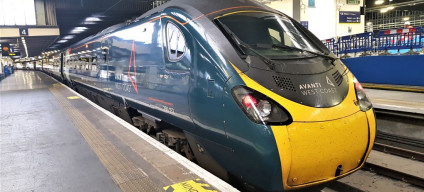
The UK capital is served by more major stations than any other city in Europe, so there's a weight of useful info that's worth knowing about taking trains to and from London. Hence the guide below:
- includes links to detailed info on how to use the eight largest London stations
- useful info on how to use / avoid the Underground and how to use the other cross-city railways
- how to transfer between the major stations
- explains how to travel on to the tourist destinations from each major station
- how to use the trains to travel between London's airports and the city centre.
The journey guides include access to booking links and information about the trains, tickets and destination stations. Plus for the scenic routes there are insights on how to make the most of the rides on the trains.

Search for a journey:
- No Matching Cities
- List is empty.
Notes on the stations
The eight things most worth knowing about taking a train from a UK station are:
1: Unlike countries such as France, Italy or Germany there can be differences in how the information at UK stations is provided to travellers. Twenty of the largest stations are managed by Network Rail but all other stations are most typically managed by the Train Operating Company, which happens to provide most of the train services at that station. Therefore there isn't a national standard for departure screens and signage etc - hence the info below has to be general summary.
2: Outside of London most cities only have one major station; the main exceptions are Birmingham and Glasgow and Manchester .
3: Until recently British stations didn't have any information which informed travellers of where to wait on a platform (track) for easy boarding into coaches in which reserved seats are located. The platforms/tracks at British stations still aren’t usually divided into zones, as obviously as they are in France and Germany. Instead the platforms (tracks) at many large stations, at which trains call at during a journey, now have comparatively small signs spaced along the platform, which show the coach numbers of the trains; usually the trains heading to and from London.
4: It's a good idea to pay close attention to the information screens on the platforms (tracks) as many of them now show a lot more information than the destination and time of the next departure - they often now also tell travellers where to wait on the platform if you have a reservation.
5: At the lager terminal stations, the platform / track number that a train will be leaving from, isn't usually confirmed until around 20 mins prior to departure.
6: If a train is departing on time it can be removed from the main departure board two minutes before it is due to leave.
7: On long distance trains heading away from London, the First Class coaches are usually at the rear of the train, when heading to London, they’re usually at the front.
8: Trains very rarely reverse directions at stations in Britain during their journeys, so if you prefer to face forwards, you will usually be facing that way for the entire trip. The three major exceptions are:
- Manchester <> Bristol/Exeter trains reverse direction at Birmingham.
- Newcastle <> Southampton services reverse direction in both Birmingham and Reading.
- Manchester <> Bournemouth services reverse direction at Reading.
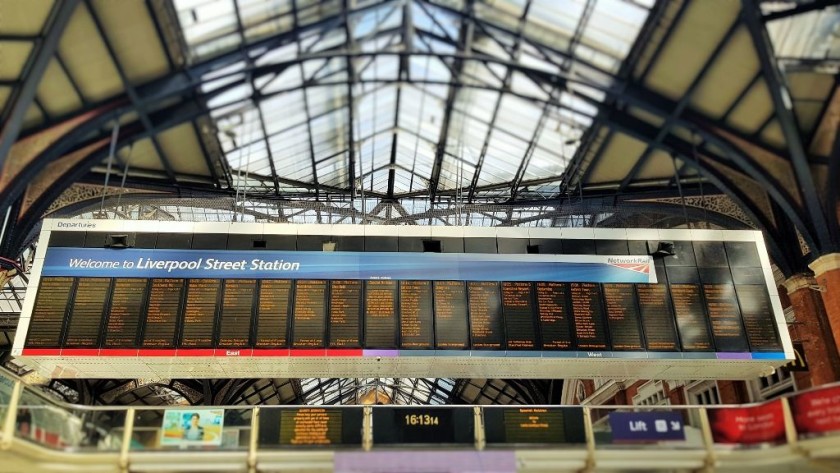
A train numbering system in which every individual train is given a specific code isn't used in Great Britain, so there isn't, for example, a train 5743 to Edinburgh which is also calling in York. Therefore in Britain the departure time is the key piece of information, which specifies the train you will be travelling by.
So if you will be travelling to York with a seat reservation on the 11:30 train from London Kings Cross, the key piece of information on your reservation is the departure time. When you're at King's Cross station you can look for which train you will be boarding on the main departure board. You would be looking for the train leaving at 11:30, it's final destination will be Edinburgh, but beneath its destination, all of the other stations the train will be calling, at will be listed. One of these other stations will be York, so this 11:30 train to Edinburgh, is also the train to York.
Therefore the train departures are arranged in vertical columns of lists of the stations that each departure will be calling at. As each train departs, the columns shift to the left, because they are shown in departure order from left to right.
Top right on each column will be the platform (track) number, but when each departure is initially listed, it will often be blanked out. So you'll know which departure you will be taking because you'll have matched your destination to the departure time, but you won't know, yet, which platform it will be leaving from. You need to keep an eye on the departure board, because at some point the platform number will appear and it won't usually be announced; only untypical information is usually announced at stations.
On the platform
On the platforms at non-terminus stations, the departure info will also list all of the stations that the next train to depart will be calling at. Though this info can be shown as scrolling text; this text is worth watching closely as it can also covey additional info other than the calling points.
Taking time out to check all of the info on the platform departure screens is recommended, particularly when travelling long-distance. As explained above, you can often use the info to work out where to wait for boarding into the coaches in which your reserved seats will be located, but other useful info, not usually shown on the main departure boards, can include the scheduled arrival time at each calling point.
Click the buttons below to discover how to travel to and from the stations by public transport, plus links to additional info including the station and city websites.

The scenic sections of the journey are shown by the arrows:
- Glasgow - Dalmuir > Arrochar > Fort William > Mallaig
- Leeds - Skipton > Settle > Carlisle
- Exeter > Totness - Plymouth > Lostwithel (Cornwall)
- Inverness > Kyle of Lochalsh
- Machynlleth > Pwllheli
- Newcastle - Morpeth > Berwick upon Tweed > Dunbar - Edinburgh > Kirkcaldy > Dundee > Stonehaven > Aberdeen
- Lancaster > Carlisle > Carstairs - Glasgow and Edinburgh
- Edinburgh > Kirkcaldy > Perth > Inverness
- St Erth > St Ives
- Swansea > Llanelli > Llandrindod > Craven Arms - Shrewsbury
Short videos showcasing some of these journeys have been uploaded to the ShowMeTheJourney channels on YouTube dedicated to England and to Scotland .

National Rail, which has overall responsibility for how the trains are managed in Britain, has teamed up with a swathe of tourist attractions for a promotion which allows two entry tickets for the price of one when travelling to and from them by train. How it typically works is:
- You can look for which attractions and guided tours are members of the scheme on the National Rail website .
- Having chosen an attraction you can then see how to book the special promotional tickets or voucher; when needed you can find promo codes on the dedicated page for each attraction on the National Rail Website.
- On the online booking page of the attraction you should see an option which corresponds to 'National Rail - Two for One offer'.
- Book your attraction tickets or voucher.
- On arrival at the attraction you present your attraction tickets and rail tickets to gain entry.
The offers are available to visitors to the UK as well as residents, so they can be a great way to save money when on a holiday .
Though what's good to know is:
- You need to present either the outward or return part of a national rail ticket to gain entry, along with your attraction tickets, so Oyster Cards and other Travelcards aren't valid.
- The ticket machines at stations will retain one-way tickets, hence return tickets are a must - and if possible avoid putting your outward tickets through the machine, by asking the staff to open the gates/barriers.
- The two people entering the attraction on the 2-for-1 offer will both need separate rail tickets.
- The type of rail ticket, how much you paid for it and the distance travelled all don't matter, any pair of return rail tickets will suffice.
- If you have one, you can use Railcards to book the rail tickets.
Be inspired and discover how to make the fabulous journeys

How to experience the coasts and mountains without a car

Make going by rail the star attraction of your explorations.

Escape from Britain on the train:

If you are not resident in the UK you can use Eurail and InterRail 'global' passes to see Britain by train in addition to other countries of your choice; though you'll need to be sure that your trip to and from England / Scotland / Wales falls within your selected period of time that your pass will be valid for.
For European citizens InterRail for Great Britain passes are available for 3, 4, 5, 6 or 8 days of non-consecutive travel. Everybody else who solely wishes to explore Britain by train can make use of BritRail passes ; and if you meet the InterRail criteria and aren't resident in the UK, there are BritRail passes valid for two days of travel which are cheaper than those InterRail passes valid for 3 days. Eurail passes are not available solely for travel in Great Britain.
With any of these passes you can hop on any daytime national rail service, reservations are available but optional on most long-distance routes ; and on daytime trains there will be no charge for making the reservation; special rates are available to rail pass users on the Caledonian Sleeper and Night Riviera services.
Users of Eurail and InterRail 'global' passes can book reservations on Eurostar , which can seem pricey, but the cost per day of using the pass + the reservation fee, is often much cheaper than booking Eurostar tickets. However, BritRail passes are not valid on the Eurostar.

Please support ShowMeTheJourney
Help keep us advertising and paywall free!
This second version of ShowMeTheJourney is exciting and new, so we are genuinely thrilled that you are here and reading this, but we also need your help.
We’re striving not to let anything get in the way of providing the most useful service possible, hence a facility has been set up with DonorBox which can be used to support the running costs and make improvements.
Instead of advertising or paywalls, your financial support will make a positive difference to delivering an enhanced service, as there’s a lot of ideas which we want to make happen.
So if you have found the info provided here to be useful, please consider saying thank you.
See if there’s a unique journey guide for your trip, featuring info on the trains, tickets & stations.
- Austria by train
- Wien / Vienna
- Belgium by train
- Bruxelles / Brussels
- Czechia by train
- Praha / Prague / Prag
- Denmark by train
- København / Copenhagen
- France by train
- Germany by train
- Frankfurt (Main)
- Köln / Cologne / Koeln
- München / Munich
- Hungary by train
- Italy by train
- Firenze / Florence
- Milano / Milan / Mailand
- Roma / Rome
- Torino / Turin
- Venezia / Venice / Venedig
- Netherlands by train
- Norway by train
- Poland by train
- Warszawa / Warsaw
- Portugal by train
- Lisboa / Lisbon
- Spain by train
- Sweden by train
- Switzerland by train
- Basel / Bâle
- Genève / Geneva
- Zürich / Zurich

This is one of more than 100 train travel guides available on ShowMeTheJourney , which will make it easier to take the train journeys you want or need to make. As always, all images were captured on trips taken by ShowMeTheJourney.

- Europe by Train
- Journey Guides
- Rail Stations
- Trip Planning
- Travel Articles
- Tips from 100s of journeys
- How to take a night train
- Good to know about daytime trains
- Travelling with Children
- Taking Bikes on Trains
- Travelling with Luggage
- Taking dogs on trains
- Common benefits of first class travel
- Journeys with multiple connections
- Money saving advice
- The best permanent deals and offers
- Intro to seat reservations
- Step-by-step booking guides
- InterRail/Eurail
- Access over 500 rail holidays
- Save 5% on more than 30 Swiss rail holidays
- Book a range of Swiss rail passes
- Buy Half Fare Cards for Switzerland
- Book train tickets with Trainline
- Book rail holidays worldwide with Bookmundi
Select language
What are you looking for, travelling around britain.
VisitBritain/ Peter Kindersley
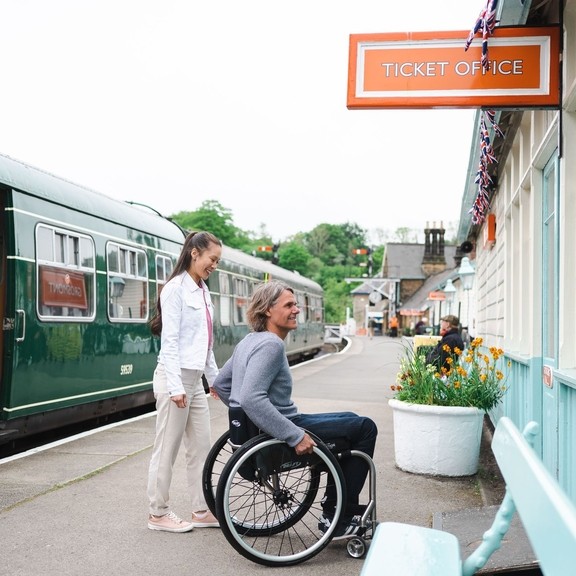
Introduction
Whether its lush green countryside, dramatics coasts, cute villages or bustling cities, you’ll find all you need on the different ways you can get around Britain.
Travelling around Britain by train
Travelling by train is a green, scenic and relaxing way to discover Britain. The rail network here covers whole swathes of Britain, with more than 2,000 stations serving England, Scotland and Wales. It’s an easy and efficient way to travel, with different train companies serving different parts. You can plan your journey using the National Rail Journey Planner , and before you know it, you could be in Brighton, Cardiff, or almost anywhere else! Journey lengths aren’t too onerous either - hop on a train in London and you can be in Scotland within four hours.
It’s easy to travel within regions and towns too. Plan your journey and buy tickets from large travel agents, online ticket providers, and at all railway stations.
Buying your ticket further in advance can save you money and sometimes it’s even cheaper to buy two separate singles than one return, so it pays to check this before booking. If you opt for a BritRail pass – exclusively for tourists – it offers unlimited journeys and various discounts, giving you the freedom to travel around at your own pace.
Travelling around London
Britain’s busiest, most populated and diverse city is England’s capital: London. While lots of the central areas are easy to explore by foot, you will no doubt need some form of transport during your stay. If you know where you want go to, you can find the quickest routes for your journeys in and around London using Transport for London’s (TfL) handy journey planner .
Transport tickets and Oyster Cards
The cheapest way to get around is by using a Visitor Oyster Card , a pre-paid electronic card that can be used on buses, the tube, the tram and most rail services within London’s travel fare zones (zones 1 to 6). You can save time by ordering your card before you arrive.
One-day paper travelcards (which cover bus, tube and inner-city rail services) are also available from all London Underground stations and are a good choice for short breaks. To charge or ‘top up’ your Oyster Card (known locally as an oyster), visit travel information centres, newsagents showing the blue Oyster symbol, and all London Underground stations. You can also use the Oyster Card app .
Contactless bank cards, Apple Pay and Android Pay can also be used on London’s transport system – there are daily caps meaning you can take unlimited journeys in a day for a set price, though these caps change depending on which zones you travel through.
The London Underground
The legendary London Underground network, often just called the tube, has more than 270 stations, each marked with the famous London Underground roundel logo.
Tubes run daily, apart from Christmas Day, from around 5:30am until midnight. Some lines run throughout the night at weekends. There are also fewer services on Sundays and public holidays.
Each tube line is represented by a different colour. Colour-coded maps can be found at every tube station and maps of the central section of the network are displayed on each tube carriage.
If you get lost, flag down a TfL staff member for help or simply ask fellow passengers – most Londoners will be happy to help.
Find out more about travel on the London Underground .
The London Overground and suburban rail services
The London Overground and a number of traditional rail services also operate out of London’s major hubs, such as Waterloo, Liverpool Street and Victoria, and travel to more suburban areas of London, particularly parts of south London which aren’t reachable by tube.
Oyster Cards and contactless bank cards can be used on many services up to certain stations (within the London fare zones). To be sure check the stations you use operate within these zones before travelling.
London buses
London buses come in all shapes and sizes – from double-deckers to single-deckers and Routemaster buses (with doors at the front, centre and rear) and operate all over the city. Check out bus routes with TfL’s handy bus map .
London buses don’t take cash - instead you need to touch your Oyster Card or a contactless bank card against the reader when you board the bus, and a set cost will be deducted from the card, regardless of how long the journey takes. Paper travelcards can also be used on buses - just show this to the driver when you board.
London has the most extensive night bus system in the world, with a number of buses running 24- hours-a-day, meaning you can go clubbing into the small hours without worrying about getting home.
Cycling is an increasingly popular and green ways to get around London and with hundreds of cycle lanes throughout the city, it’s easy.
Santander Cycle can be hired (and dropped off) from docking stations throughout the city. Just turn up, pay and cycle away.
Folding bikes are allowed on all forms of public transport, while non-folded bikes can only be taken on some services at specific times .
The famous London black cabs (officially known as Hackney Carriages) are as much as an institution as big red buses. Black cabs are safe and reliable and drivers have to undergo strict tests to get a licence. All are wheelchair accessible and accept credit and debit card payments, and some are now electric, making travelling around London even greener.
There are fewer black cabs outside central London, but you will find that plenty of mini-cab companies or check out minicab apps such as Uber or Bolt.
While it’s possible to drive around London, it can sometimes end up being the most time-consuming and expensive way to travel. London is congested, and cars are charged for entering certain central areas. This is known as the Congestion Charge , which is charged per day, and payable online. It applies to drivers who use the congestion zone Monday to Friday between 7am and 6pm, although black cabs are exempt. Certain vehicles will also have to pay to drive within the Ultra Low Emission Zone (ULEZ) , which is in force 24 hours a day, seven days a week. This zone covers a larger area of London than the Congestion Charge.
Guidance for non-UK registered vehicles
If you intend to bring a vehicle from Europe and it is registered outside of the UK, you will need to register it with Transport for London before driving in the capital. More guidance can be found via the official Transport for London website .
You can also check if your vehicle meets emissions and safety standards. You can check your vehicle here .
London Ultra Low Emission Zone (ULEZ)
The London ultra-low emission zone (ULEZ) costs £12.50 per day (from midnight to midnight) for non-compliant vehicles. It was expanded to cover all London Boroughs in August 2023. It operates 24 hours a day, every day of the year, except Christmas Day (25 December).
A failure to pay the ULEZ for a non-compliant vehicle could result in a penalty charge notice of £180. This can be reduced to £90 if paid within 14 days but can also be increased should you fail to pay or successfully challenge it. Both UK and non-UK registered vehicles can be given penalty charge notices.
Find out more about the London ULEZ .
The Congestion Charge
The Congestion Charge covers central London and is a daily £15 charge. All vehicles driving in the zone are required to pay. It applies from 07:00 – 18:00 Monday to Friday, and 12:00 – 18:00 at weekends and bank holidays. There is no charge from Christmas Day to New Year’s Day bank holiday, inclusive.
A failure to pay the Congestion Charge could result in a penalty charge notice of £180. This can be reduced to £90 if paid within 14 days but can also be increased should you fail to pay or successfully challenge it.
Find out more about the Congestion Charge .
London low emission zone (LEZ)
The low emission zone (LEZ) covers most of Greater London and operates 24 hours a day, every day of the year. The LEZ is not the same as the Congestion Charge zone in Central London and the ultra-low emission zone (ULEZ).
If your vehicle is registered outside of the UK, you will need to register it with Transport for London to ensure that it meets the LEZ emission standards.
Find out more about the low emission zone .
Do driving charges apply to rental cars?
The Congestion Charge in London applies to all drivers. The requirement to pay the ULEZ fee will be dependent on whether your rental car meets emission standards. As most hire fleets are relatively new, the majority of vehicles will be exempt. Check with your car rental company when booking or picking up your vehicle to ensure it is compliant.
Travelling around other British towns and cities
Using public transport is an easy, economical way to travel around Britain’s cities and towns, and is a great way to experience local life.
Local buses
In most UK cities, you can buy bus tickets directly from the driver when you board a bus. Large areas like the West Midlands and Greater Manchester also have their own regional travel cards which are valid on all public transport within their area.
Check local tourist websites for timetables and more information. Regional bus operators may also have their own apps, which can be downloaded via the main app stores.
City tram networks
Edinburgh, Birmingham, Sheffield, Manchester, Newcastle and Nottingham operate tram services – you can purchase tickets for the tram either from an on-board conductor or from ticket machines at tram stops. Get more information from local tourist offices and local tourist board’s websites.
Taxis and minicabs are available in cities and towns across Britain. Taxi ranks can be found just outside most busy train stations or you can phone for one in advance. Minicab apps, such as Uber or Bolt, also provide services in many of the major towns and cities.
Many city roads have cycle lanes and even dedicated traffic lights. Most destinations have somewhere you can hire bikes, and increasingly scooters.
The National Cycle Network , managed by Sustrans, also covers many different parts of Britain, providing signed routes and paths.
Travelling around Britain by car
What do you need to drive in britain.
You’ll need a current valid driving licence, and if required, an international driving permit.
You must keep proof of ownership or a rental agreement in your vehicle, plus any insurance documents.
Find out more information on what you’ll need to drive in Britain .
How to hire a car in Britain
With lots of hire car comparison sites, make sure to do your research in advance to find the best price.
You’ll find major car rental company desks at airports and coastal ports as well as others conveniently located in city centres and major towns.
All rental companies should include insurance cover and breakdown cover with car rental, so check this when you book.
You’ll also need to have a credit card in the name of the main driver to hire a vehicle.
Electric vehicles are also available to hire at many large rental companies.
Electric vehicles and charging points
Driving electric vehicles makes travelling around Britain more sustainable. Most major car rental companies will hire them. There’s some advantages with parking not afforded to petrol or diesel powered cars too.
Britain has an extensive and growing network of electric vehicle (EV) charging points with more than 20,000 locations in operation and more being added all the time. Some charging points are free to use while others require payment using an app or a credit or debit card.
Use the Zap Map website or app to find your nearest charging points.
Fuelling stations in Britain
Most petrol stations are self-service and instructions at the pump are easy to follow.
You’ll often pay for your fuel at the counter or at the pump itself using a bank card.
Clean air zones and low emission zones
What is a clean air zone (caz) or low emission zone (lez).
In a bid to reduce air pollution, some cities in the UK have clean air zones (CAZ) or low emission zones (LEZ). Vehicles that do not meet emission standards may be charged for entering the zones. The minimum emission standard can be found in your vehicle logbook or checked via your vehicle manufacturer.
England’s clean air zones
Seven cities in England have clean air zones (CAZ) – Bath, Birmingham, Bradford, Bristol, Portsmouth, Sheffield, and Newcastle/Gateshead. However, charges may only apply to non-compliant cars and motorcycles for the zones in Birmingham and Bristol.
The CAZ minimum standard for cars and vans is Euro 6 (for diesel vehicles) and Euro 4 (for petrol vehicles), motorcycles are Euro 3.
The zones operate 24 hours a day, seven days a week, every day of the year (midnight to midnight).
Find out more about England’s clean air zones .
Scotland’s low emission zones
Unlike England’s clean air zones, non-compliant vehicles cannot enter Scottish low emission zones at any time. There is no daily charge, just a £60 daily penalty.
The Scottish LEZ minimum standard for cars and vans is Euro 6 (for diesel vehicles) and Euro 4 (for petrol vehicles). The LEZ in Glasgow has been enforced from June 2023. Further zones in Dundee, Edinburgh and Aberdeen will be enforced from late May/early June 2024.
Find out more about Scotland’s low emission zones .
Toll roads and tunnels
Some toll roads, bridges and tunnels on the UK road network will require you to pay a charge. What you will need to pay varies by location and is dependent on the vehicle you are driving.
A full list of UK toll roads can be found on the official government website .
Tips for driving in Britain
Cars drive on the left-hand side of the road.
Speed is measured in miles per hour and distances on road signs are displayed in miles.
Most hire cars will include GPS or offer a satellite navigation system as an extra, but it’s also a good idea to keep a map handy.
Take a look at the Highway Code for an up-to-date guide to all the current British driving regulations and traffic signs.
It is illegal to use a mobile phone while driving.
There are some toll roads, bridges and tunnels within the UK road network. For information on toll road charges see GOV.UK .
Travelling around Britain by coach
If you’re on a budget, travelling by coach is a great alternative to train or car, but journey times can be longer.
If you know where you want to go, plan ahead and book your coach in advance from major operators like National Express or Megabus . You can also take a coach tour of places of interest - lasting anything from a couple of hours to couple of weeks. Choose from seaside towns to chocolate-box villages, historic sites to buzzing cities. It’s a good idea to book coach excursions or longer coach trips before you arrive here.
VisitBritain/Jon Attenborough

Travelling around Britain by air
If you’re short on time, then major cities and some towns are well connected by airports. This is an expensive option and once you’ve factored in getting to and from the airports, not always the most time efficient.
You can catch domestic flights from major cities like London to Glasgow, Edinburgh and Aberdeen in around 1 hour and 30 minutes.
Travelling around Britain by boat
Britain has thousands of miles of inland waterways and hundreds of islands scattered along its coastline, many of which can be explored by cruising in a canal boat or by hopping on a ferry.
You can hire canal and narrowboats, or take an organised boat tour. For more information of Britain’s canals, rivers and lakes, visit the Canal & River Trust website .
Ferries in Scotland sail to a myriad of destinations including the Isle of Skye, Stornaway and Lochboisdale in the Western Isles. Most of the ferry companies offer a variety of different ticket types including island-hop passes.
River ferries are an interesting alternative to the more usual forms of transport, like the ferry across the Mersey River between Liverpool and Birkenhead and the London river boats that run from Westminster to Greenwich and beyond. You can discover more about ferry routes and timetables by visiting local destination websites.
VisitBritain/Andrew Pickett


A Lady in London
And Traveling the World
Lady’s 13 Easy Tips for Navigating Train Travel in the UK
I love traveling by train. There’s something romantic about a rail journey, and whenever I travel in Britain I try to do it by train. I’ve gotten a lot of messages from readers lately about how to navigate train travel in the UK, so today I want to bring you A Lady in London’s guide to British rail travel.

Train Travel in the UK
If you’ve traveled by train before, it might seem simple enough. But there are some quirks to the British train system that I wish I had known about when I moved here.
I would have saved a lot of time and money, not to mention frustration, if I had had the knowledge I do now. I hope this guide helps you avoid the mistakes I made when I first started traveling by train here.
1. Different Companies Run Different Trains
Before you start booking train tickets in the UK, it’s worth noting that there are often multiple train companies that run trains to the same destination.
You’ll need to make sure you buy a ticket from the right company for the right train in order to ensure you don’t have to purchase a new ticket or pay a penalty fare on board.
Most of the time you can go to the National Rail website to look up timetables. Once you’ve chosen a train you want to take, the website will direct you to the relevant company you need to purchase tickets from.
If you’re booking from overseas, there are some websites that handle all rail bookings, so you might not need to worry about it.

2. Check Your Departure Station Carefully
The next thing to think about when it comes to train travel in the UK is that trains to the same destination can depart from multiple stations in a city.
Keep that in mind when planning your travel so you don’t end up accidentally showing up at the wrong station. This is true in London and many other cities in the UK, so it’s good to remember whenever you travel.
3. Book Tickets Well in Advance
When I moved to London, the most important thing I learned about train travel in the UK is that booking tickets as far in advance as possible is the best way to save money.
Ticket prices on many routes tend to rise the closer you get to the date of travel, so if you wait and buy tickets at the station before you go, you could be paying a lot more than you need to for them.
I made this mistake more times than I care to remember until a friend taught me to book ahead. I still can’t believe how much I save just by buying my train tickets months, weeks, or even days in advance.

4. Look for Deals and Discounts on UK Train Tickets
Along those lines, there are deals and discounts to be had on UK train tickets. Some companies run promotions, so it’s good to check their websites in advance of your trip.
Others offer discounts for group travel or other special circumstances, so it’s worth exploring that option as well. It can be helpful if you want to take cheap day trips from London .
Sometimes booking two single (one-way) tickets is cheaper than booking a return (round-trip) ticket, too.
Spending a bit of extra time can lead to big savings, and there are independent companies that specialize in selling cheap train tickets. It’s worth doing some research online before you book so you get the best price.

5. Get a Railcard
To that end, Railcards are great ways to save money on train travel in the UK.
These cards are offered to people of specific ages and/or circumstances, and buying one can help you save on every journey for a year (including off-peak tube fares in London).
If you’re living in Britain or traveling extensively by train while you’re here, I recommend getting one. They tend to pay for themselves quickly, especially if you’re traveling on expensive routes.
I had a Railcard when I first moved here and couldn’t believe how much I saved over the course of a year.
6. Take Advantage of Group Travel Discounts
In addition to Railcards, group discounts are a great way to save on train travel in the UK. These fares are offered by many train companies in Britain if you travel in a group of 3 to 9 people.
Generally, you can get 1/3 off ticket prices at off-peak times when traveling together, but some companies even offer up to 50% off for groups of four adults.
It’s worth doing some research before you go to make sure you get the best deal if you’re traveling with others. I’ve paid far more than I needed to in the past because I wasn’t aware I could get discounts like this.

7. Leave Ample Time to Get to the Station
Once you’ve bought your tickets, there are some tips that will help you on the train journey itself. One of my best pieces of advice is to leave yourself plenty of time to get to the station before you depart.
London’s public transport suffers from frequent delays and disruptions, and taxis are often slower than the tube. Regardless of how you choose to get to the station, make sure you account for potential delays on the way.
8. Leave Ample Time to Collect Your Tickets
In addition to leaving yourself plenty of time to get to the station, it’s important to arrive at the station early if you’re collecting your tickets before you depart.
There are often long waits at ticket machines, especially at peak travel times. I’ve nearly missed trains because it took so long to get my tickets.
This is even more true if you’re traveling to a big event outside London.
Every year that I’ve gone to the Henley Royal Regatta, at least one member of my group has missed the train because the waits at the ticket machines are especially long on event days.
Many train companies now allow you to get tickets via email or on their app before you travel, so if that’s an option I highly recommend it.
9. Make Sure You Get on the Correct Train
Once you have your tickets, make sure to board the right train. I know this sounds obvious, but it’s surprisingly easy to get on the wrong one.
Many trains depart at similar times for the same location, and it’s easy to mistake one train for another if you’re not paying close attention.
This can cause you to miss a connection, have to pay for a new ticket, and/or get to your destination much more slowly than you anticipated. All these things happened to me when I first moved here.
Make sure to check your exact departure time against the departure time of the train you’re boarding, double-check that the train is going to your destination, and verify that the company running the train is the one you bought your ticket from.
Getting to the station early can help ensure you have time to do all of this.

10. Don’t Rely on Food and Beverage Service
Once on board, there are a few more things that can make your life easier. One of them is to not rely on there being any food or beverage service.
Usually there’s a food trolley or even a carriage dedicated to selling food and drink, but on certain days (especially Sundays) they close up shop.
This is even true in first class, where on some services hot meals are supposed to be served but are often reduced or cut completely due to short staff, lack of supplies, or other issues.
As such, if you’re on a long train journey it’s a good idea to stock up on food and drinks before you travel. If you’re in the UK capital, there are some great places to eat near London’s train stations .
Most train stations in London have supermarkets and food outlets, too, so it’s easy to grab something for the ride. This will make your train travel in the UK a lot more civilized.

11. Drink Like a Local
Okay, so this is a bit of a joke. But it’s also not.
Given I’ve never seen anyone drink more alcohol than British people on trains, if you want to fit in and live like a local (and not get driven crazy by all the drunk people around you), I recommend drinking on the train.
It doesn’t matter if it’s 6am or 6pm, Brits will be boozing. I promise. If you want to maintain your sanity, you will be wise to join them.
12. Be Prepared for Delays and Cancellations
While you’re traveling (and/or drinking), make sure to be prepared for delays and cancellations. It’s rare that I’ve been on a train in the UK that hasn’t been delayed, and I’ve dealt with my share of cancellations.
Rail replacement buses are also fairly common, especially on weekends when maintenance works often close the tracks.
If you have a connection to make or plans after your arrival, build in extra time for unforeseen circumstances.
If your train is delayed for more than 30 minutes, you may be entitled to compensation. Make sure to check if you experience delays, as often you can get some or all of the cost of your train ticket reimbursed.
13. Look Out the Window
My last piece of advice for train travel in the UK is my best: look out the window. One of the reasons I love traveling by train in Britain is that the views are amazing.
From the English countryside to the Scottish coast, the hilltop cathedrals to the seaside towns, the trains here have unparalleled views to enjoy.
On some rail services you can reserve a seat when you book, so finding a window seat is a good idea. On others, it’s a free-for-all, so you’ll have to rely on skill and luck to get a good seat.

I hope this blog post has helped you navigate train travel in the UK, and that it will save you from making a lot of the mistakes I did in my early years of living in London.
Above all, I hope it encourages you to get out and see more of the country. There are some amazing places to discover here (if you need inspiration, start here ).
Find this post helpful? Buy me a coffee!
New here? Join thousands of others and subscribe to the A Lady in London blog via email .
4 Comments on Lady’s 13 Easy Tips for Navigating Train Travel in the UK
This was a very helpful article – and well written as well. Thank you for sharing.
You’re welcome! I’m glad you found it helpful.
Thank you for the tips and the laugh! I’m planning my second trip to the UK (lots of train travel like last time) and I have to say… Tip #11was instinctual for my friends and me in 2019! Our first train trip was from London to Aberdeen and we spent the entire time drinking little cans of Gin and something…. Delish! And we had a great time!
I’m glad to hear that!
Leave a Reply Cancel reply
Your email address will not be published. Required fields are marked *
This site uses Akismet to reduce spam. Learn how your comment data is processed .
© Copyright A Lady in London 2007 - 2024. Privacy Policy.
Available on the AppStore
National Rail Enquiries iPad App
- Alerts for delays
- Get me home
- NRE twitter updates
Download now
- Skip to content [Accesskey '1']
- Skip to navigation [Accesskey '2']
- Create Account
- StumbleUpon
- Journey Planner
- Tickets & Savings
- Travel Updates
- Stations & on Train
- Help & Support
- Please type your station name
- Search by postcode
- Sorry, no stations found.
- Sorry, we can't plan this journey.
- Loading stations...
September 2024
October 2024
November 2024
December 2024
Where are you heading?
- Railcard Type: None 16-17 Saver 16-25 Railcard 26-30 Railcard Annual Gold Card Dales Railcard Devon & Cornwall Gold Card Devon & Cornwall Railcard Disabled Persons Railcard Esk Valley Railcard Family & Friends Railcard GroupSave HM Forces Railcard Highland Railcard Jobcentre Plus Travel Discount Card MyCumbria Card Network Railcard North Lincolnshire Concessionary 34% North Lincolnshire Concessionary 50% Rhondda Railcard Senior Railcard Two Together Railcard Veterans Railcard West Yorkshire Disabled Concessionary Discount West Yorkshire Senior Concessionary Discount Railcard Quantity: 0 1 2 3 4 5 6 7 8
Recent Journeys
Information for commuters.
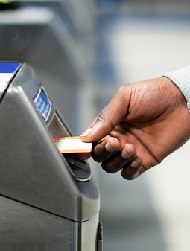
Stay alert at home or on the move

Switch to smart tickets

Keep updated on your journey
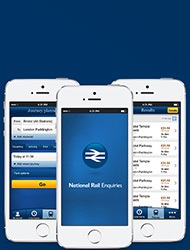
Save money with cheap fare finder
Cheaper tickets can be found if you adjust your time of travel
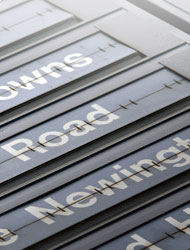
Real-time train departures
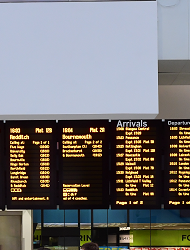
- Slides page 1
- Slides page 2
Live Departures
- Live arrivals
Switch stations
- Special offers
Travel deals for you

Attractions
Ticket offers.
- Complete listing of special offers
Railway Children
The generous support of people like you has enabled us to help thousands of street children around the world. Donate Today
You are here:
Train times & tickets
- Journey planner
- Live departure board
- Cheap fare finder
- Your ticket
- Travel tools
Plan your Journey
- Stations & destinations
- On the train
- Passengers with disabilities
- Animals and luggage
Changes to train times
- Current service disruptions
- Engineering work
- Special seasonal events
- Timetable changes
- About this site
- Train Operating Companies
- Accessibility
- Terms & Conditions
- Back to top [Accesskey '5']

Transportation in the UK (Guide to how to get around)
By: Author Tracy Collins
Posted on Last updated: July 24, 2024
An important consideration when planning your UK trip itinerary is how to get around the country. In this guide to transportation in the UK, I cover everything from cars, trains and buses to planes, trams and ferries to help you choose the best way to get from A – Z during your trip.
If you are in the process of planning your itinerary it is vital to consider how you will get from A – B and evaluate all the options open to you. Whilst the UK is a relatively small country with a fairly decent public transport system, especially in the major cities, it is important to choose the best option depending on your itinerary and budget.
For example, if you are planning to travel around the UK from city to city you will find that taking the train will be the easiest and most cost-effective option. However, if you are planning to visit rural areas of the UK such as the Cotswolds you will discover that it is much easier to hire a car and take a road trip or, if you prefer not to drive, an organised day tour.
If you are not familiar with the transportation options in the UK this article will explain each one including renting a ca r, taking a train, coach, bus, ferry or even a plane and when to consider using each one.
Train passes
Travel times between popular train routes in the uk, sleeper train services, how much does it cost to rent a car in the uk, important considerations when hiring a car in the uk, driving in the uk – rules of the road, coach travel in the uk, flying within the uk, ferries in england, ferries in scotland, ferries in wales, how to travel around london, train, plane, ferry, bus, coach or car…the option is yours, getting around the uk by train.

If you are planning to visit major cities in the UK such as London, York, Edinburgh, Bath, and Liverpool the best way to get around is by train.
Train travel in the UK is generally efficient, fast, takes you straight into the centre of the city and is also a great way to enjoy views of the countryside between destinations.
Travelling by train in the UK can however be expensive. It is essential to book in advance and avoid travelling during peak times (before 9:30 am on weekdays)
We recommend using trainline.com to check timetables and fares and make an advanced booking on regular trains within the UK.
Train travel in the UK can be confusing as there are several different rail companies that operate across the network. Our complete guide to travelling the UK by rail includes practical tips, information and advice to help you plan your train travel adventures in the UK with ease.
If you are visiting the UK from the US or Australia I recommend purchasing a BritRail Pass or Global Eurail Pass if you are planning to use the train extensively during your trip.
There are many different BritRail Passes available, including a pass that covers train travel between England, Wales and Scotland or country or region-specific passes such as the South West pass (for Devon, Cornwall, Bath etc) or Scotland-only pass.
You can use a BritRail Pass if you’re not a UK citizen and have not lived in the UK for the last six months or more. BritRail Passes can only be bought online up to 6 months in advance .
Find out more about the various BritRail Passes here or the Global Eurail Pass here
Read – Comparison guide to the BritRail Pass versus Global Eurail Pass
Approximate train travel times (check for exact timings) between major UK destinations:
- London – York 2 hours
- London – Edinburgh 5 hours
- London – Newcastle 3 hours
- London – Bath 2 hours
- London – Liverpool 2 hours 30 mins
- London – Cardiff 1 hour 50 mins
- Edinburgh – Inverness 2 to 3 hours
- York – Edinburgh 2 hours
- London – Penzance 5 hours
- London – Birmingham 1 hour 30 mins
Many of these destinations such as Bath , Birmingham, and York are relatively easy day trips by train from London. Read more here.
Read more – 10 beautiful train journeys to take in the UK
If you are planning to travel to mainland Europe taking the high-speed Eurostar service from St Pancras International is a fast and efficient way to do this.
Travel to Paris, Brussels, Amsterdam, Lille in only a few hours and change for train services to destinations all over Europe.
Read more about our Guide to UK Train Travel
There are two sleeper train services that you can take in the UK. If you are travelling from London to Scotland the Caledonian Sleeper is a great option. Take the overnight service to Edinburgh , Glasgow , Aberdeen, Fort William or Inverness .
Click for more information about the Caledonian Sleeper
Read more – Guide to UK Train Travel
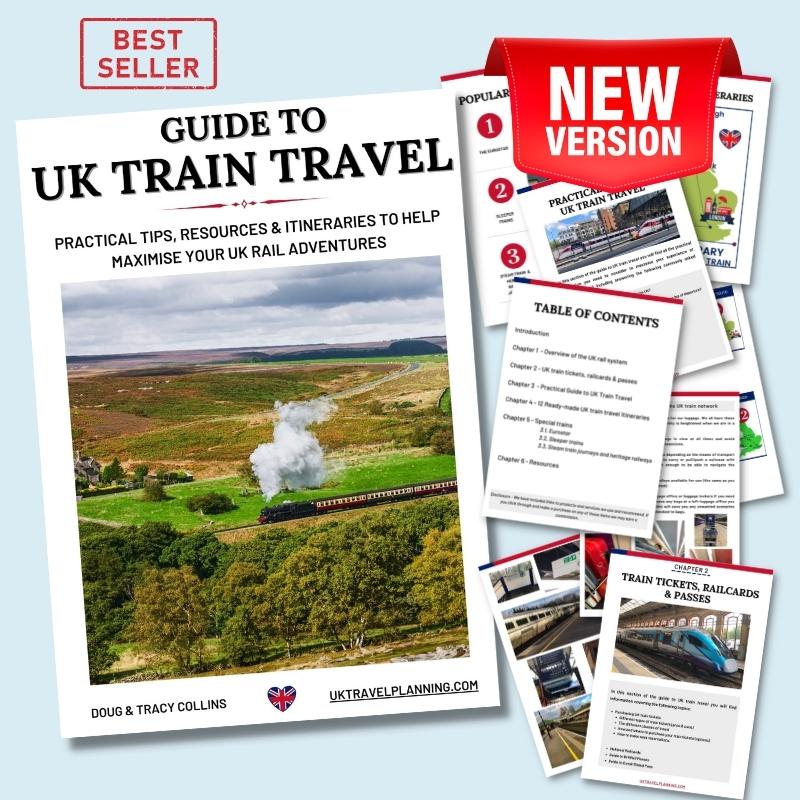
Travel by car in the UK
Hiring a car is possibly the best option if you want to head to some of the more rural areas of the UK. Taking a road trip around Cornwall, Scotland, or the Peak District for example is a wonderful way to see the countryside and stay in smaller towns and villages.
Note – I would not recommend hiring a car when you are in London. London transport is excellent and the cost and hassle of driving in the capital is really just not worth it.
If you are planning a road trip as part of your itinerary, I recommend taking the train to the nearest city or airport and picking up a hire car there. For example, in 2020 we took the Caledonian sleeper from London to Fort William and picked up a hire car at the train station.
🚗 Not sure if you’re up to drive in the UK? We recommend using a Tripiamo guide to get yourself familiar before your journey. Previous UK Travel Planning users have said this has made them feel much more comfortable getting behind the wheel. More discussion in our rental car guide in the UK .
If you are planning to hire a car in the UK you should budget approximately £140 – 180 a week for a compact car.
In addition to this, you will need to budget for petrol (gas), insurance, tolls and parking costs. Petrol is expensive in the UK compared to North America and Australia.
We recommend comparing prices to get the best deals. Companies such as Discover Car Rentals compare prices from a large number of rental companies to find the best deals for car rentals in the UK.
- Manual cars are the norm in the UK (and Europe) so you will need to request an automatic when you book.
- Do not be tempted to hire the largest model of car – roads are narrow and parking spaces tiny which makes a larger car impractical.
- To hire a car in the UK you must be over the age of 21 and held your license for over 12 months.
- Ensure you check the car for any damage before you drive away – we generally take a video and photographs for our records.
- Check pick up and drop off locations and make sure you stick to the agreed drop off time as you will be charged extra if the car is late.
- Consider how you will navigate around the UK. You will have the optional extra of a hiring a GPS device (Sat-nav) with the car or if you have your mobile phone using a map app which works offline is also an option. I recommend also having a paper map as a backup.
- If you return the hire car to a different location expect to pay a surcharge.
Many overseas visitors are nervous about driving in the UK (especially if you are from a country that drives on the right-hand side!)
Some things to know include:
- Drive on the left
- Seat belts must be worn at all times
- Children up to 135cm or the age of 12 or under must travel with the correct child restraint for their age and size.
- It is against the law to use a mobile phone when driving. (Using a hands-free device is allowed)
- Overtake on the outside or right-hand lane
- Do not drink and drive – avoid drinking altogether if you are driving.
- At roundabouts give priority to traffic approaching from the right unless indicated otherwise
- Speed limits are 30 mph in towns and 70mph on motorways. Speed limits are enforces and cameras are common.
- Many cities have Park and Ride schemes to avoid traffic congestion. If possible avoid driving in UK cities – many have complex one way systems and parking can be extremely difficult and expensive.
- In rural areas many of the roads can be narrow with many twists and turns and are often single lane. Drive carefully and slowly and don’t be surprised to find a horse and rider or even a tractor round the next bend.
✅ Tripiamo guides cover all of this and more and even provide you with virtual practice to get you used to the rules of the road and driving on the opposite side. We’ve had customers that have found the Tripiamo guide their key to confidently driving across the UK.
Read more – Renting a car in the UK – Practical Guide and tips

The cheapest transportation option for travelling around the UK is to take a coach. It is however also the slowest!
National Express coaches run between all major airports, towns and cities. Coach stations are generally located near train stations. Victoria Coach Station is the main hub in London.
Fares, departure times and bookings can be made for National Express coaches through the TrainLine.com
In Scotland CityLink and Megabus are the main operators.
Book tickets as early as possible to secure the cheapest fares – bookings open 12 weeks in advance.
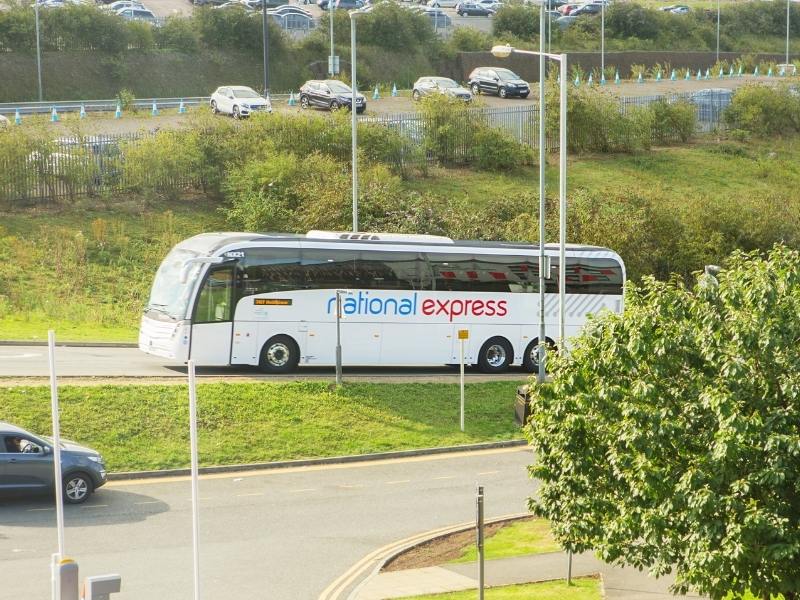
London has 4 main airports – Heathrow, Gatwick, Luton and Stanstead. Heathrow one of the busiest in the world and the first port of call for many flying into the UK from outside Europe.
There are many regional airports many of which also receive international flights with Manchester, Birmingham and Edinburgh among the busiest outside London.
Many UK airlines offer good deals for flights to other European destinations. No frills airlines such as EasyJet or RyanAir also fly internally.
I would recommend comparing the cost and time of taking a train within the UK rather than flying to a destination. It is often quicker to take the train – and cheaper if you book in advance. Many no-frills airlines require additional charges for luggage.
Compare costs with Skyscanner and the TrainLine and don’t forget to factor in the cost of travel to and from airports.
If you are keen to visit the Channel Islands, the Isle of Man, some of the more remote Scottish Islands or Ireland flying may be the most convenient method.
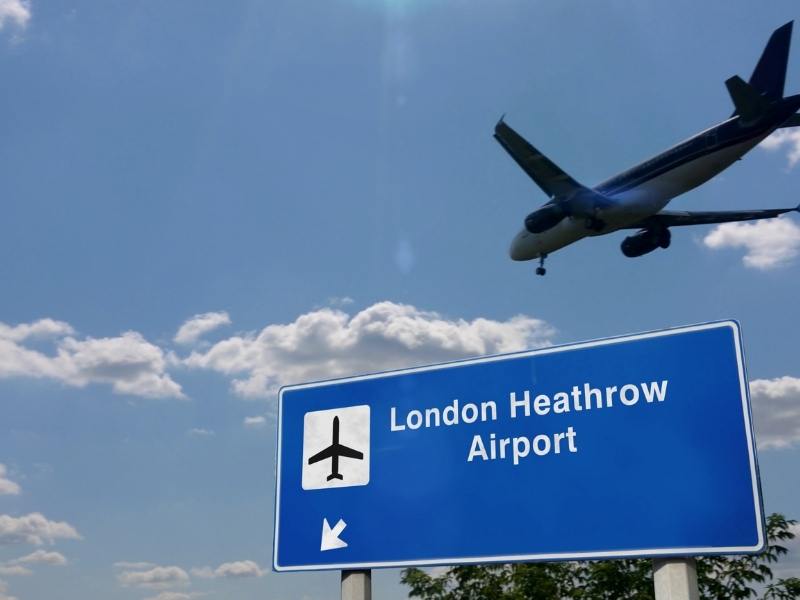
Ferries in the UK
Most ferries leaving English ports (including Dover, Hull, Newcastle, Portsmouth, and Poole) are heading for France, Holland, Belgium or Spain.
Ferries for the Isle of Man and Belfast depart from Liverpool.
Most of Scotland’s island s can only be reached by boat (the Isle of Skye is joined to the mainland by bridge)
Caledonian MacBrayne (CalMac) operate the ferries between the mainland and the islands as well as to Northern Ireland.
Book tickets early if you plan to take your vehicle on the ferry as spaces book up quickly, particularly during the summer months.
You can find more information about ferry crossing times and prices here.
Ferries to Ireland leave and arrive from Fishguard, Holyhead and Pembroke.
Ferries from Fishguard and Pembroke sail to and from Rosslare in Ireland and are operated by Irish Ferries and Stena Line.
Ferries from Holyhead sail to Dublin (again with either Irish Ferries or Stena Line)
Crossing time range from 2 to 3 hours depending on port of departure.
Click here for ferry times and prices

Transportation in major cities
Many of the UK’s major cities have excellent public transport networks. Trams run in many cities including Edinburgh , Nottingham, Manchester, and Sheffield.
Many cities such as Bath , York and Oxford are walkable. Hop-on and off buses may operate especially during the summer months and local bus services are often regular and easy to catch. You can find further information about local transportation options in my area and city guides.
We also recommend downloading some apps which are handy while travelling around the UK – find the full list here.
In London, there are several transportation options including taking the Tube (underground), overground trains, buses, black cabs (taxi), Thames clippers (boats) and even bicycles.
For more information read our transportation guide to London which includes information about the Oyster Card .
If you are flying into Heathrow or Gatwick read our guide to getting into London – Heathrow to London or Gatwick to London .
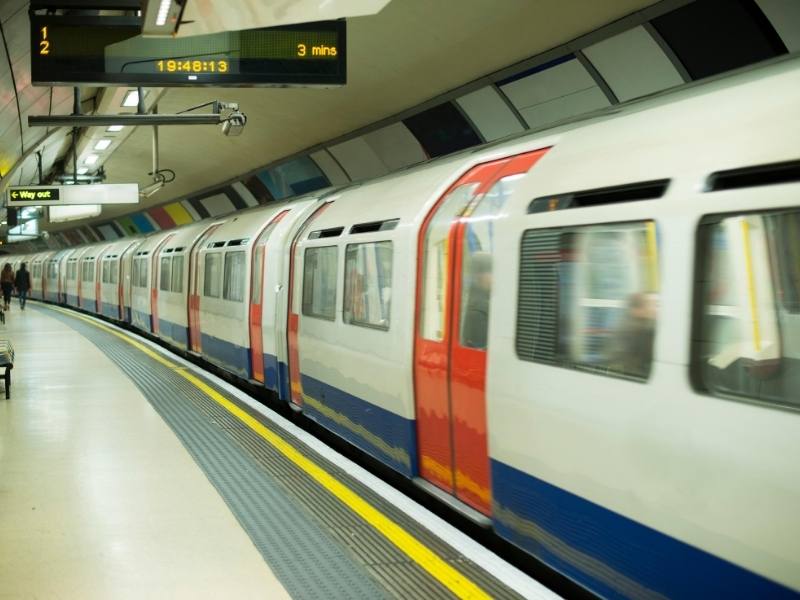
Choosing the best UK transportation options for your trip
You may find that a variety of transportation options are necessary to get you around the UK.
I recommend using Google Maps to work out the various transport options available. Enter your destinations and you will get an overview of travel times, prices and schedules for public transport, driving or flying between them. This is an ideal place to start when deciding which method is best for your budget, travel style and itinerary.
You will also find detailed instructions in my city and area guides about how to get there from London using a variety of transportation options.
After reading this guide you should now have a clearer idea about the different transportation options around the UK and which may be the best for your trip and itinerary.
Need help planning your UK trip?
Check out my complete 10-step guide which walks you through the process in a logical and easy-to-follow process.

IMAGES
VIDEO
COMMENTS
You've found the gateway to Britain's national rail network. The portal to rail travel, including train times information, fares enquiries; promotions; and ticket info.
20+ operators, one network. Click here for the best map of the UK train network. Here is a quick guide to train travel in Britain. Since 1995, Britain's rail network has been run by over 20 private train companies, but they work together as National Rail with co-ordinated fares & ticketing. You can find train times & fares for all train operators all on one website, you can buy a train ticket ...
Boasting the world's oldest rail system, the state of UK train travel is one of the most contentious topics in the country, ... For travel in a smaller area, some regions offer 'Ranger and Rover Tickets' that give you unlimited travel within a set area and time period. You can browse a full list of those here. As a tourist however ...
Travel around Great Britain (and the UK) by train. Discover the British train network, ticket types, and popular journeys and buy British train tickets with Trainline. ... Day Passes that allows you unlimited travel between two stations at any time of the day, giving you the flexibility to travel when you need within 28 days.
Alternatively travel back to London via train. The Night Riviera leaves Penzance at 21:45 (21:15 Sundays) and arrives into Paddington at around 5:30 am. Click for ticket prices. 2. London Euston to Glasgow Central. London Euston > 4 hours 50 minutes > Glasgow Central. 343 miles from London Euston to Glasgow Central.
How Train Travel in the UK Works (Warts and All). Until 1997, British Rail was a state-owned monopoly, but it was sold off piecemeal and entirely privatised by 1997. Today, Britain has multiple rail operators competing for customers, sometimes on the same routes.
Using British Trains to Get Around. British trains have been around, in one form or another, since the early 1800s. The network is well established and extensive, making train travel the easiest and, usually, the fastest way of getting around England, Scotland and Wales. It is also acknowledged to be the most eco-friendly way to travel in Britain.
Continuous: Unlimited travel for the duration of your pass. Flexible: A flexible pass gives you a certain number of travel days that can be used during the duration of your ticket. For example, five days within one month. Passes start around $120 but can go up to $600+ for longer passes.
BritRail Passes can start at £96 for a 2-day Consecutive Pass, and can go up to £568 for a monthly Consecutive Pass. There are seven different passes available to suit the period of time you plan to travel around the UK by train. Using the table provided below, you can budget for how long you want to travel by train across the UK, and get the ...
National Rail Enquiries is the UK's number 1 resource for train tickets, timetables, fare enquiries, train company information, promotions and live train running information from the official source of UK rail travel. When finding your journey and clicking on the 'Buy Now' button, you will be taken to a train operator or third-party retailer ...
1. Anytime - Fully-flexible. Any train, any time. Anytime fares are a fully flexible ticket valid any time, any train, any operator and any permitted route. Some train companies are now able to sell these tickets up to 6 months in advance. Although, you are unable to reserve a seat booking more than 12 weeks in advance.
Also, many private companies offer short lines for tourists. The entirely developed and maintained British rail feature train connections with continental Europe by the channel tunnel with high-speed trains. What's more, the British train system is the 5th most used and the 17th largest railway globally.
The Global Travel Planning Podcast is filled with travel inspiration, itinerary ideas, real life adventures, practical tips and insights to fuel your wanderlust and help you make your travel dreams a reality. Unravelling the Mysteries of Train Travel in the UK (Expert Answers to 15 Frequently Asked Questions) 18:48. Apr 25, 2023 Episode 43.
Travel Great Britain (and the UK) by train. Discover the British train network, ticket types, popular journeys and buy British train tickets with Trainline. Close. ... Day Passes that allows you unlimited travel between two stations at any time of the day, giving you the flexibility to travel when you need within 28 days.
2 - Doug's TIP - Railway Station Travel. Once travel plans and itineraries have been decided and considered, further research around specific train stations is recommended, not just by UK visitors but also UK travellers. This research will help to reduce any possible anxiety on the day of travel if you consider: -.
Then catch a morning train to Salisbury (1.5 hours). This riverside city is known for its 13th-century cathedral, where you can see one of the surviving copies of the Magna Carta and take a tour of the tower. Or travel back 2000 years to Roman times at Old Sarum. Salisbury cathedral. Next travel to Bath Spa (1 hour).
Despite the multiple companies which operate the trains many aspects of UK rail travel are universal, ... 2. find the matching seat number within the coach. The info in the train will usually confirm that this is the seat you have been assigned, but some operators including South Western Railway, don't display any info re: seat availability. ...
Plan a rail journey in the UK or Europe with our Journey Planner. Our Journey Planner will show you all the available options to get you from A to B. Enter your departure and arrival stations and our clever tool will show you all the relevant info, including: Train times. Direct and indirect services. Changes.
The cheapest way to get around is by using a Visitor Oyster Card, a pre-paid electronic card that can be used on buses, the tube, the tram and most rail services within London's travel fare zones (zones 1 to 6).You can save time by ordering your card before you arrive. One-day paper travelcards (which cover bus, tube and inner-city rail services) are also available from all London ...
6. Take Advantage of Group Travel Discounts. In addition to Railcards, group discounts are a great way to save on train travel in the UK. These fares are offered by many train companies in Britain if you travel in a group of 3 to 9 people. Generally, you can get 1/3 off ticket prices at off-peak times when traveling together, but some companies ...
The gateway to Britain's National Rail network. A portal into UK rail travel including train company information and promotions; train times; fares enquiries; ticket purchase and train running information.
BritRail Spirit of Scotland Pass: Covers most trains in Scotland. This pass offers either 4 days of train travel within an 8-day window, or 8 days of train travel within a 15-day window. Available in standard class only. Not valid on trains that depart before 9:15 a.m. Monday-Friday.
Greek trains were involved in a near head-on collision and another crashed into fallen trees within the same day. Credit: OSE. Concerns are once again growing about the safety of rail travel in Greece, after two new incidents involving commuter trains within a day.. Hours after the public prosecutor had ordered a criminal investigation for a near-collision of two suburban rail trains in the ...
Train travel in the UK can be confusing as there are several different rail companies that operate across the network. Our complete guide to travelling the UK by rail includes practical tips, ... Flying within the UK. London has 4 main airports - Heathrow, Gatwick, Luton and Stanstead. Heathrow one of the busiest in the world and the first ...